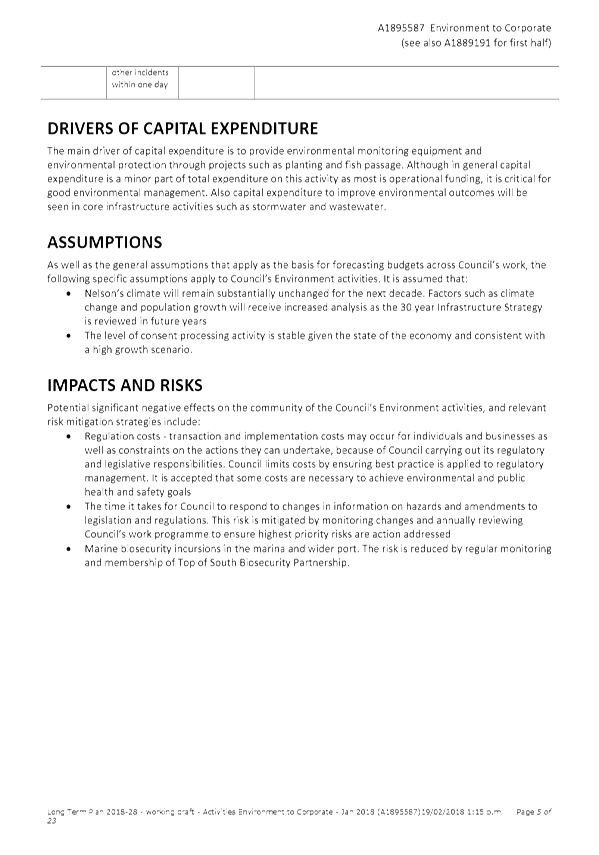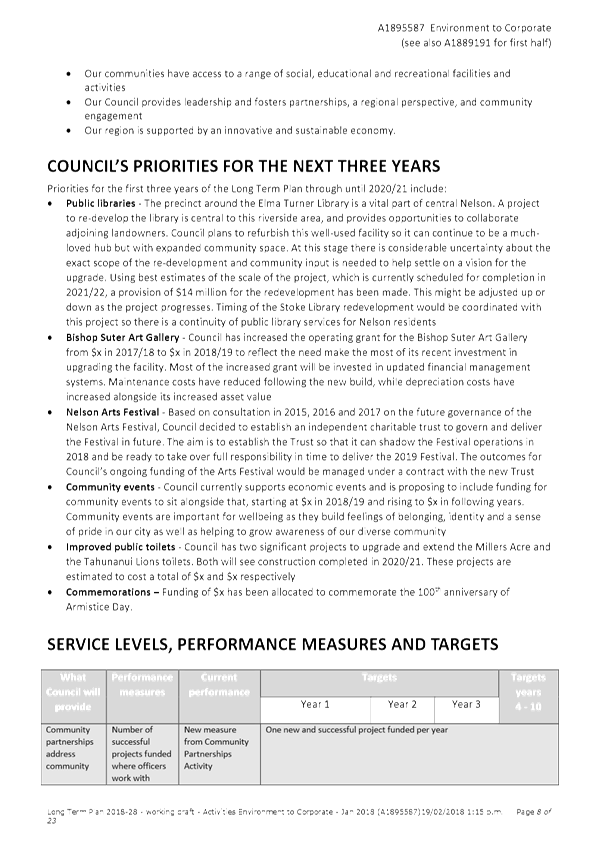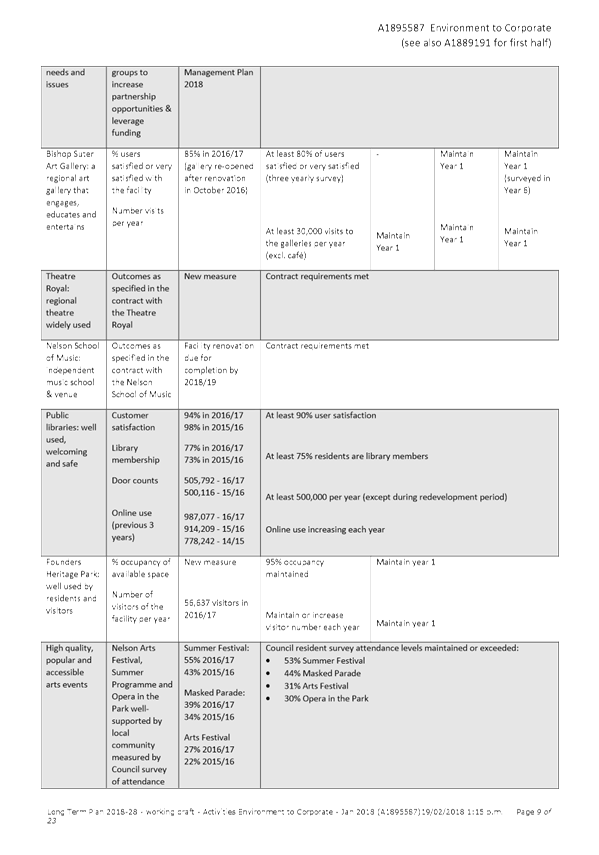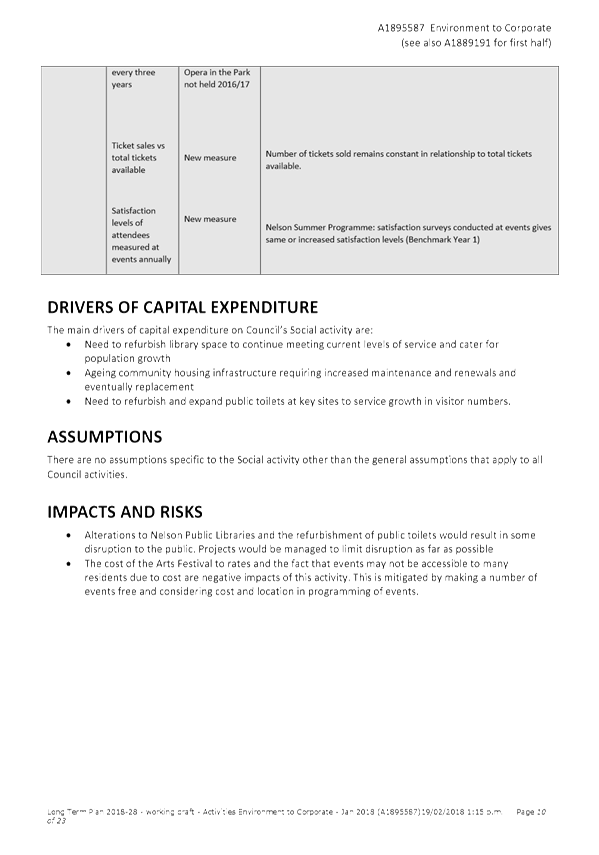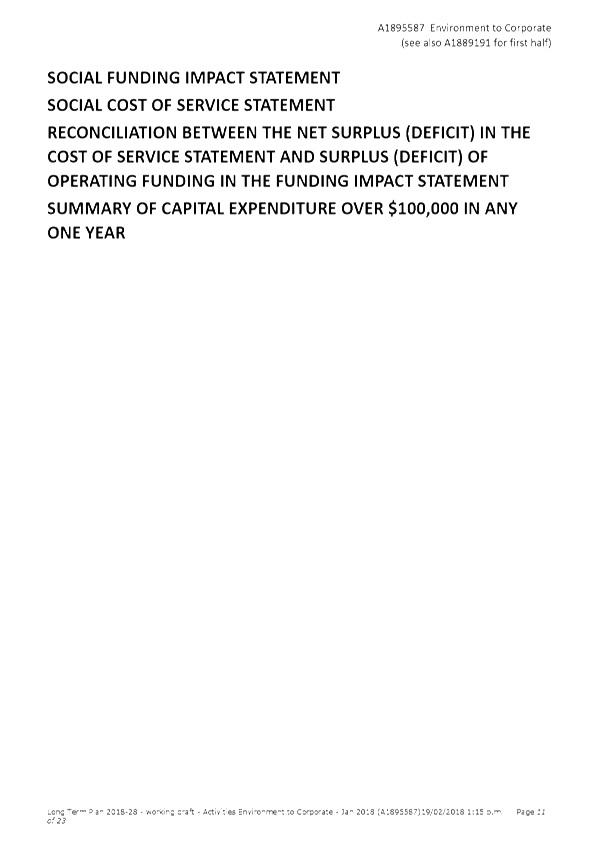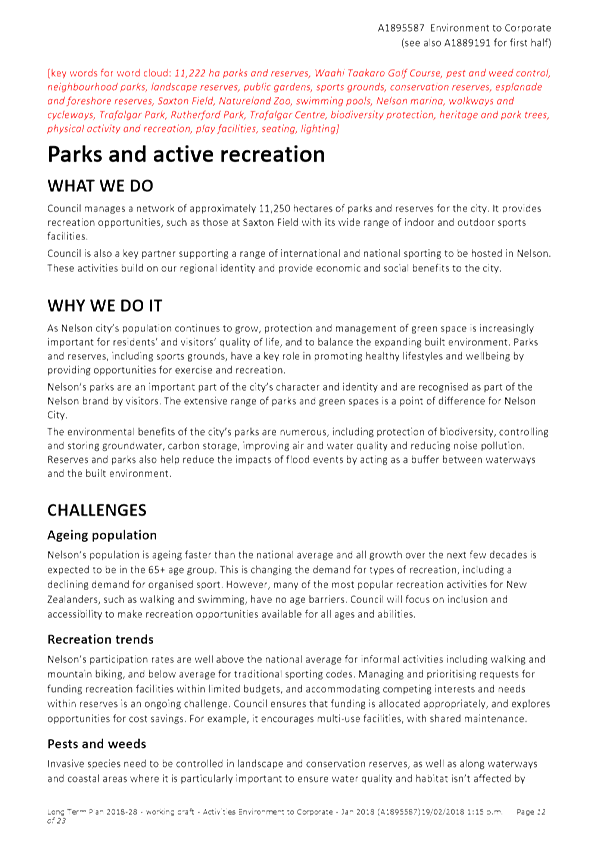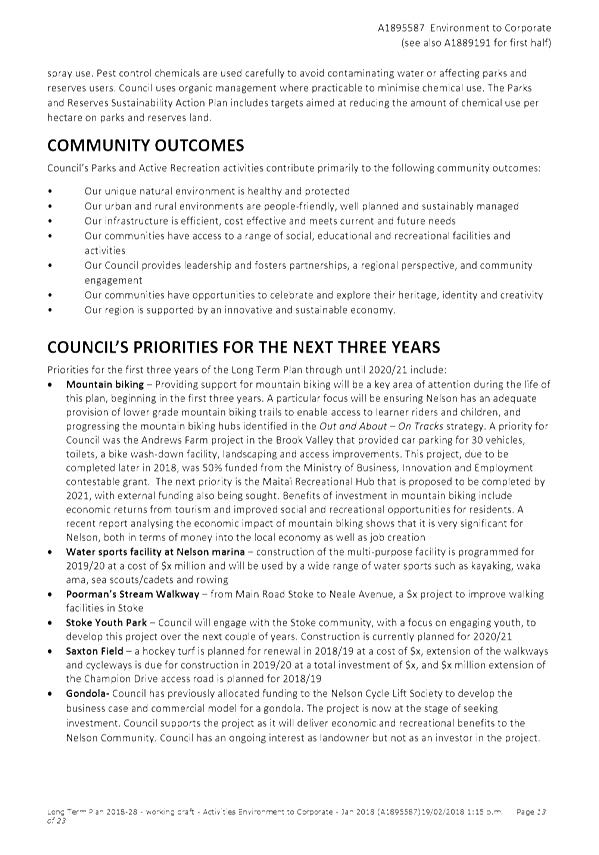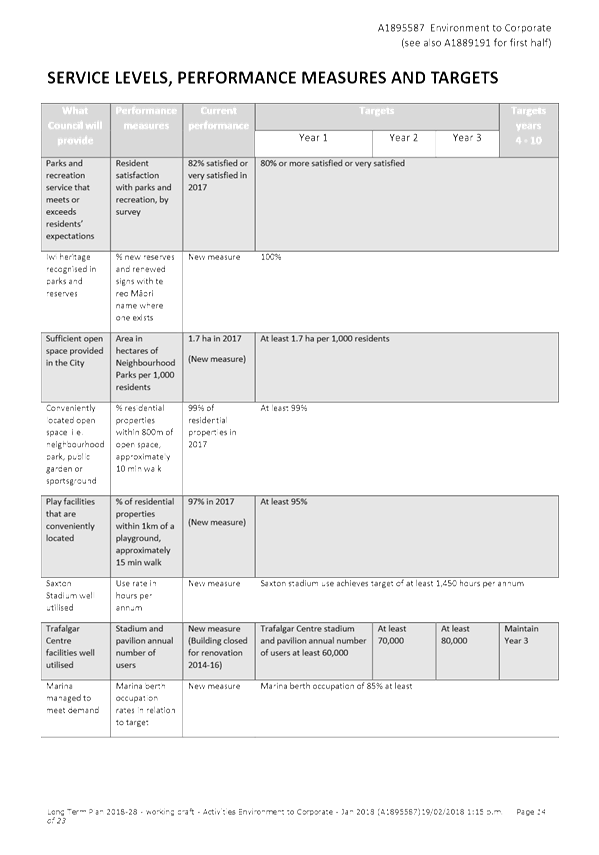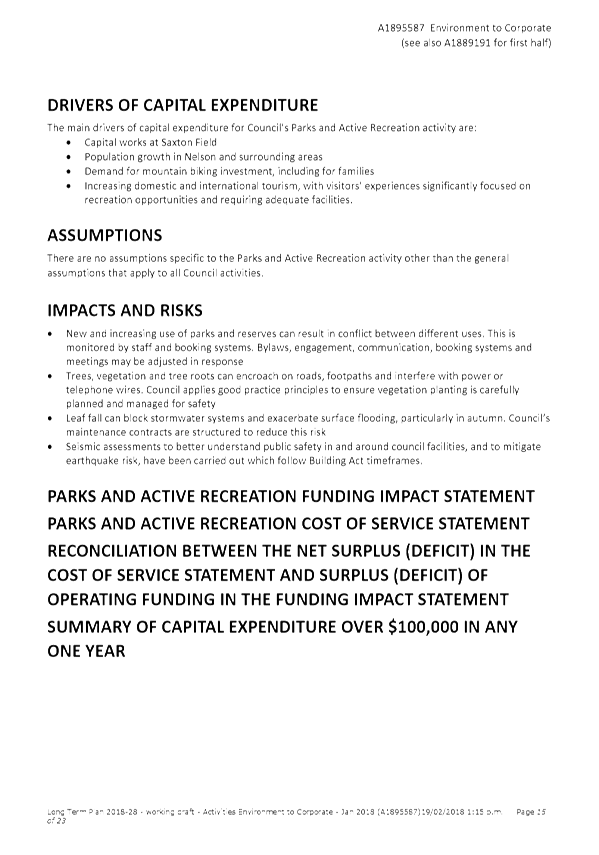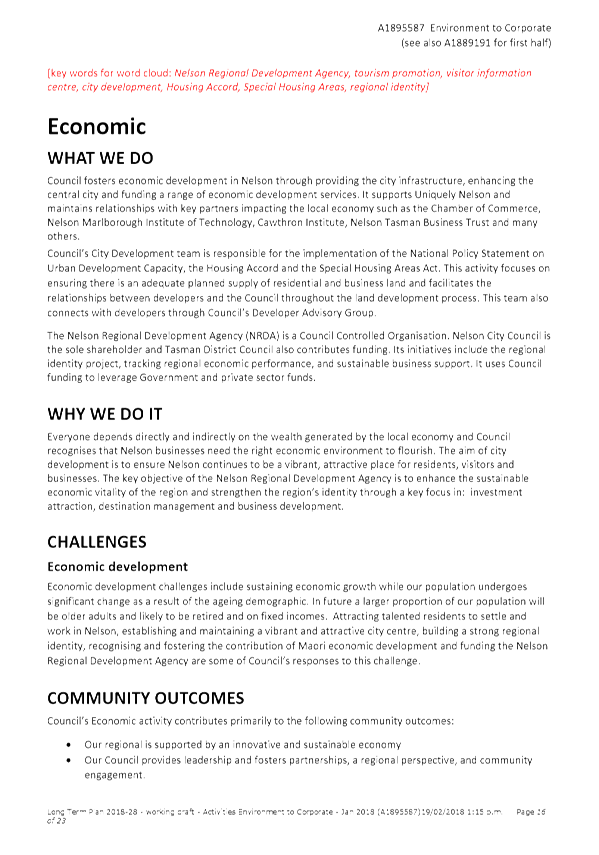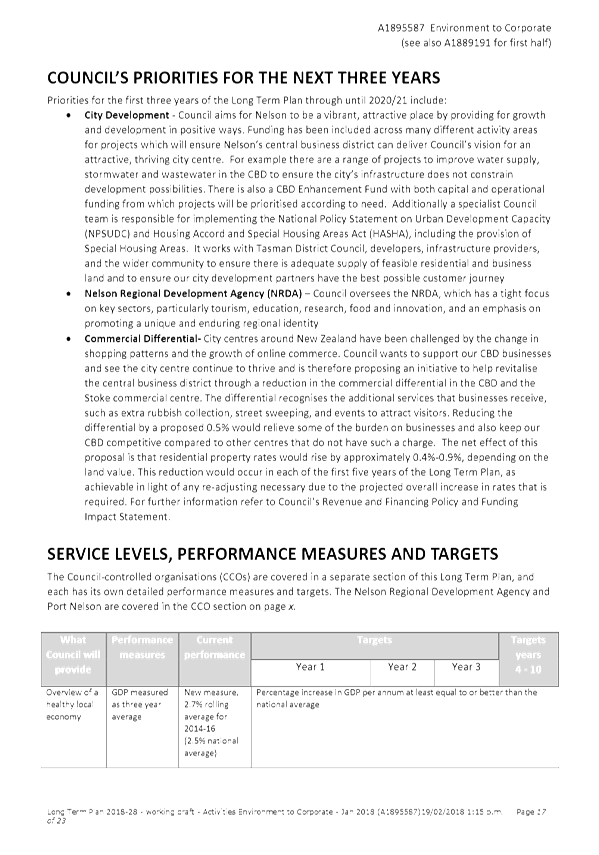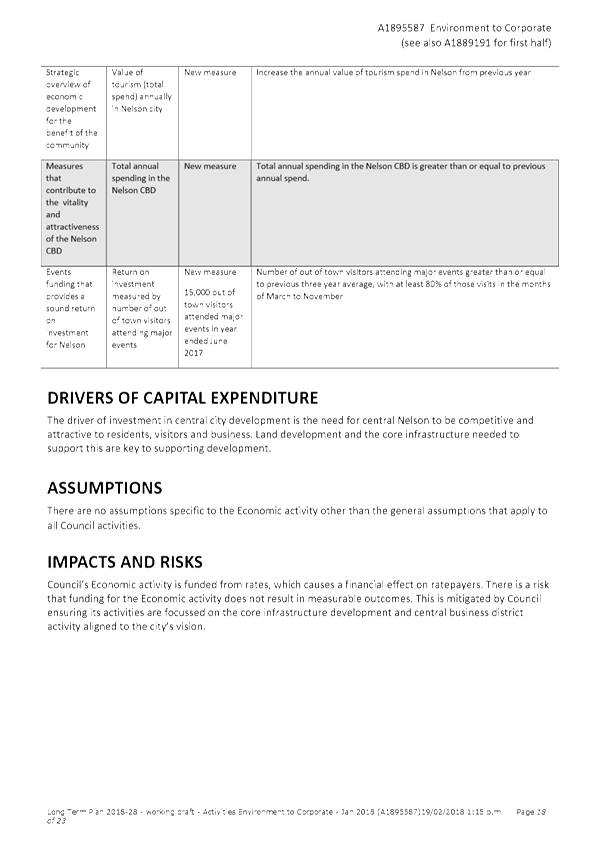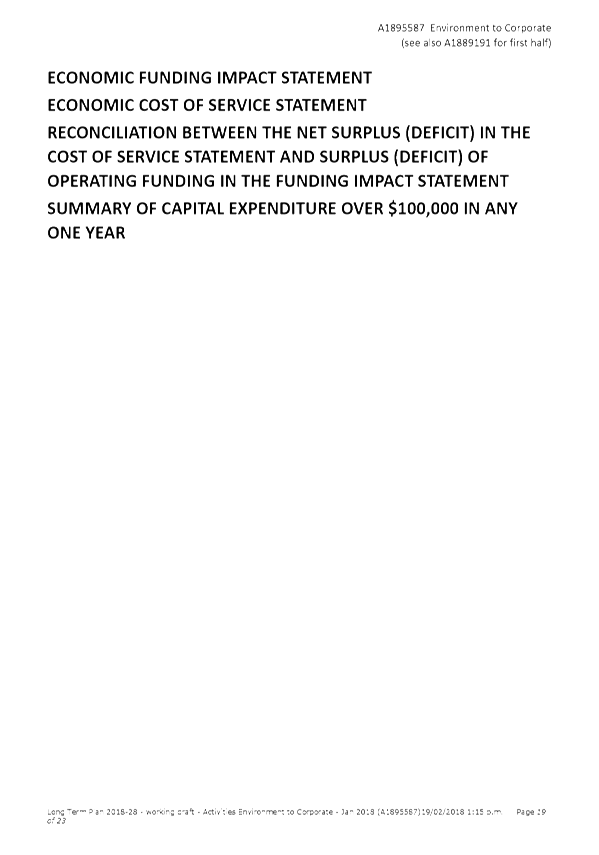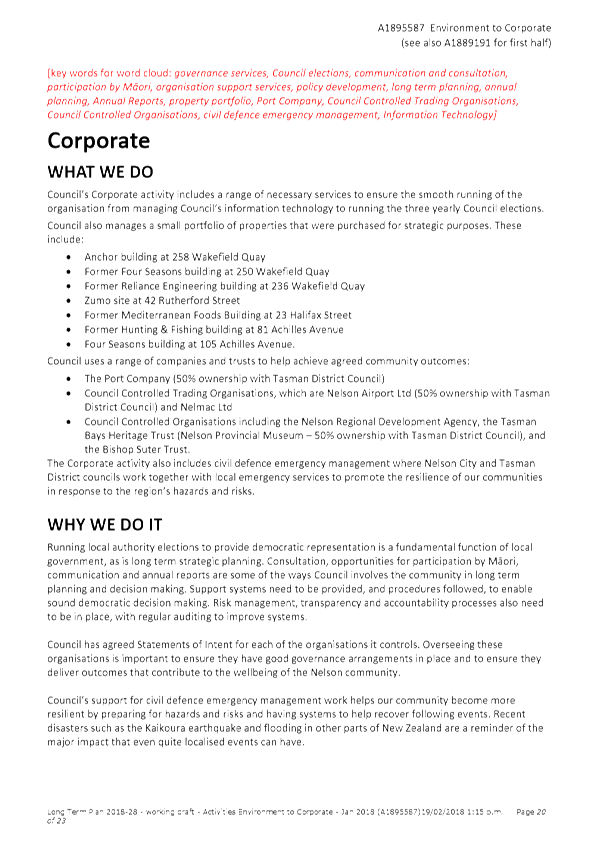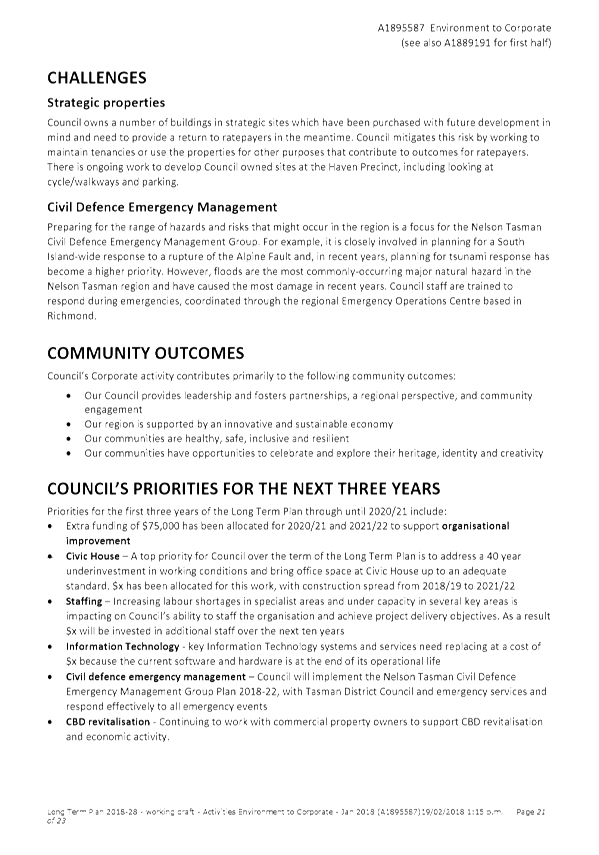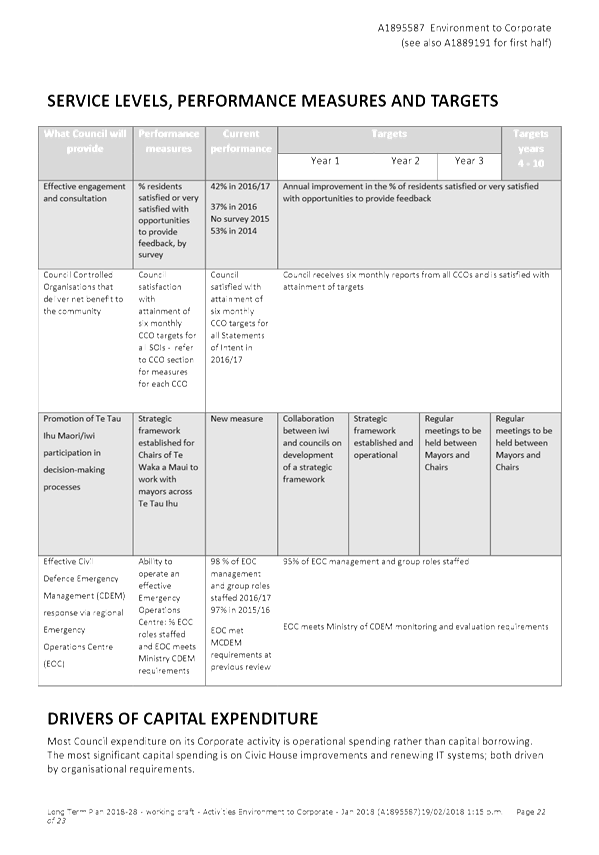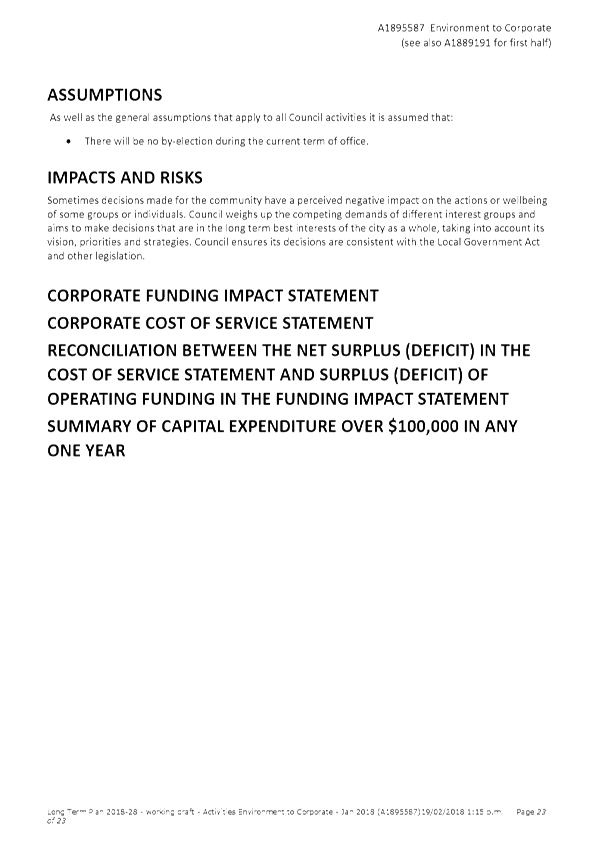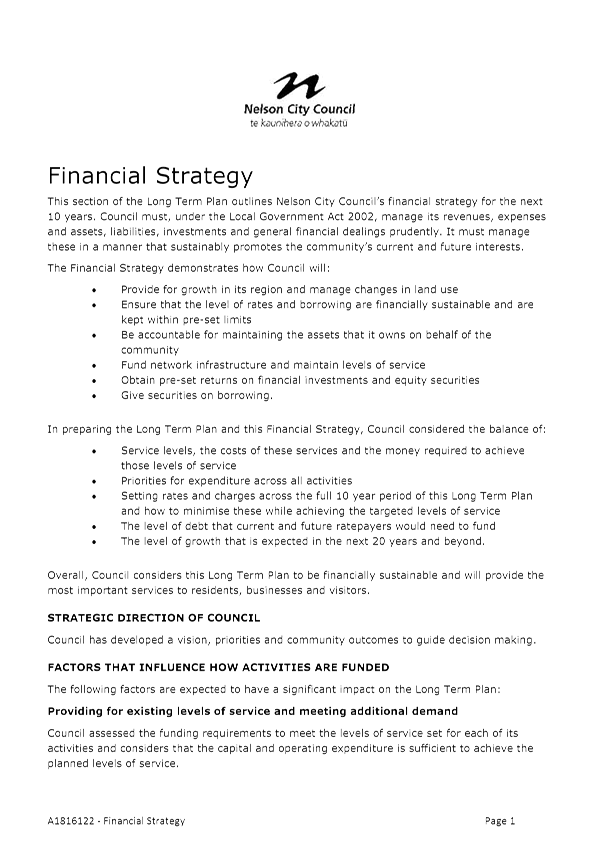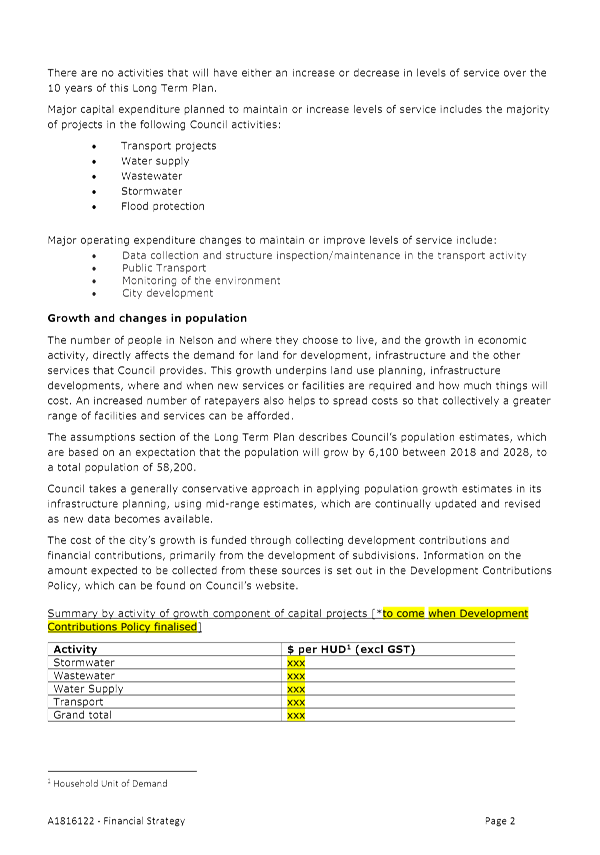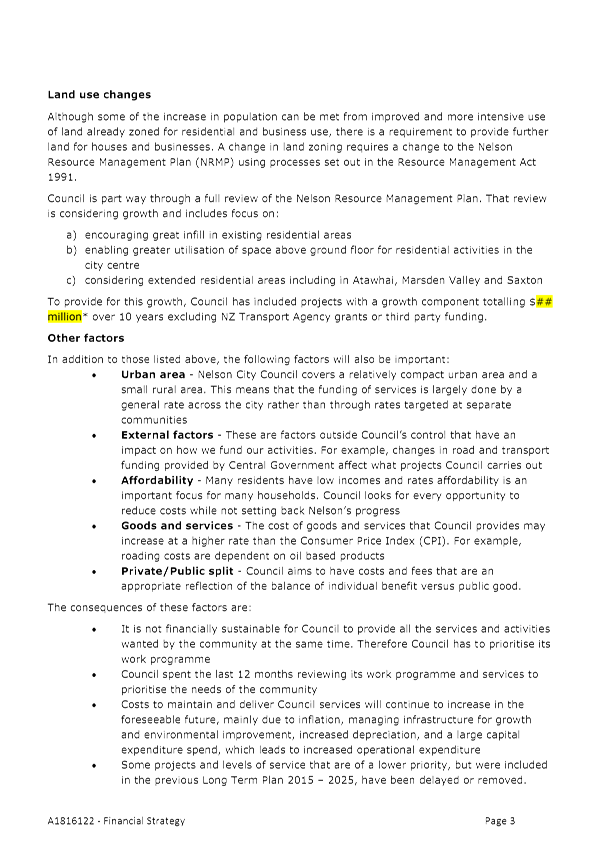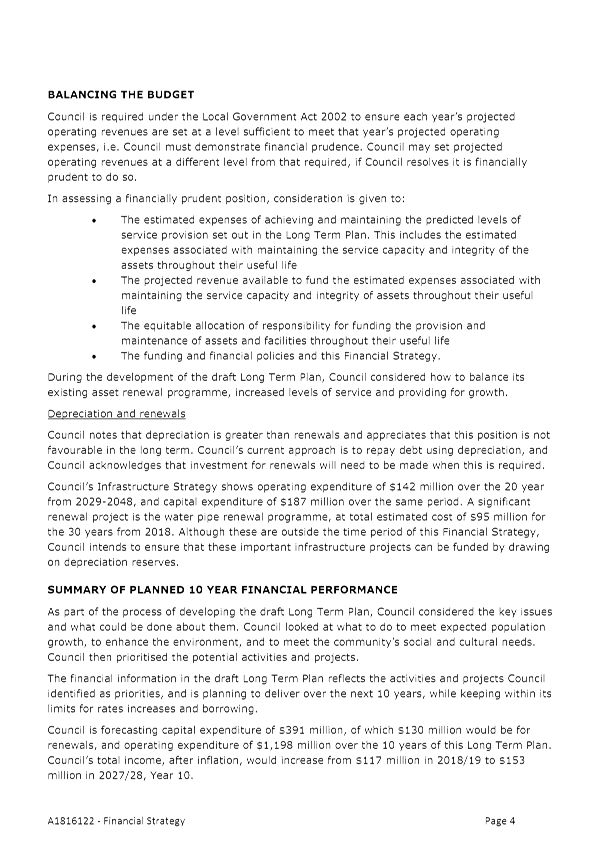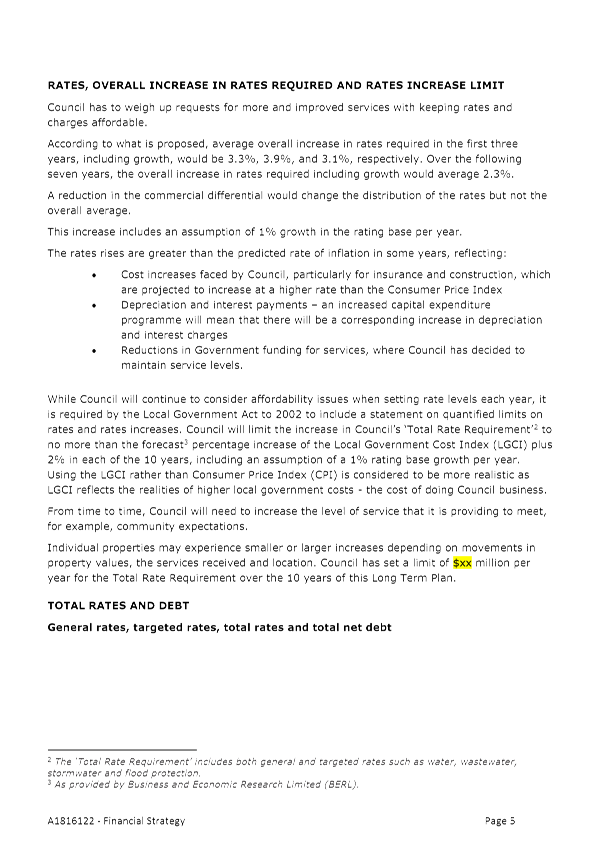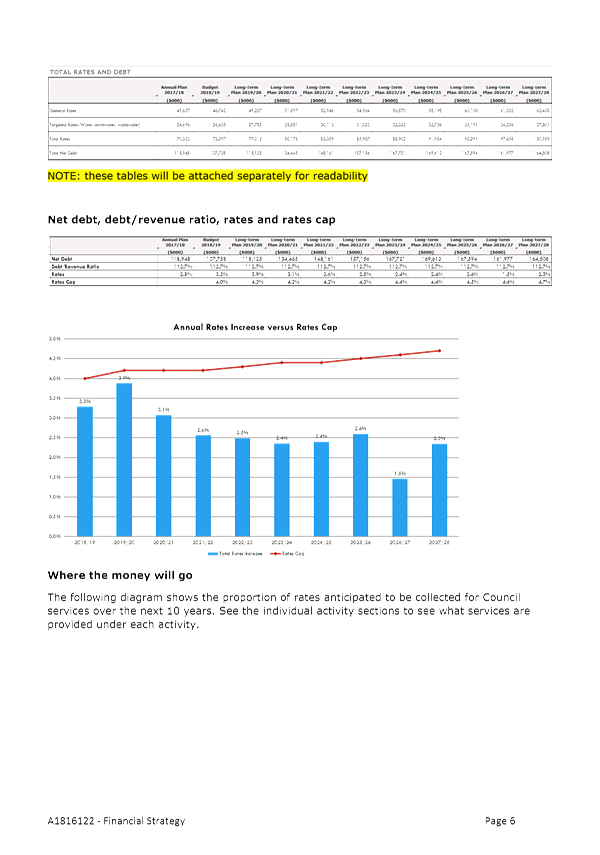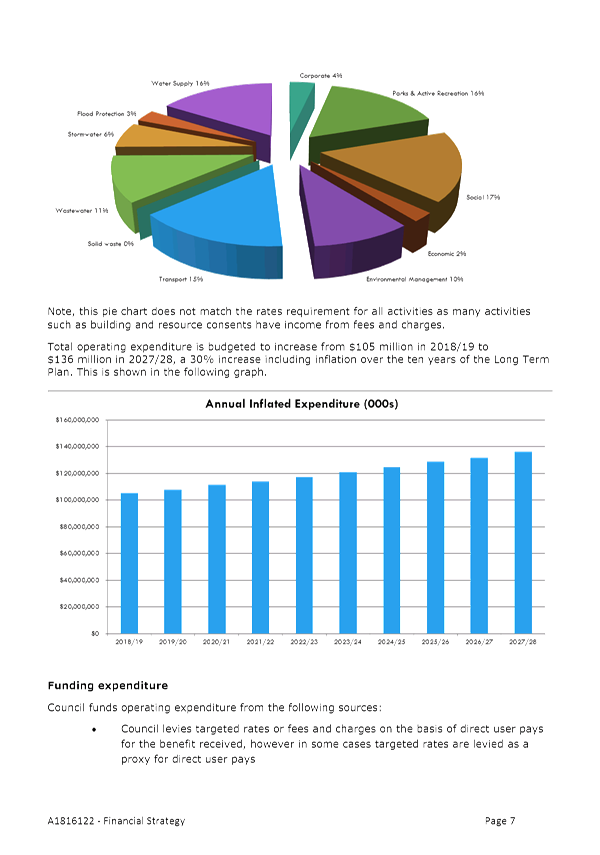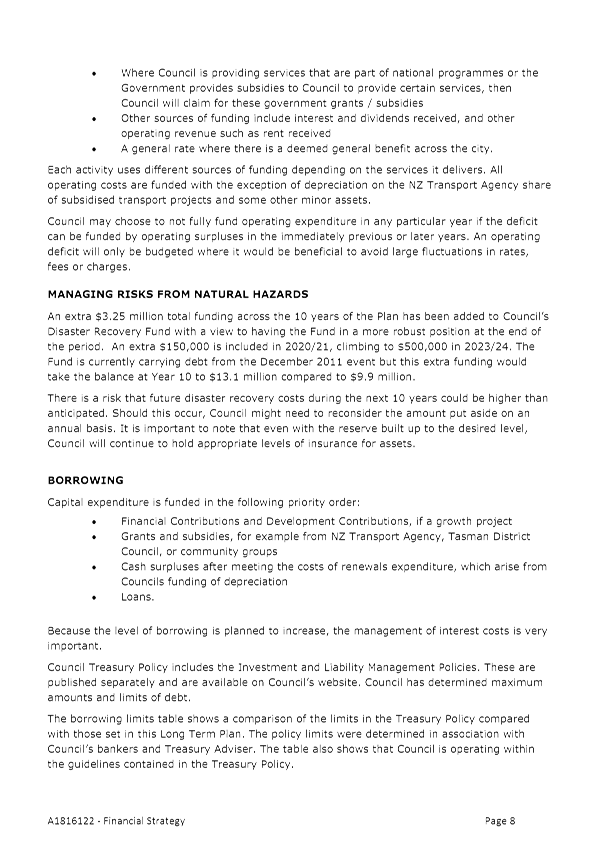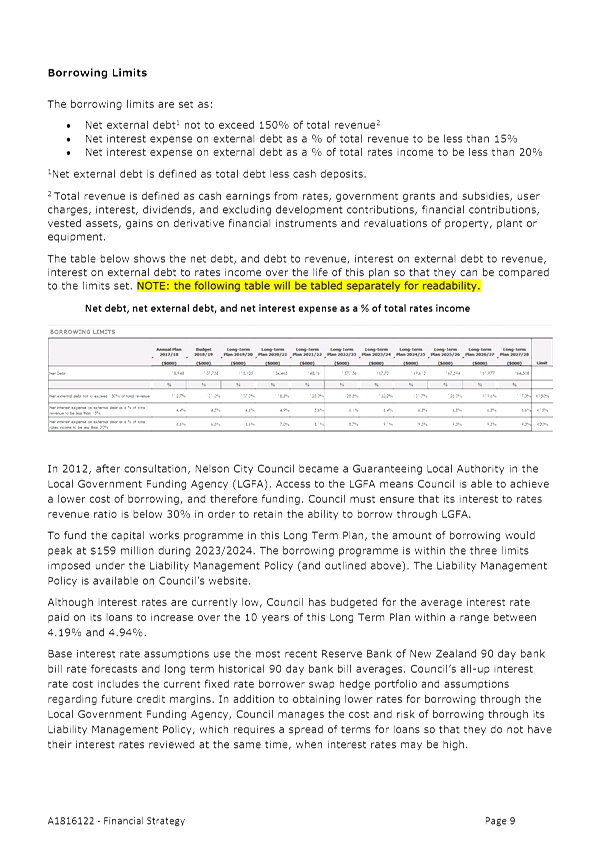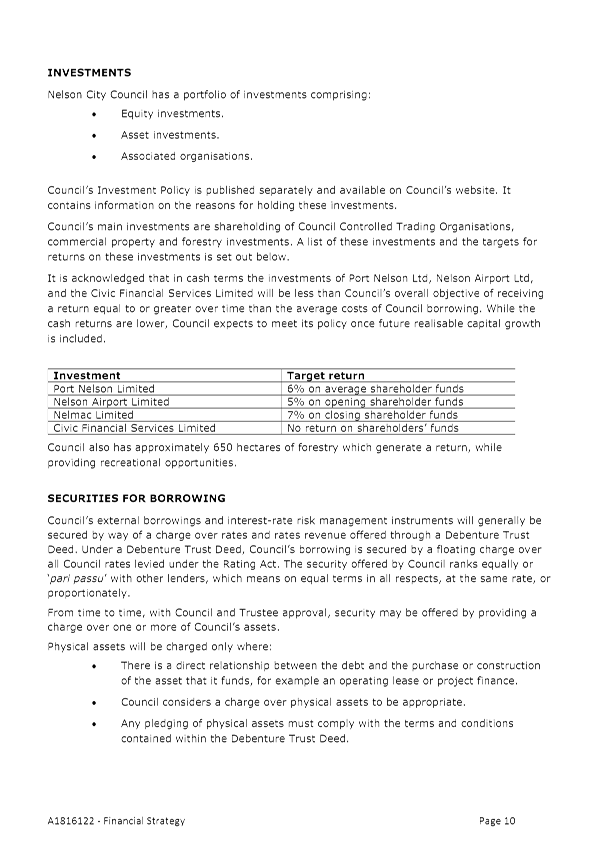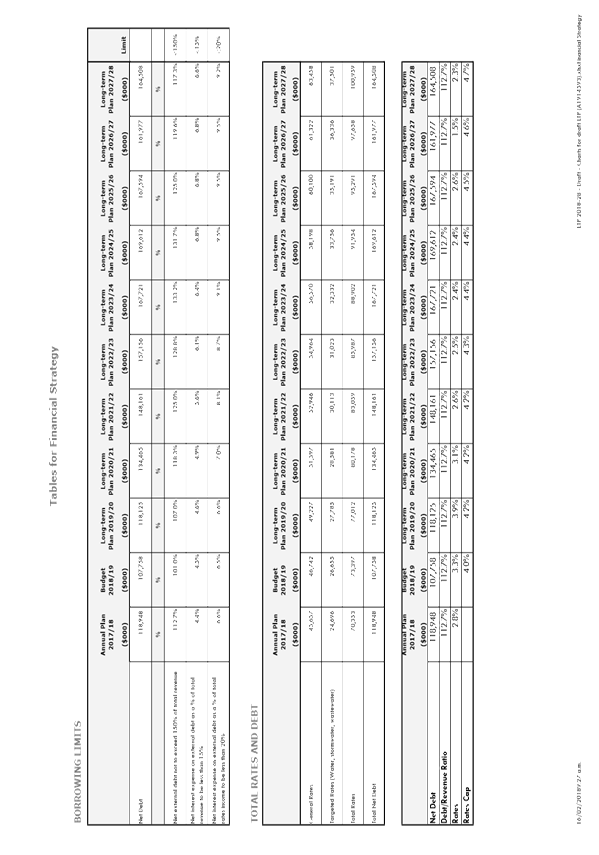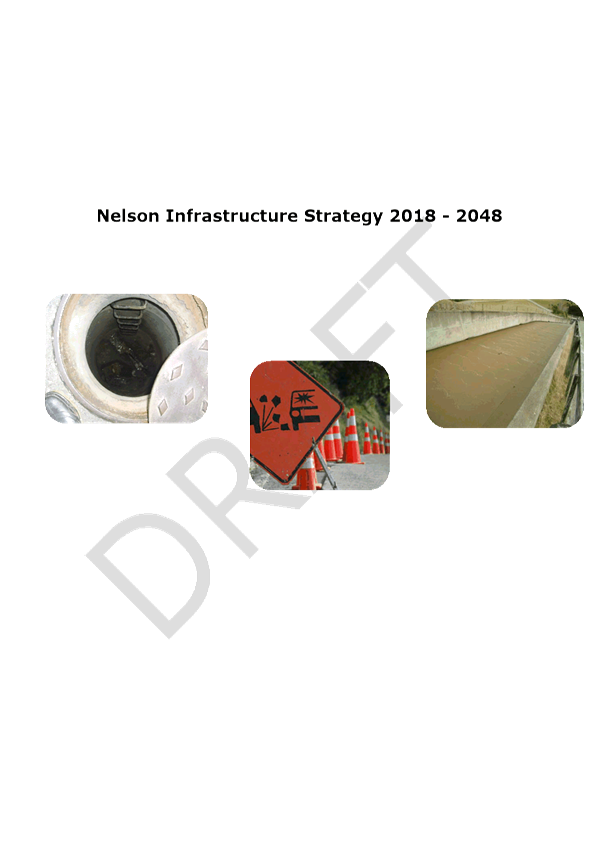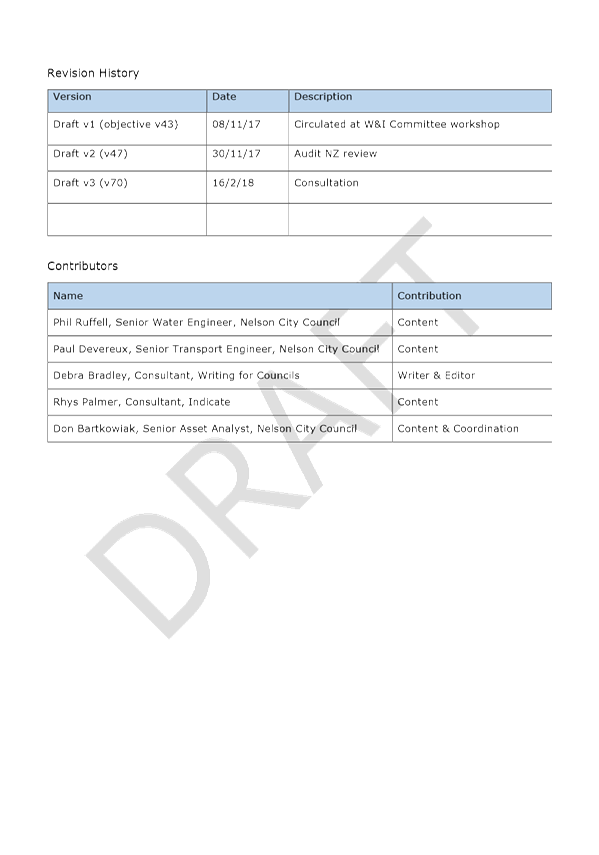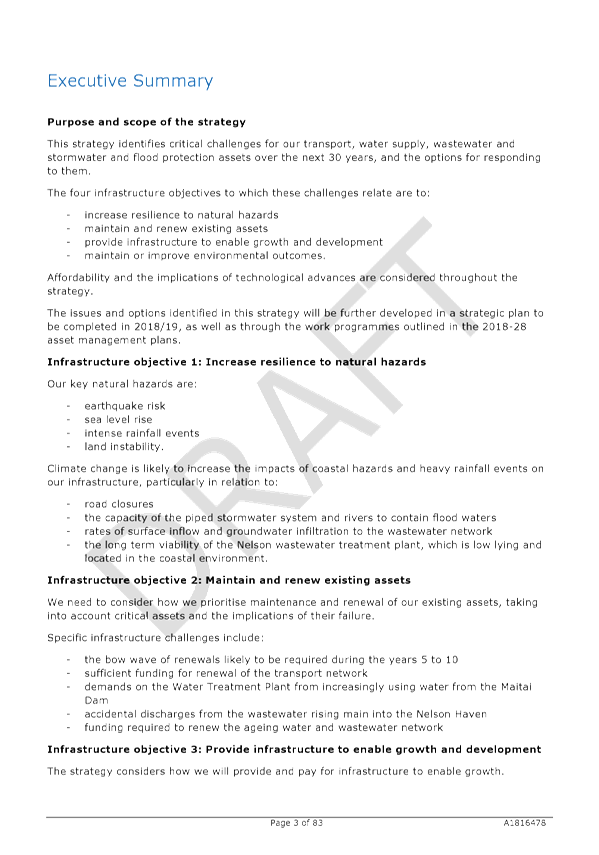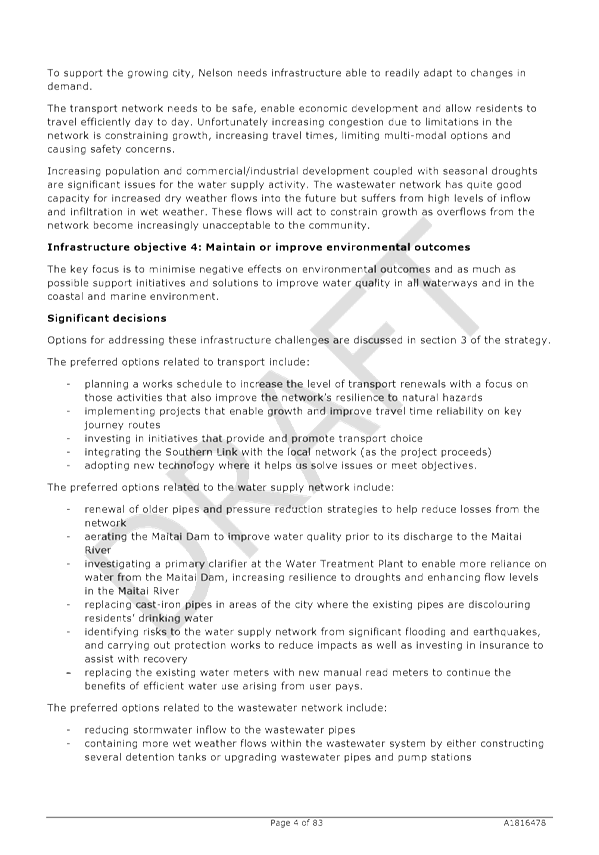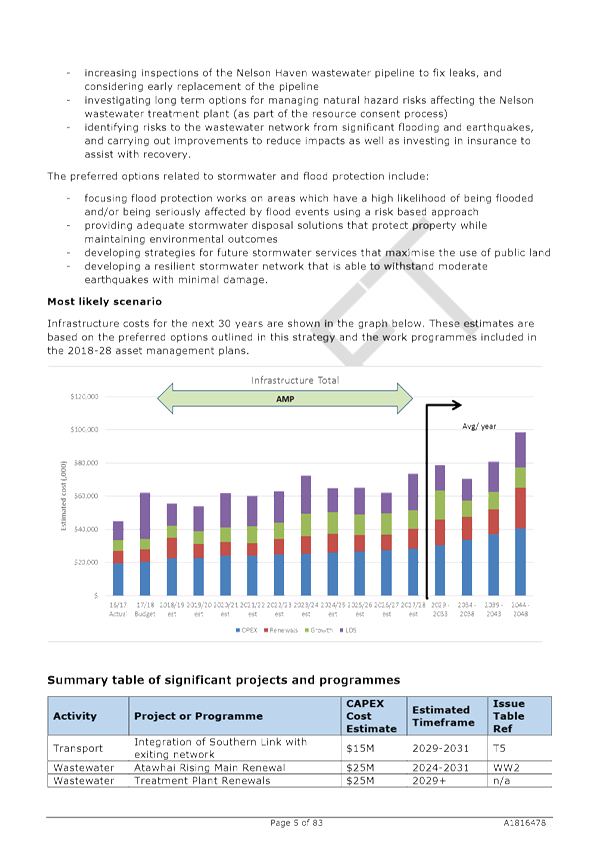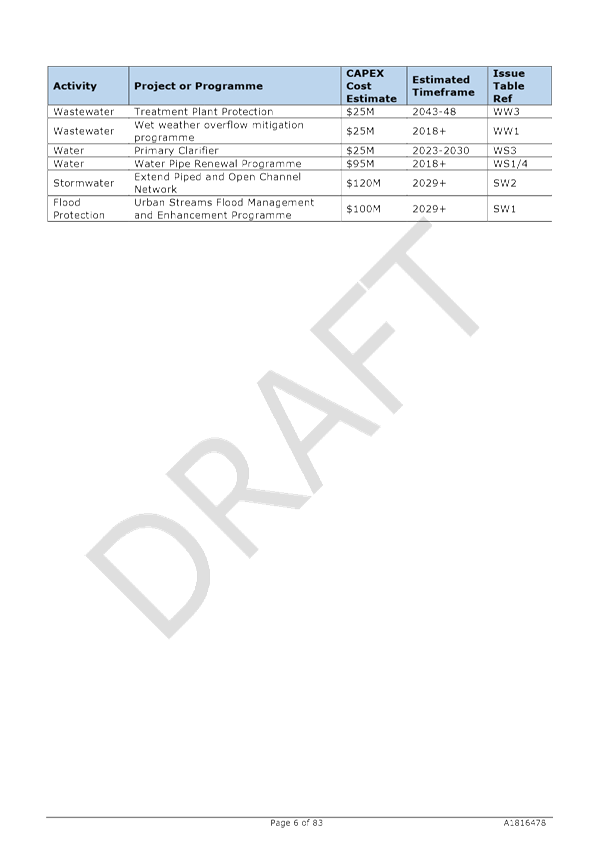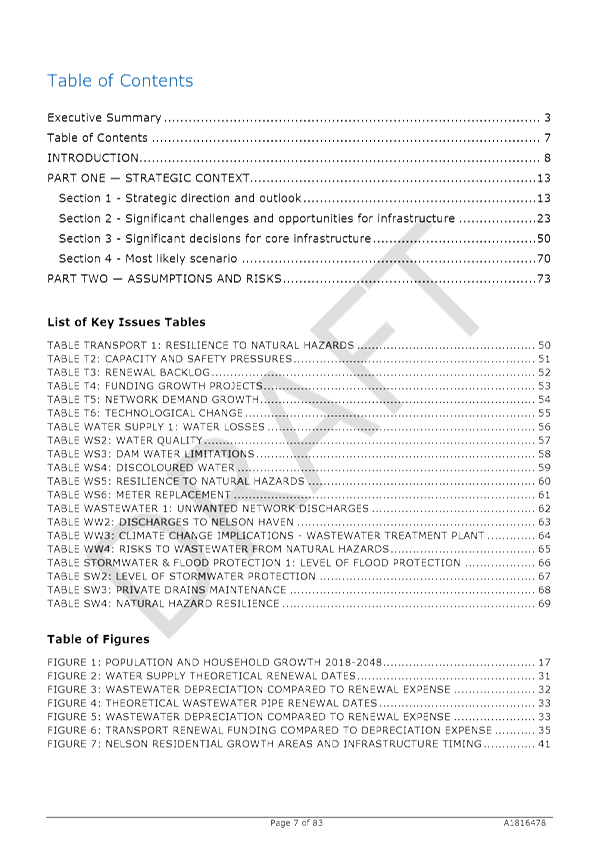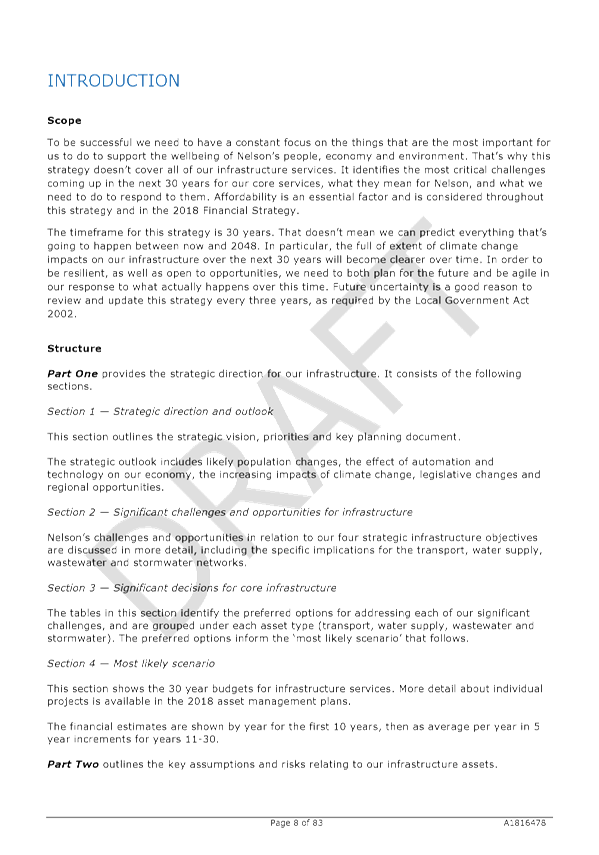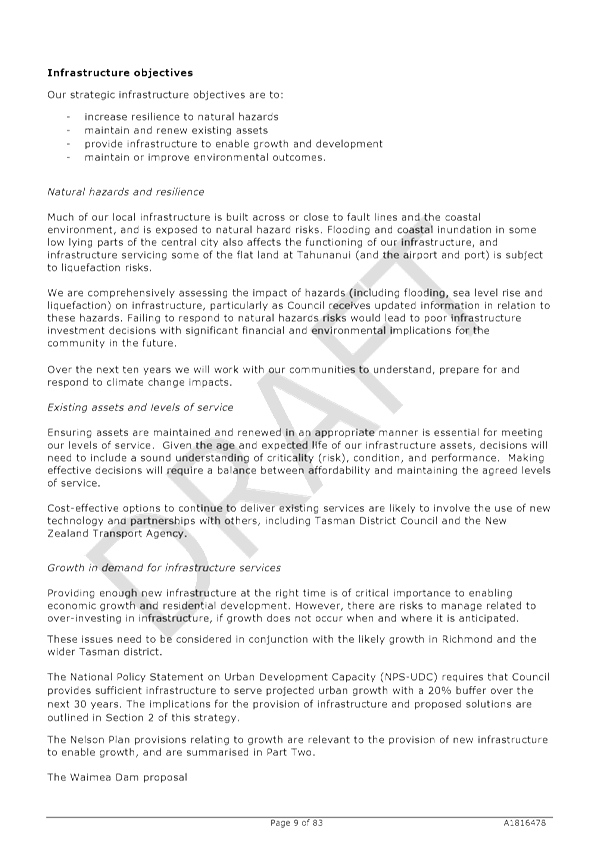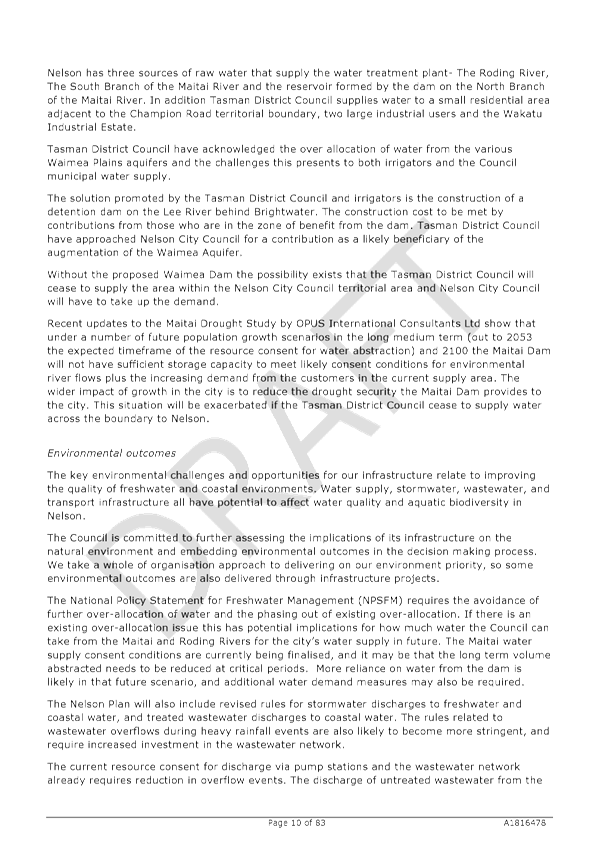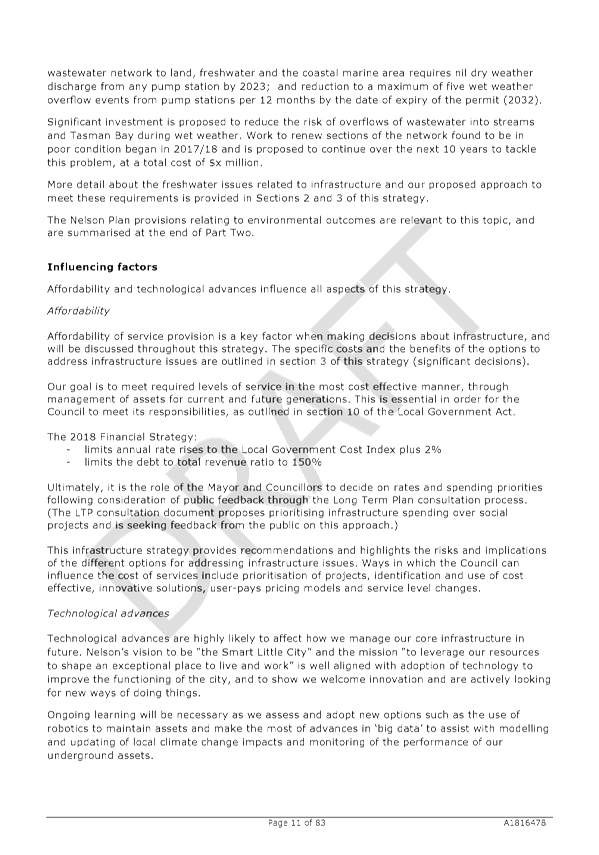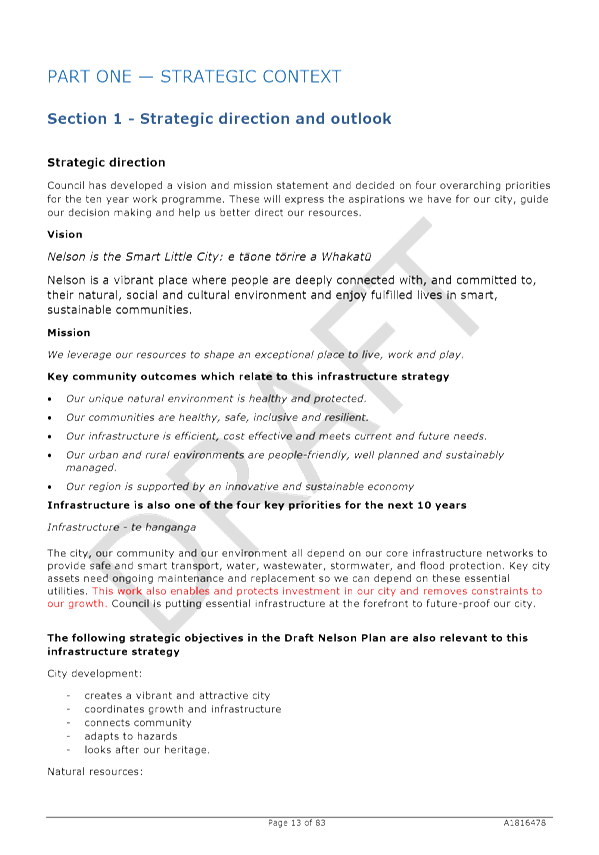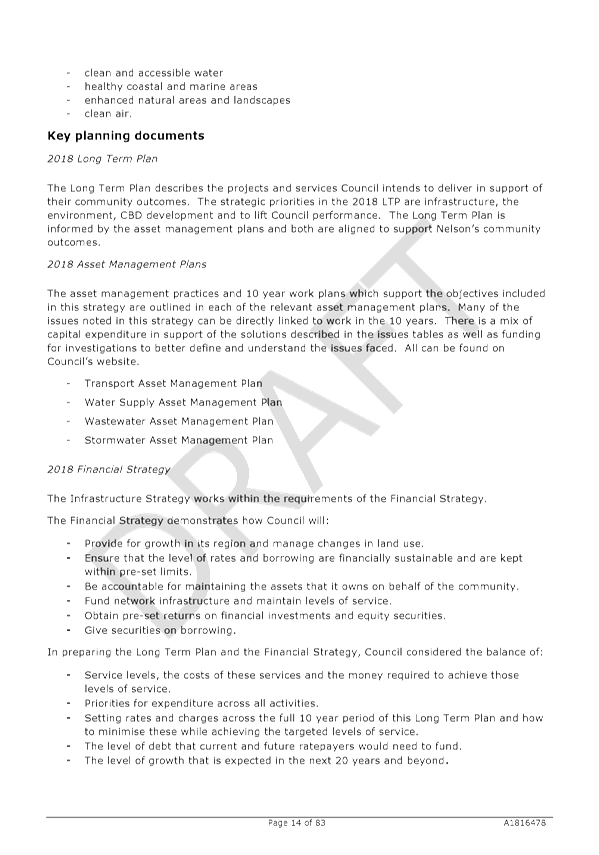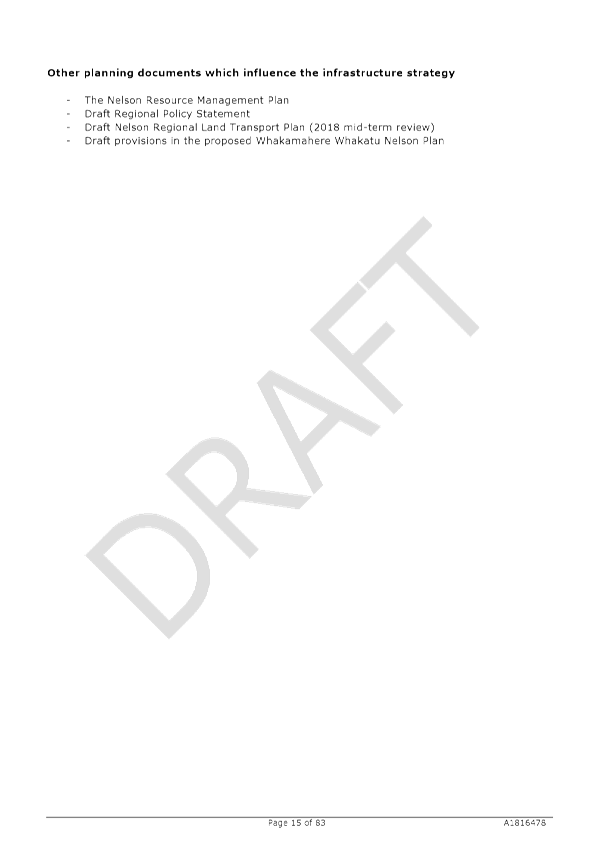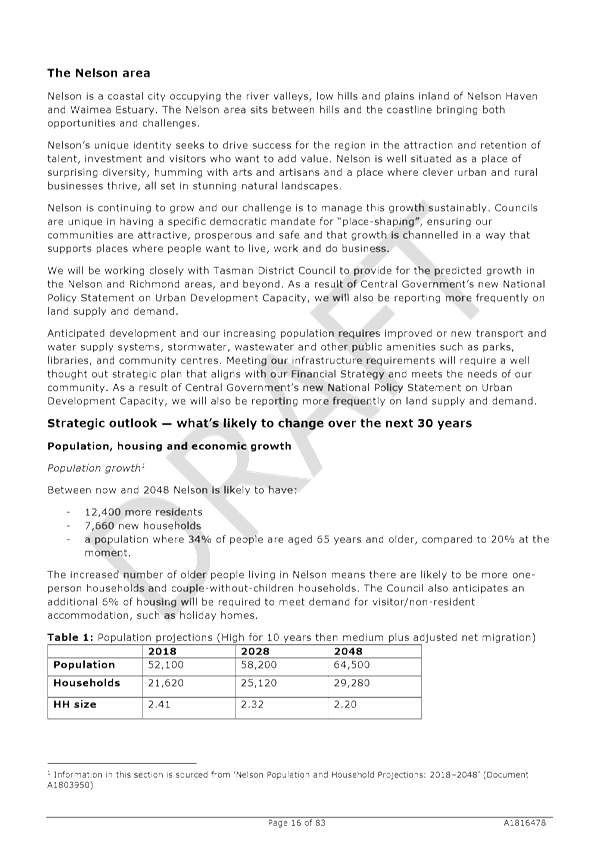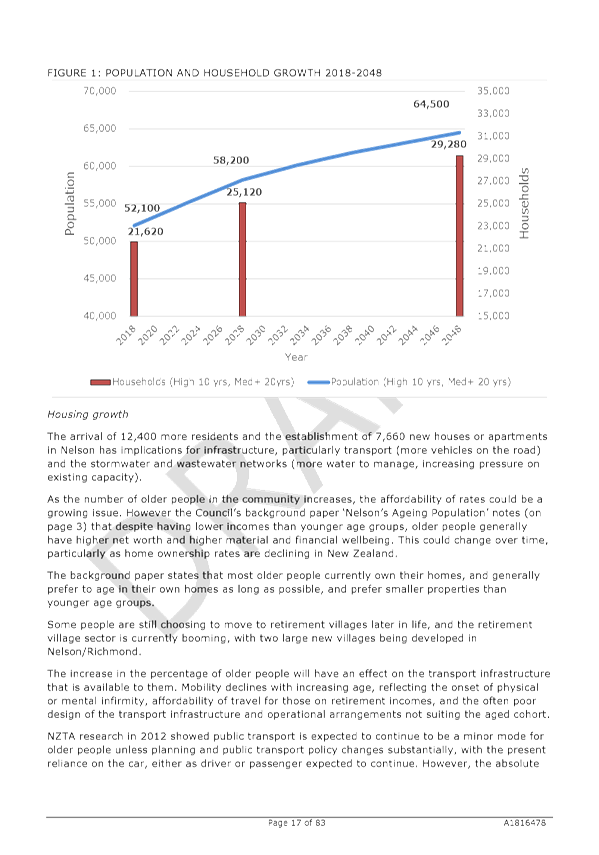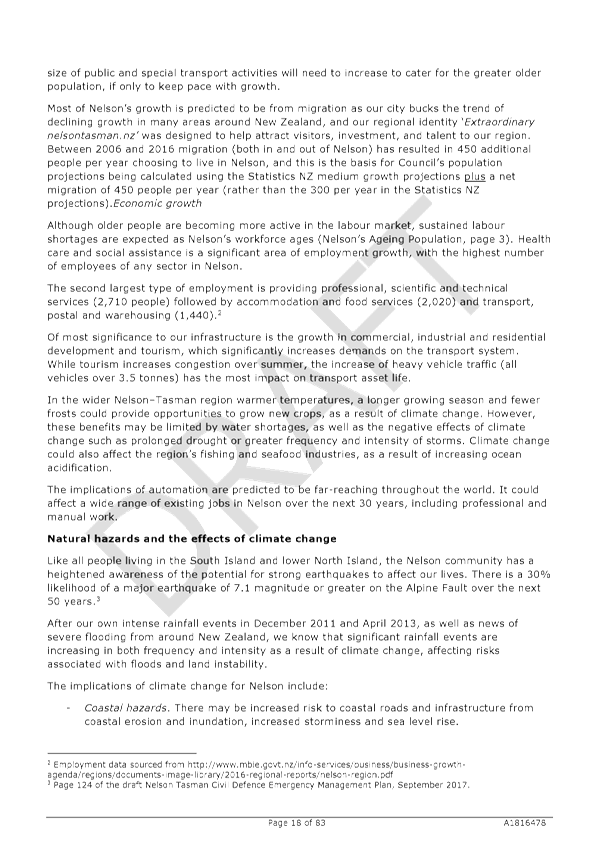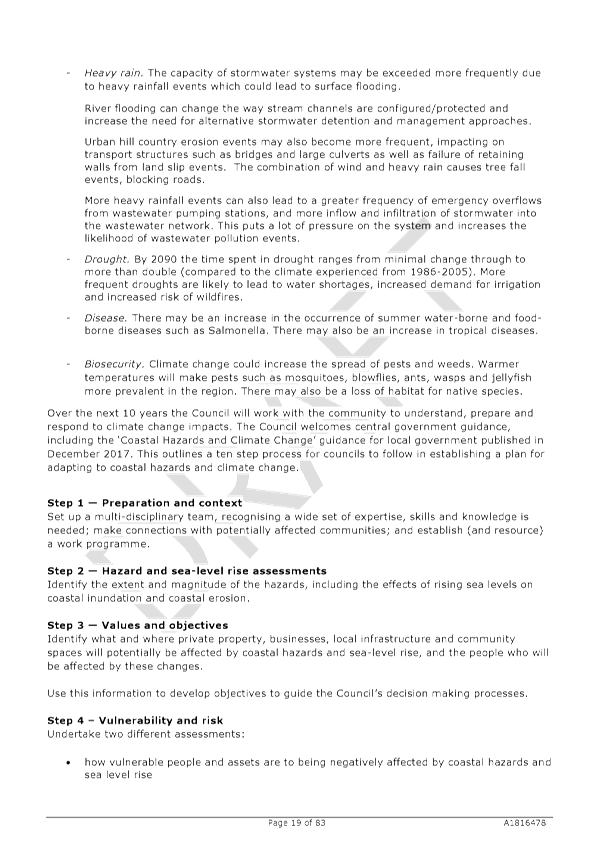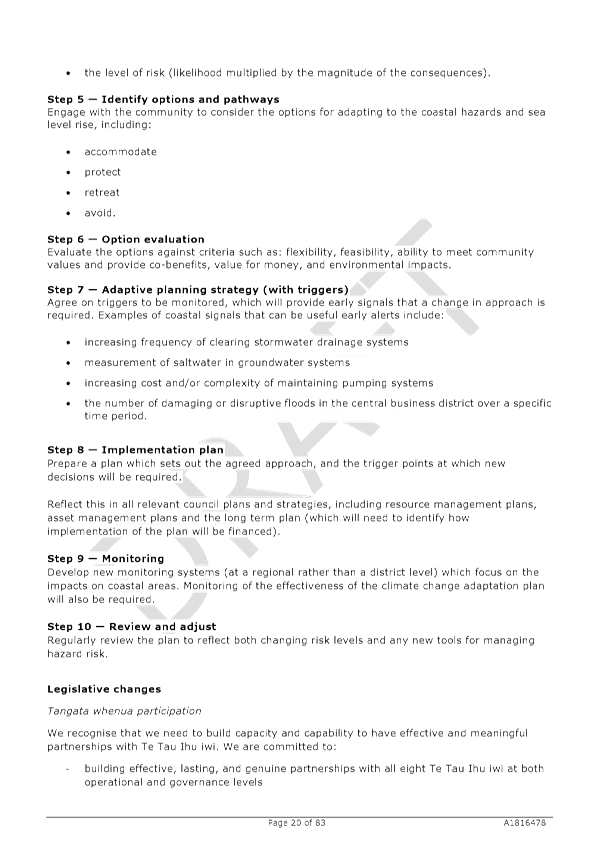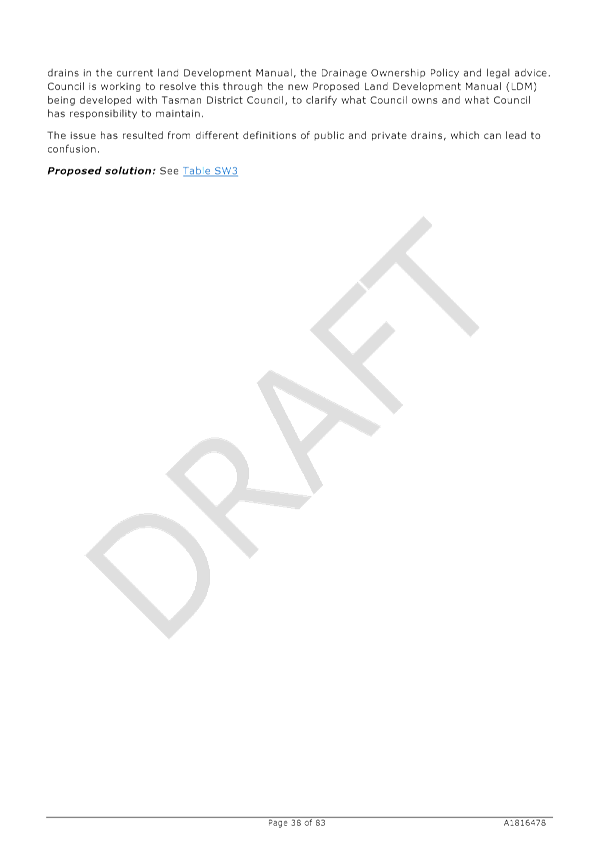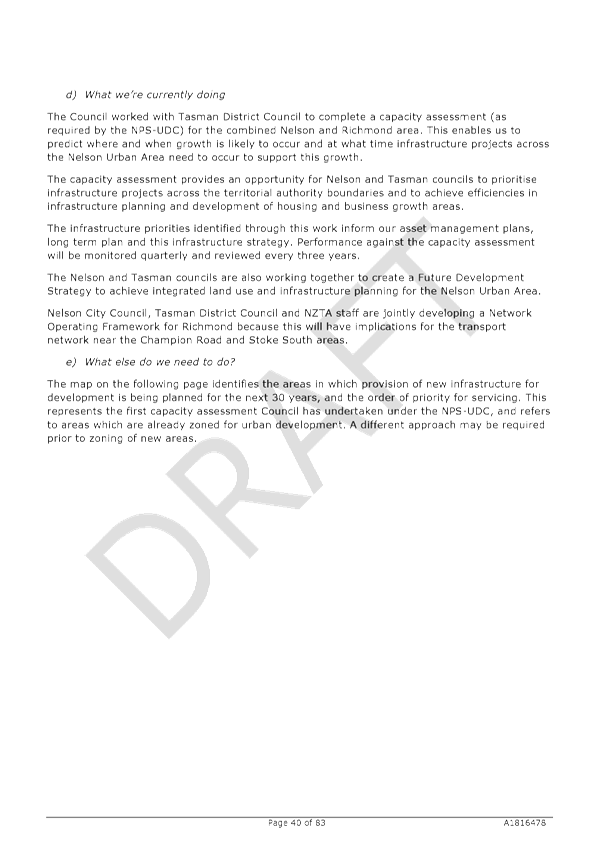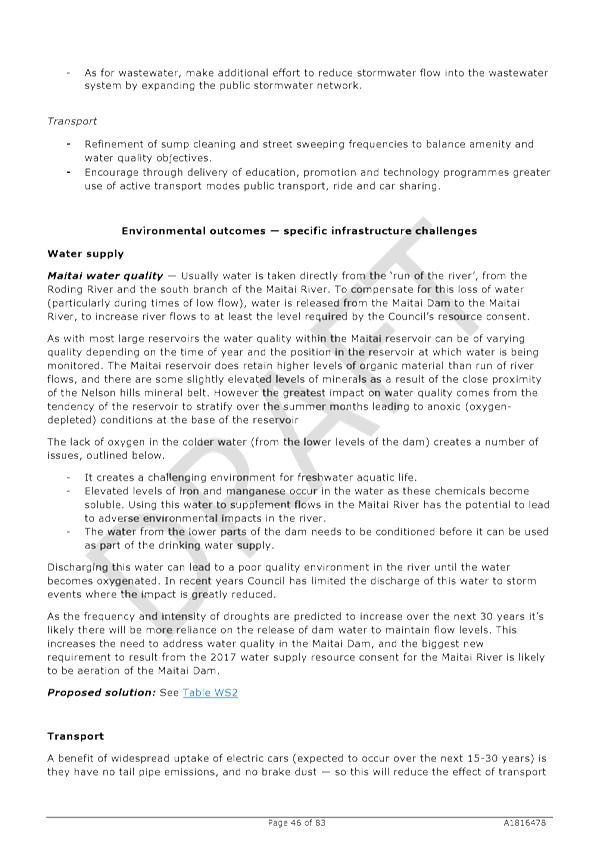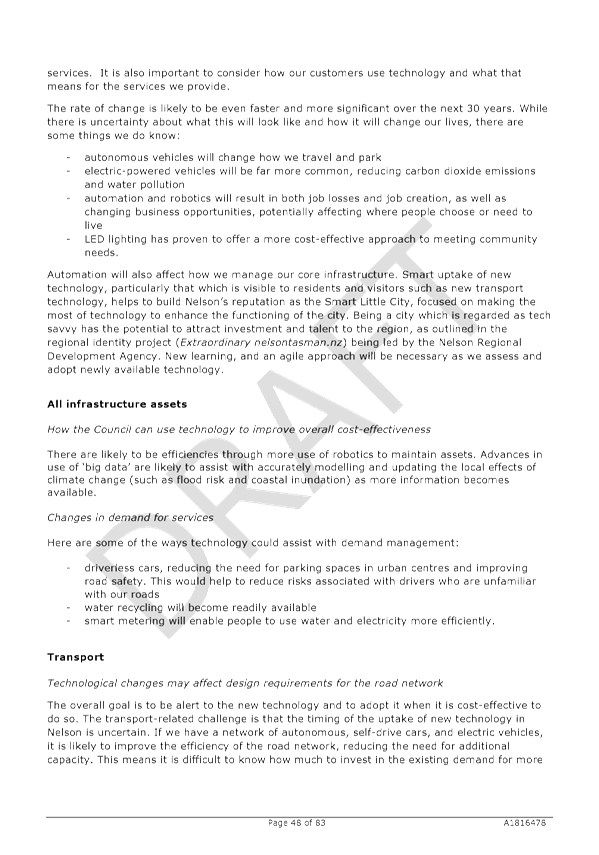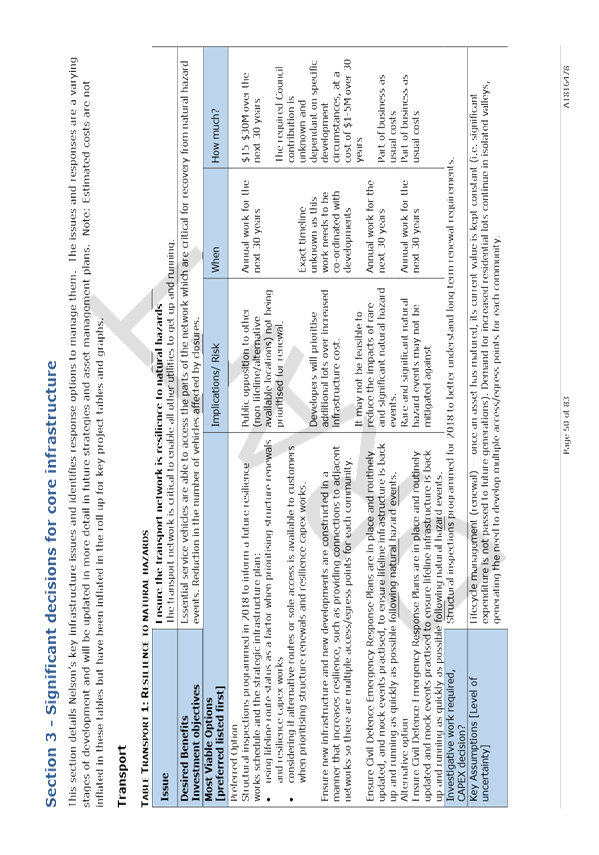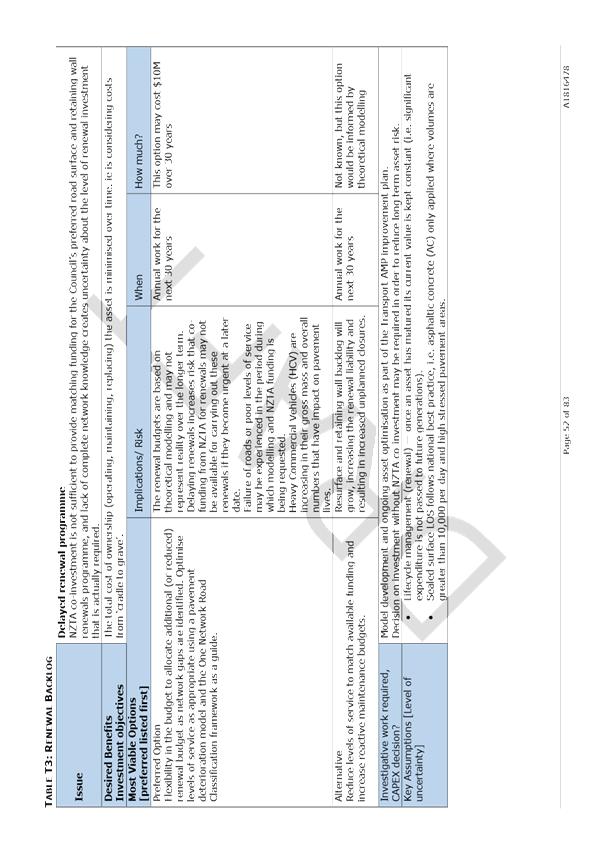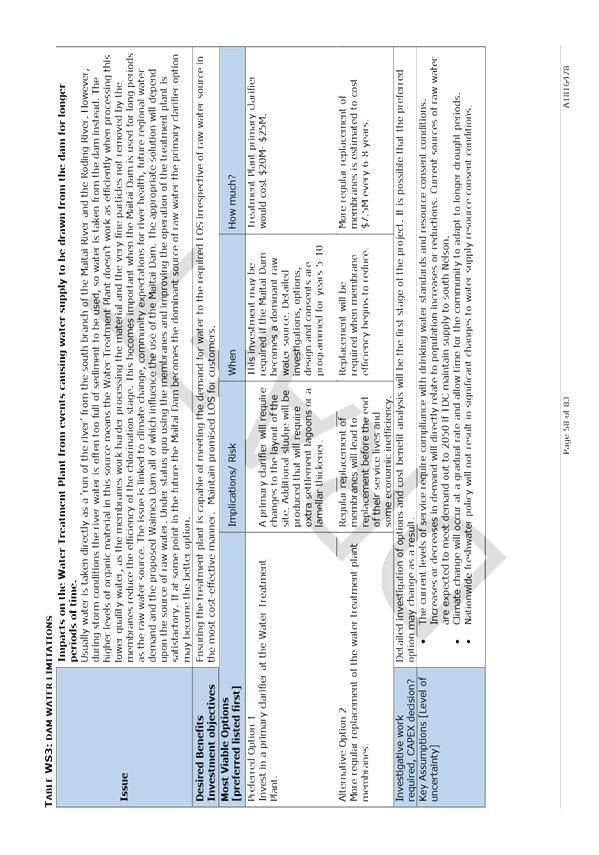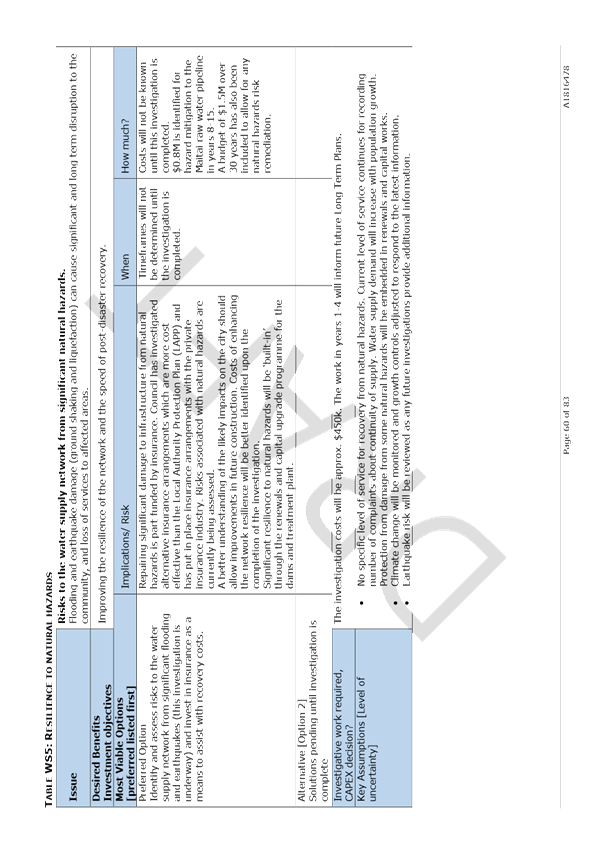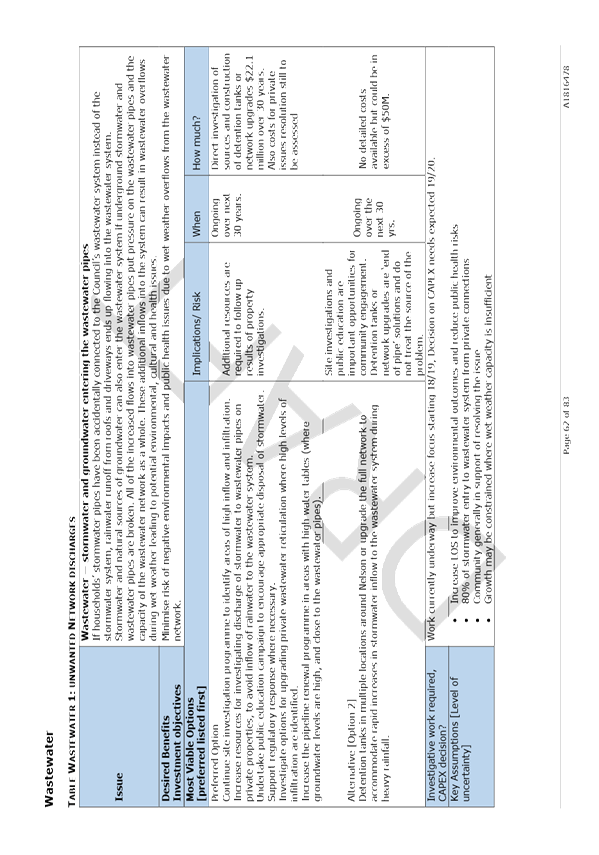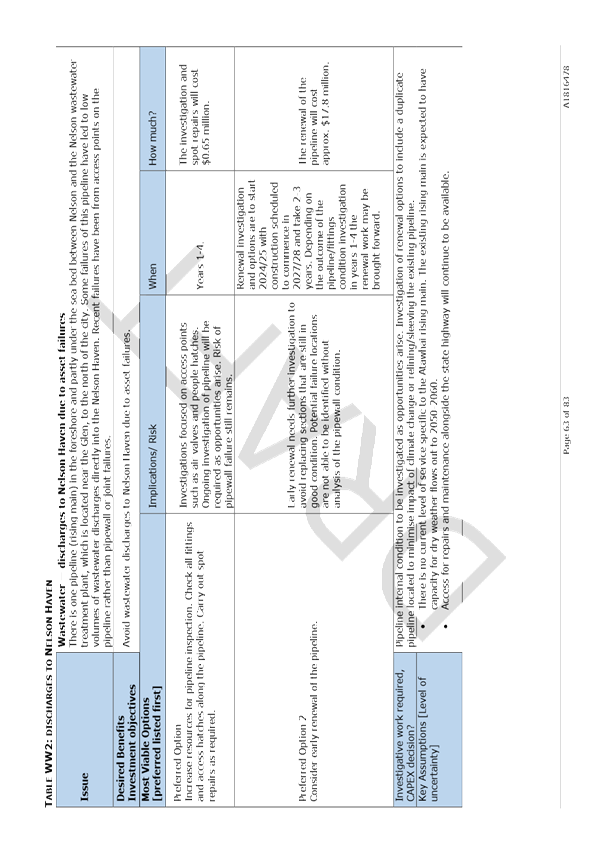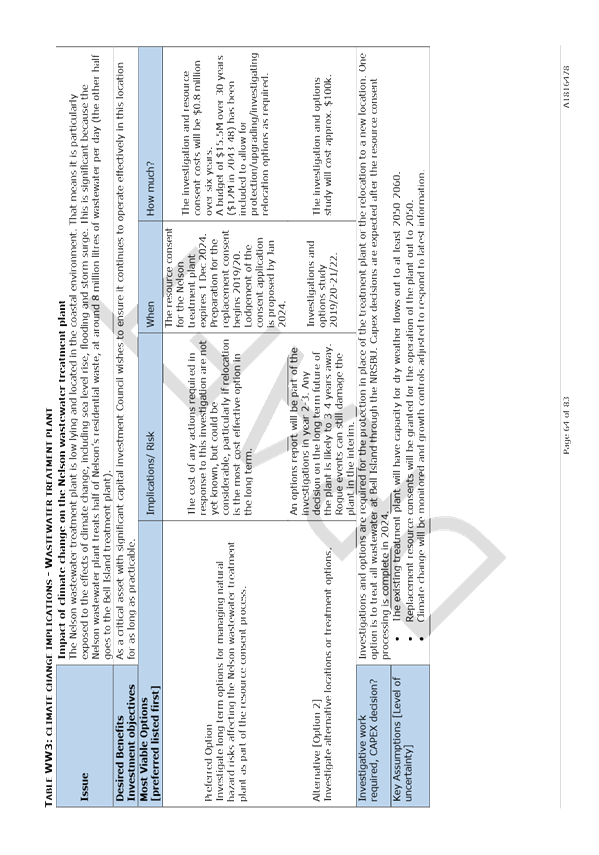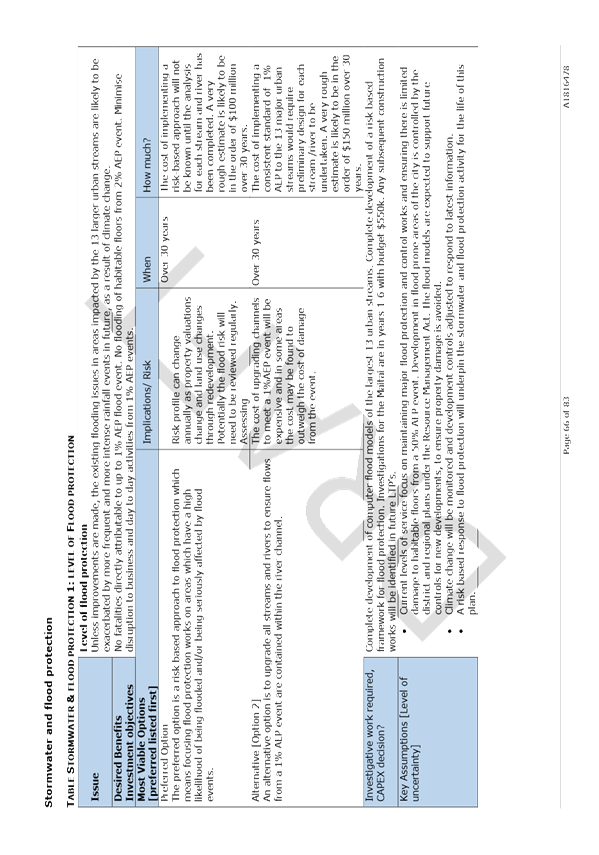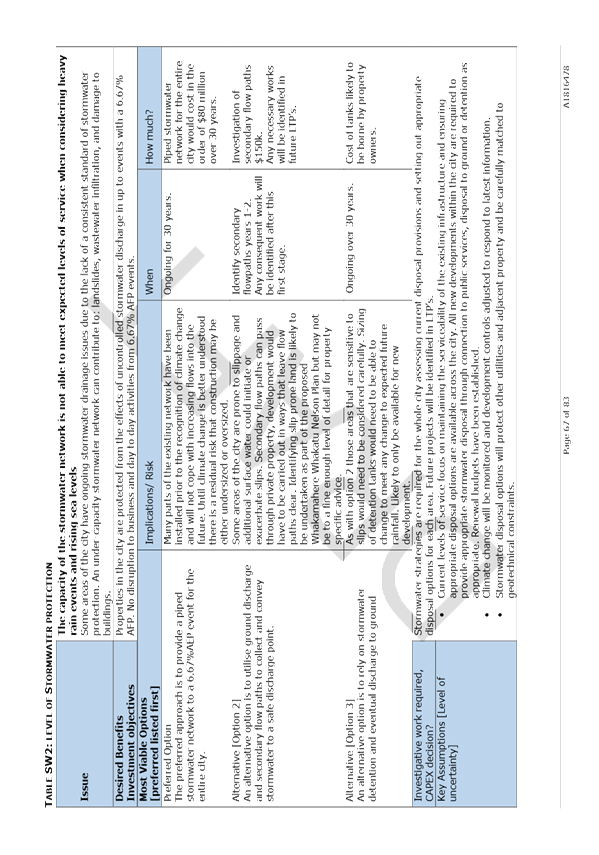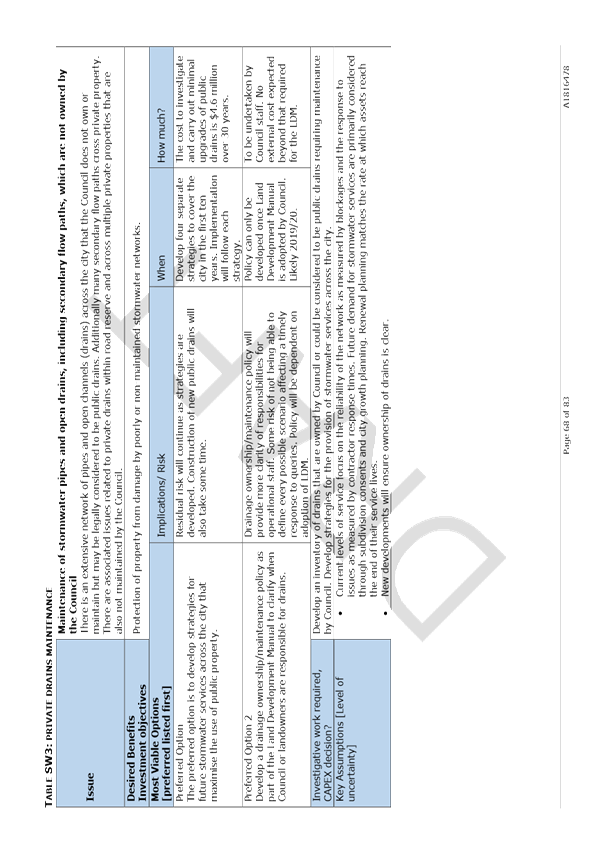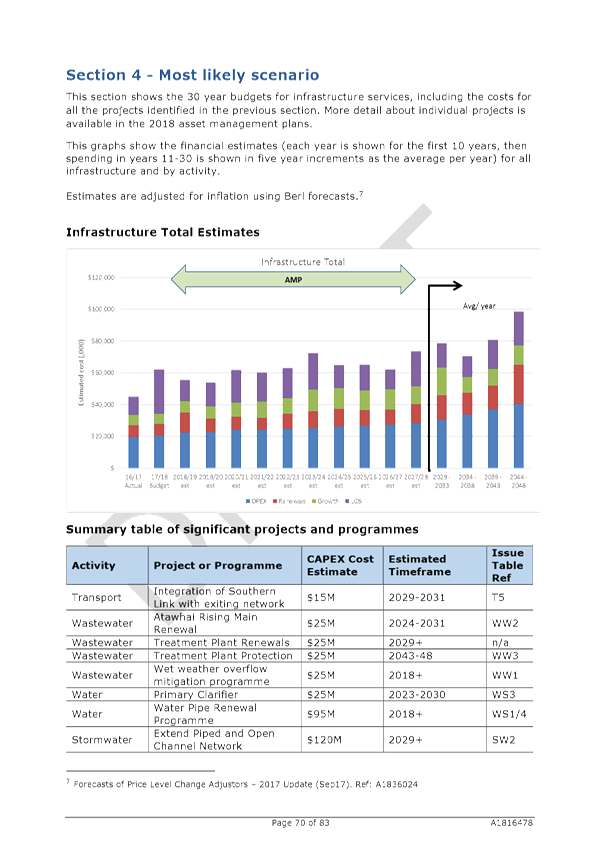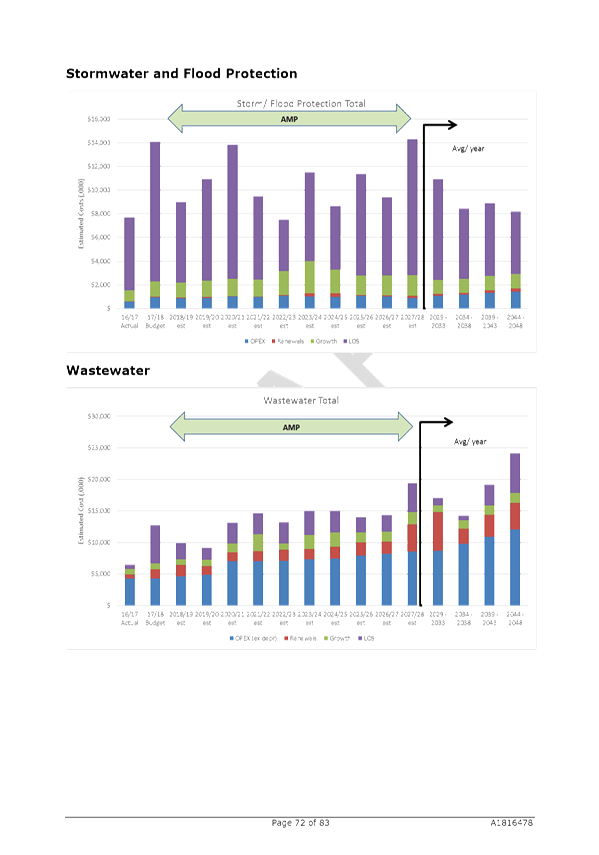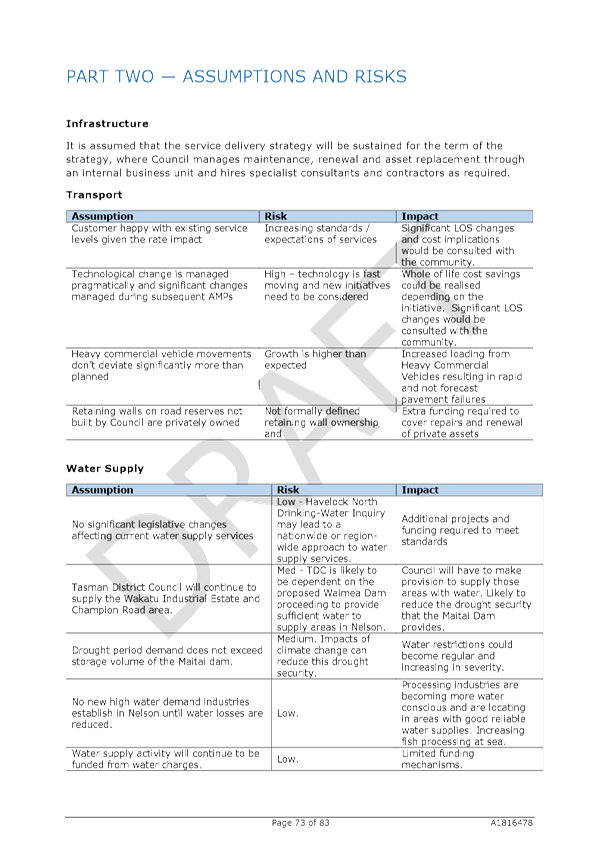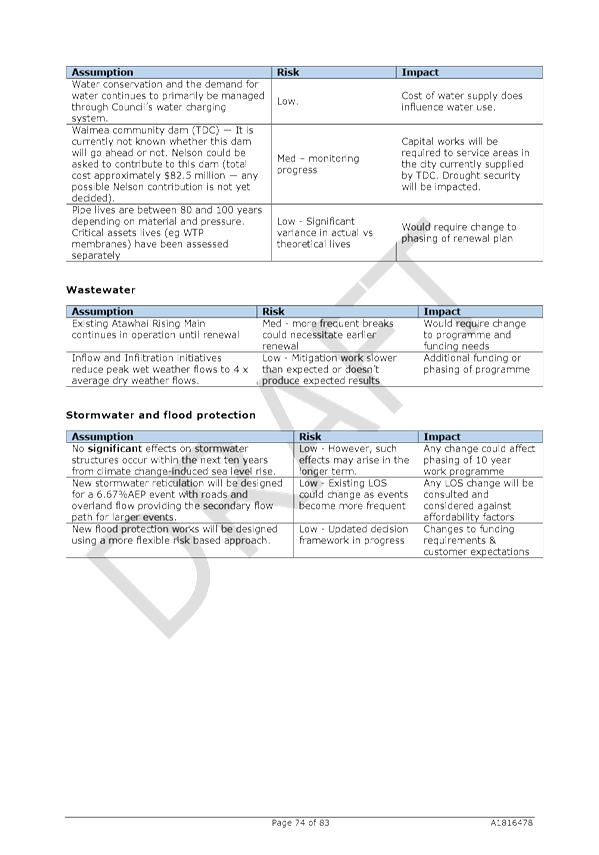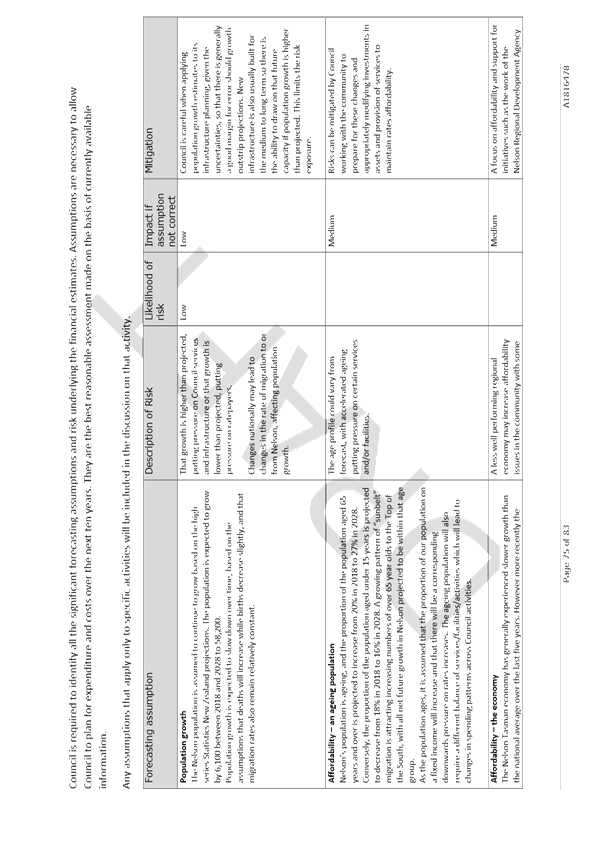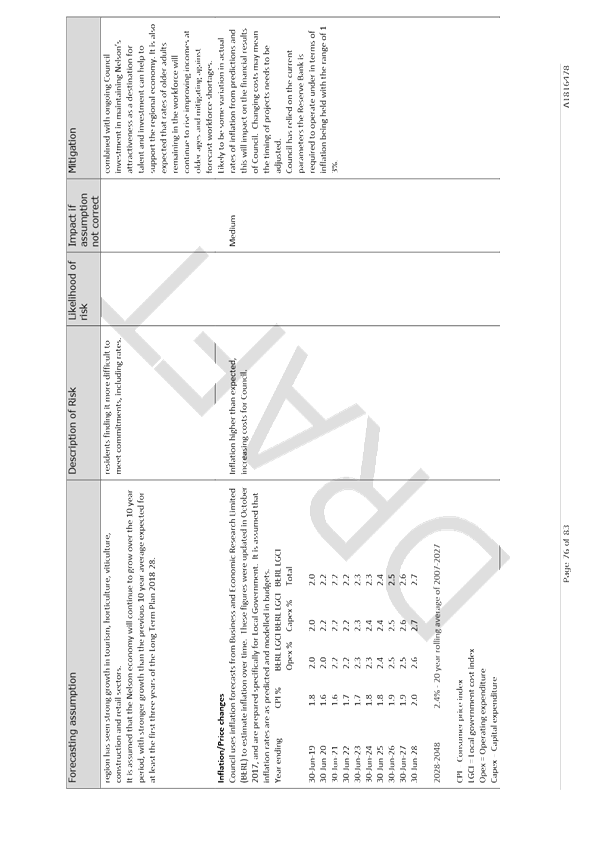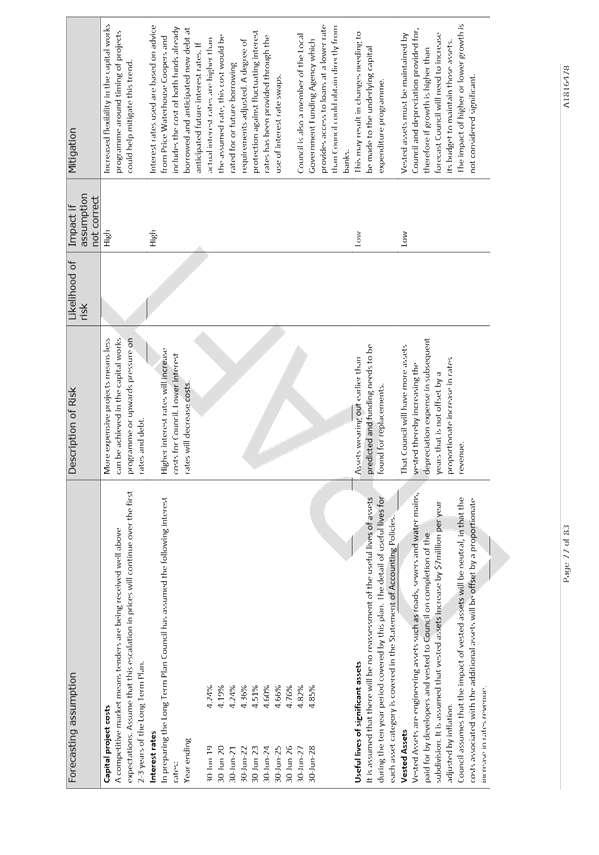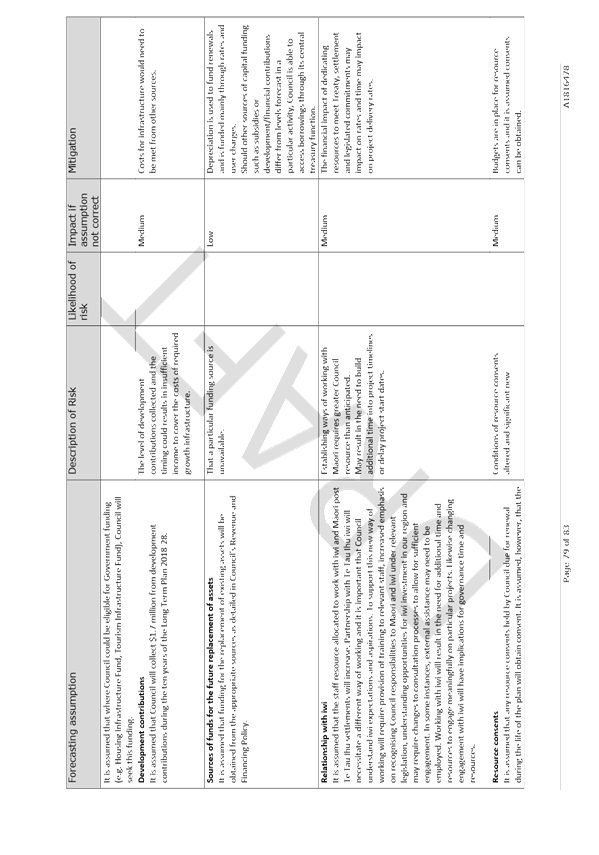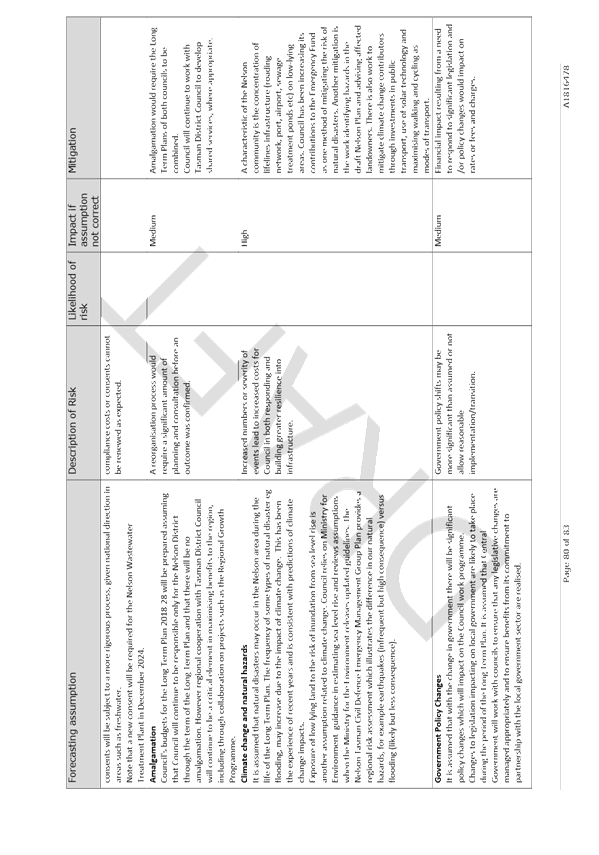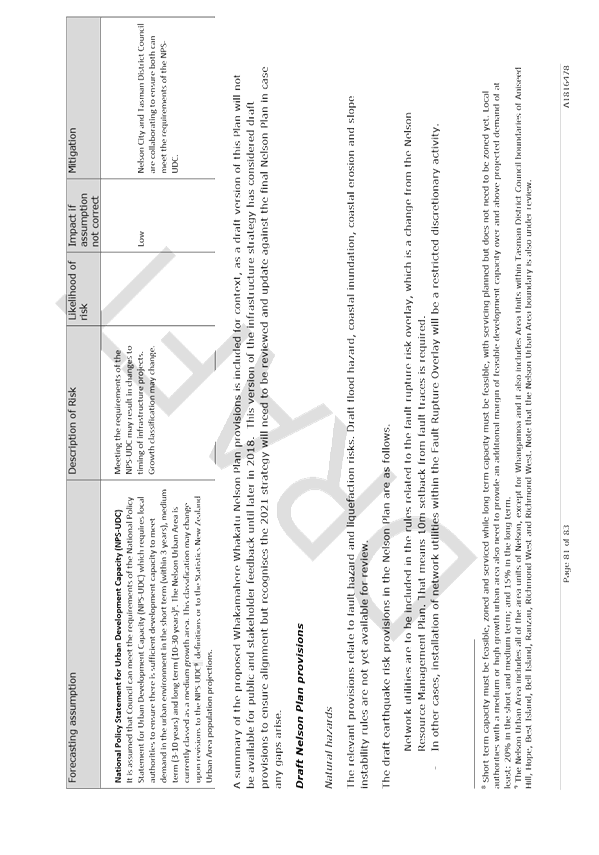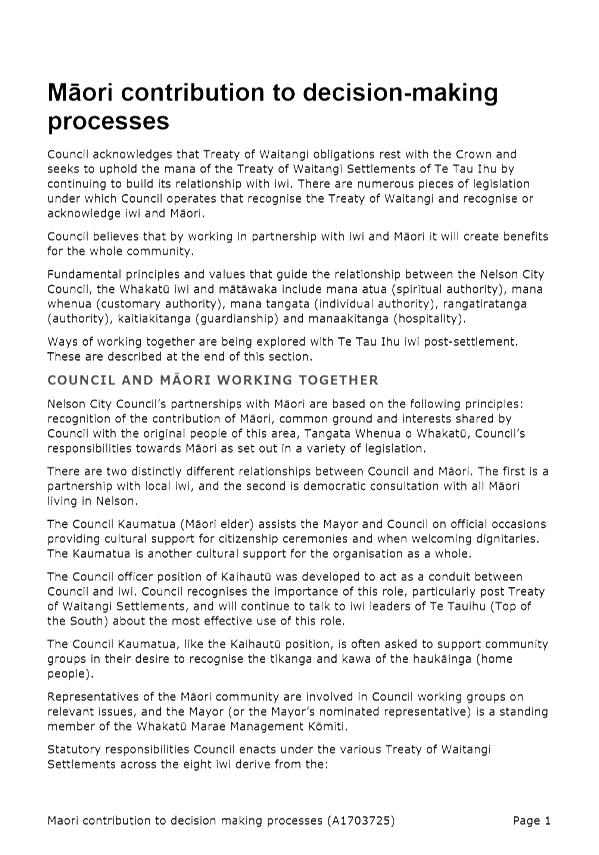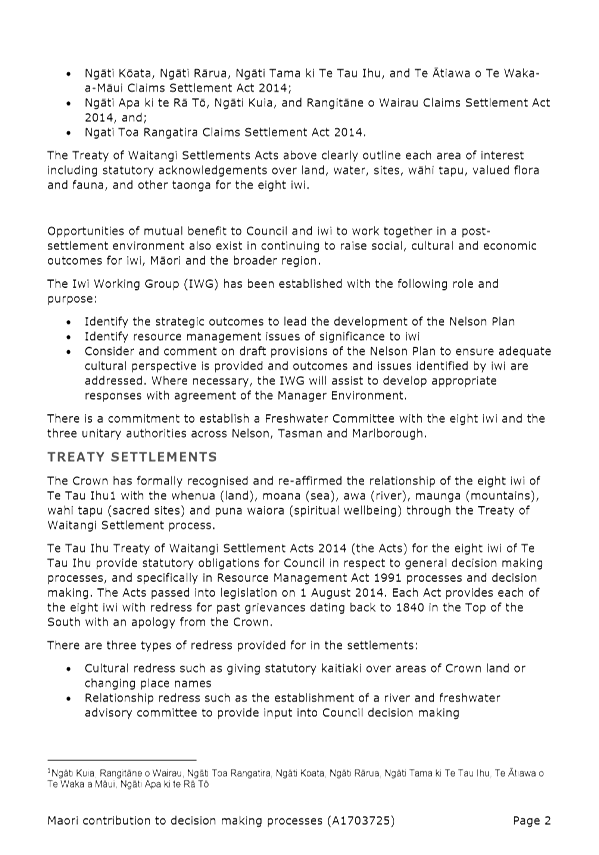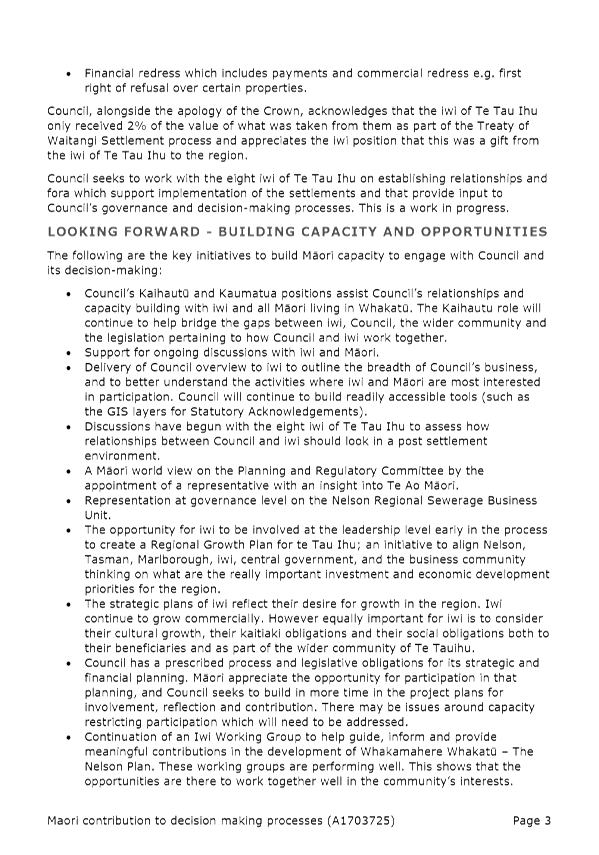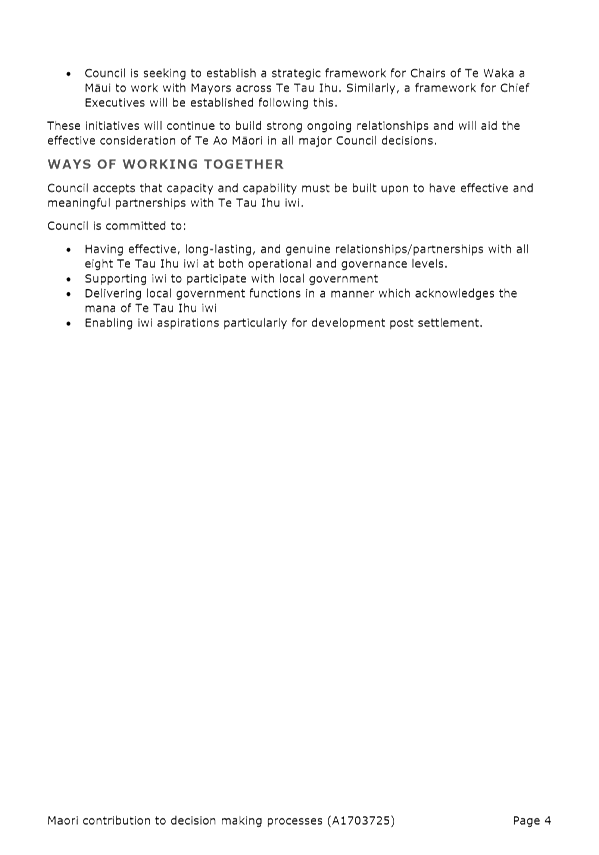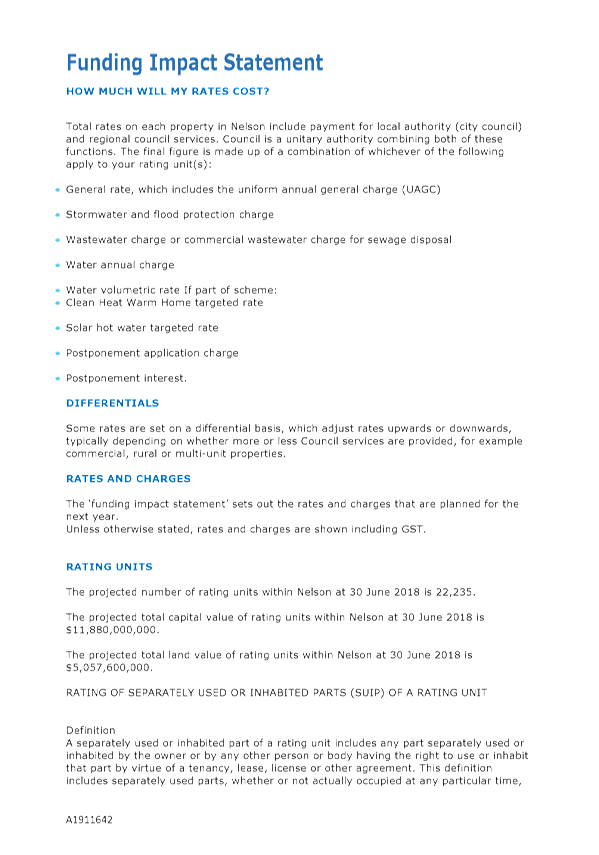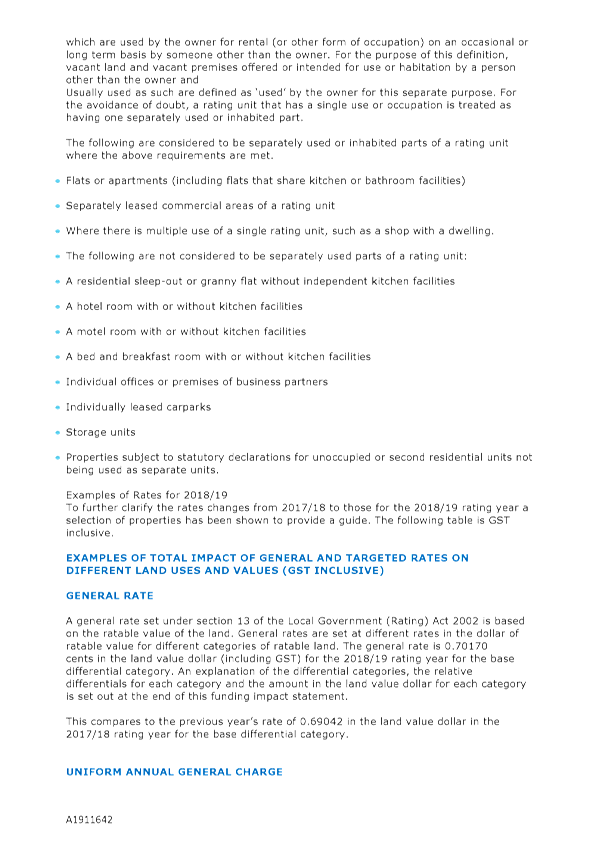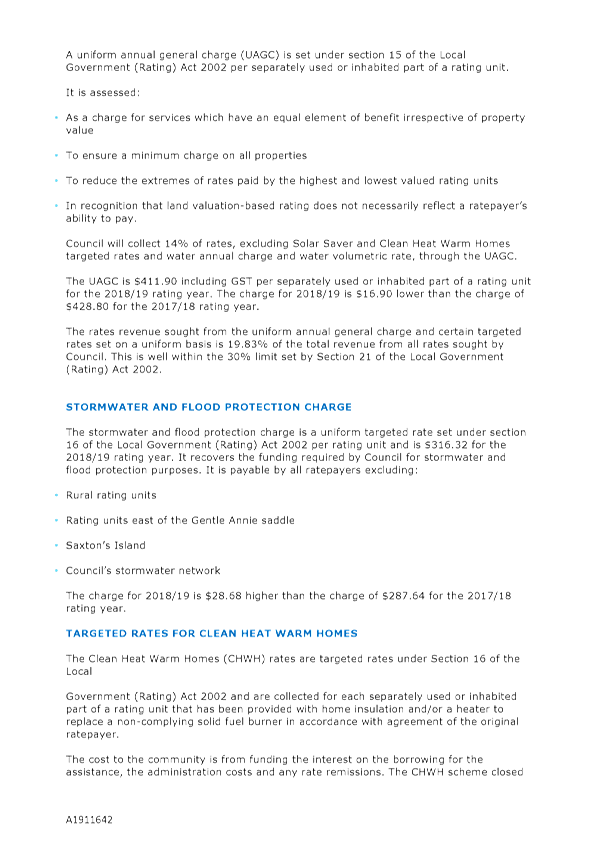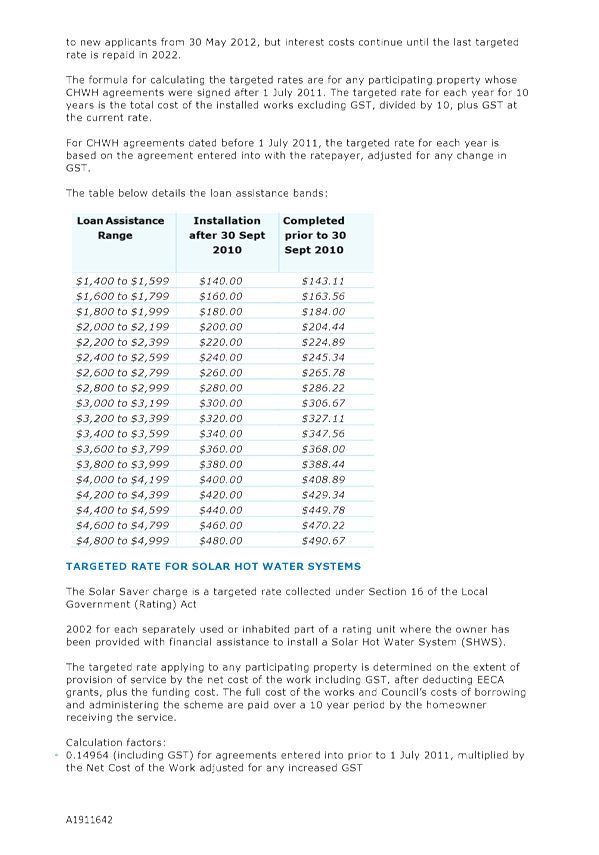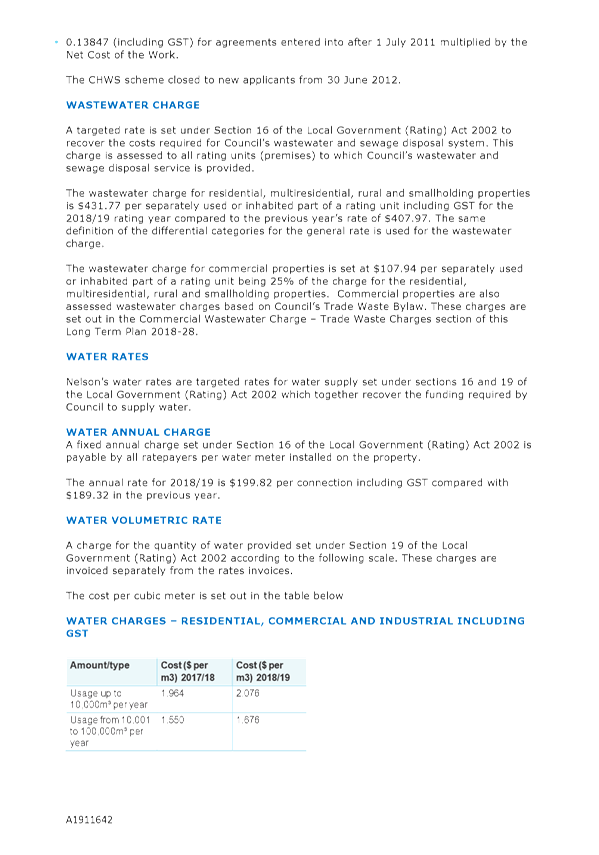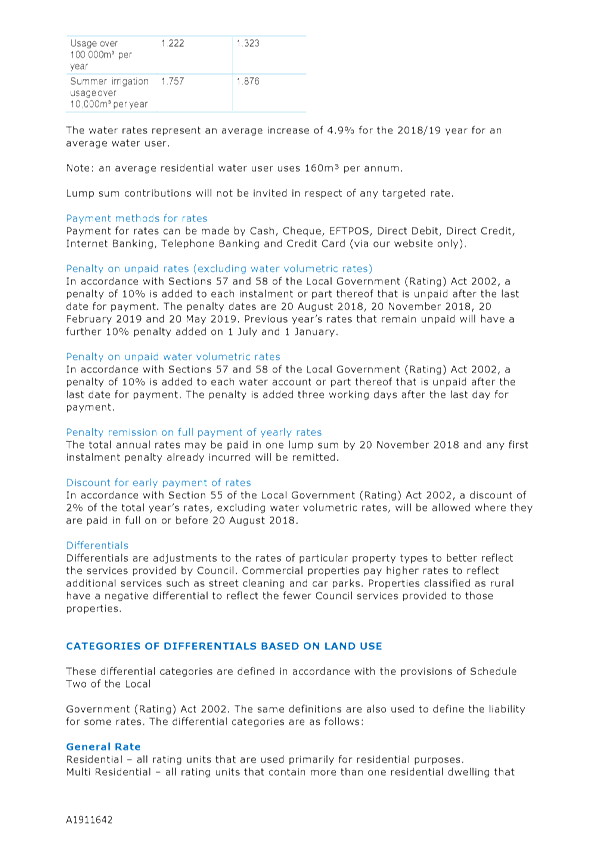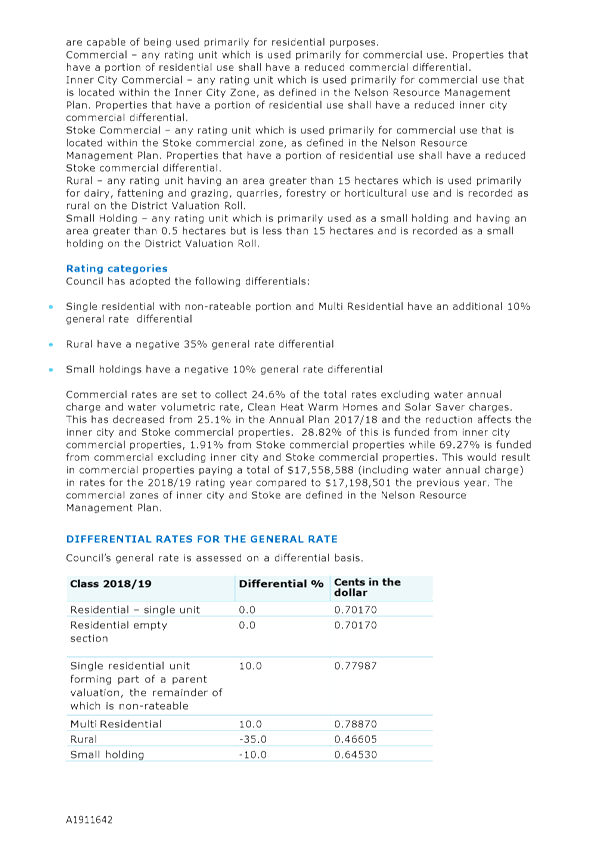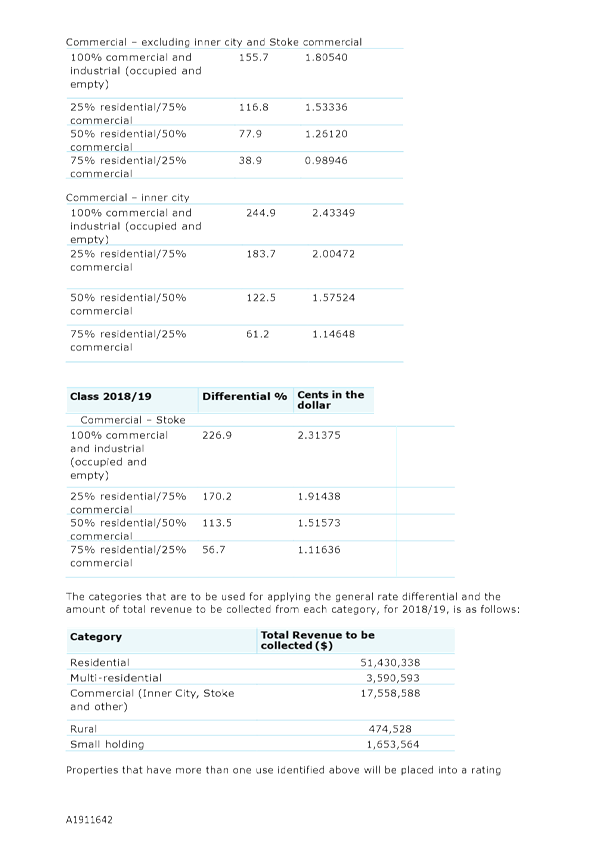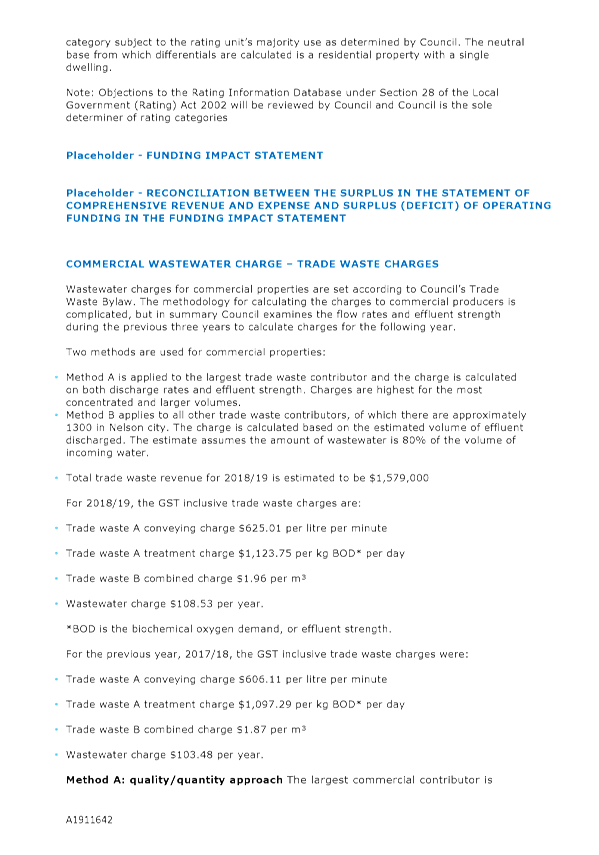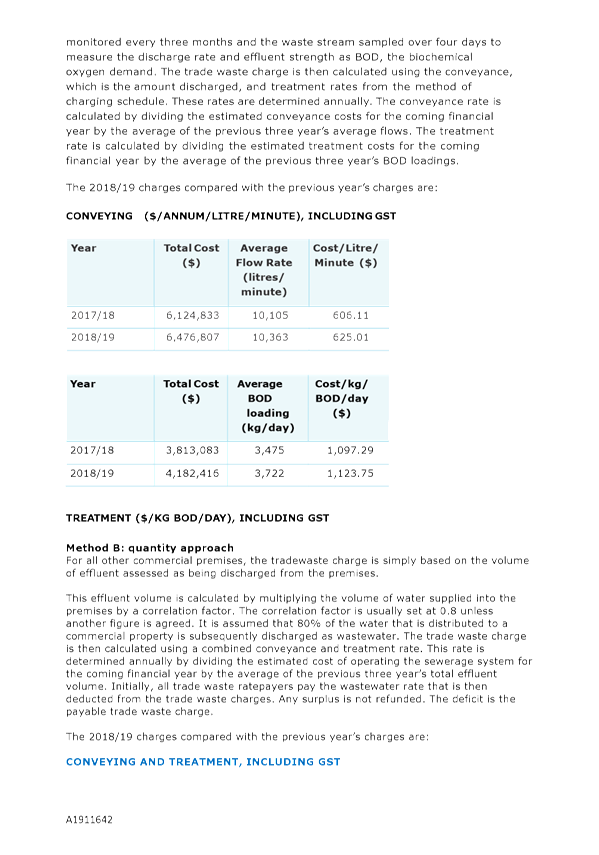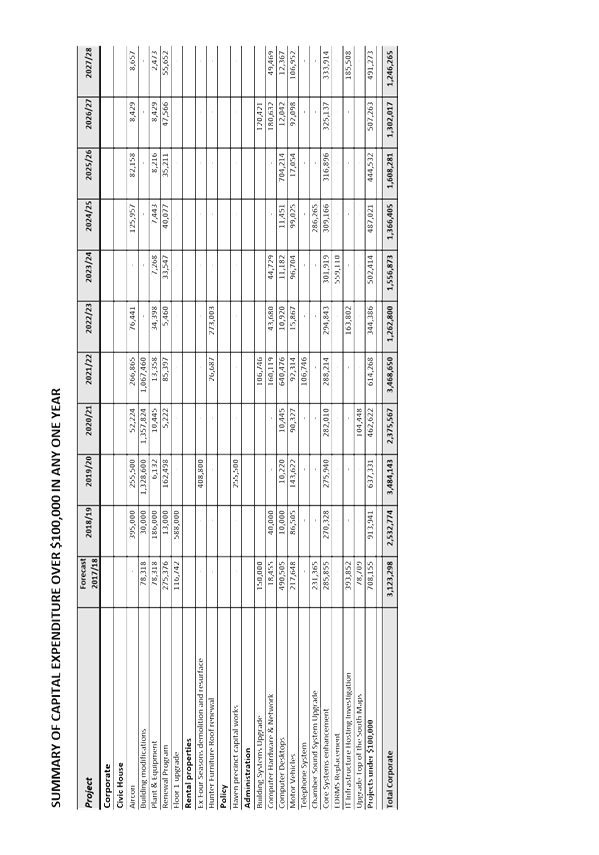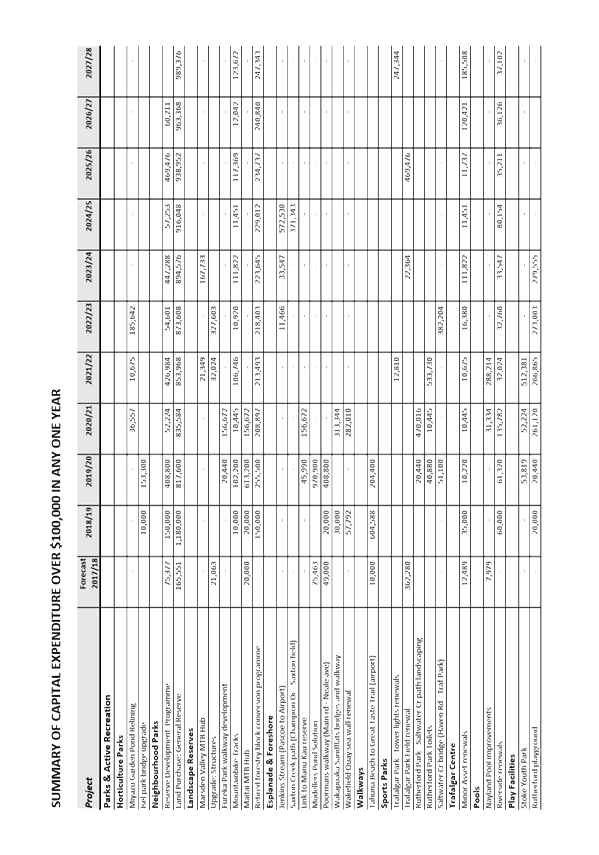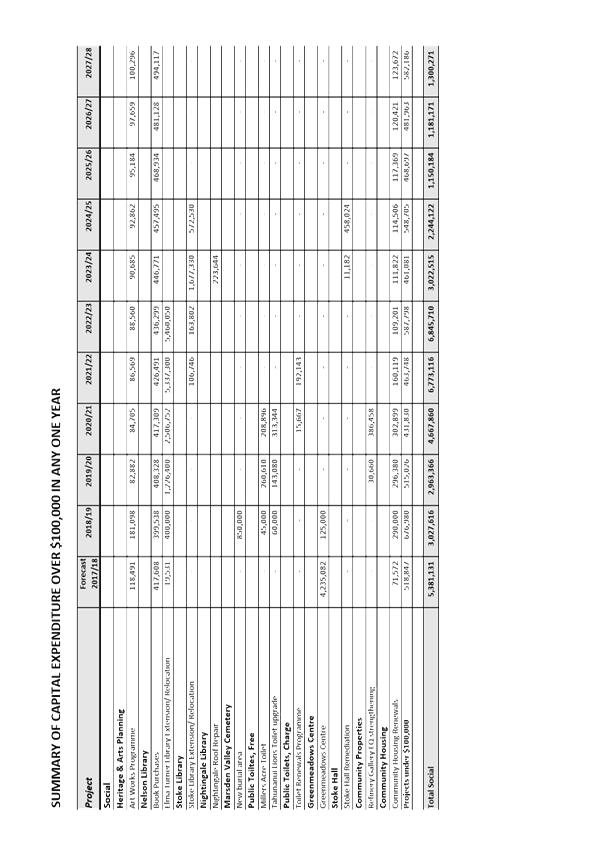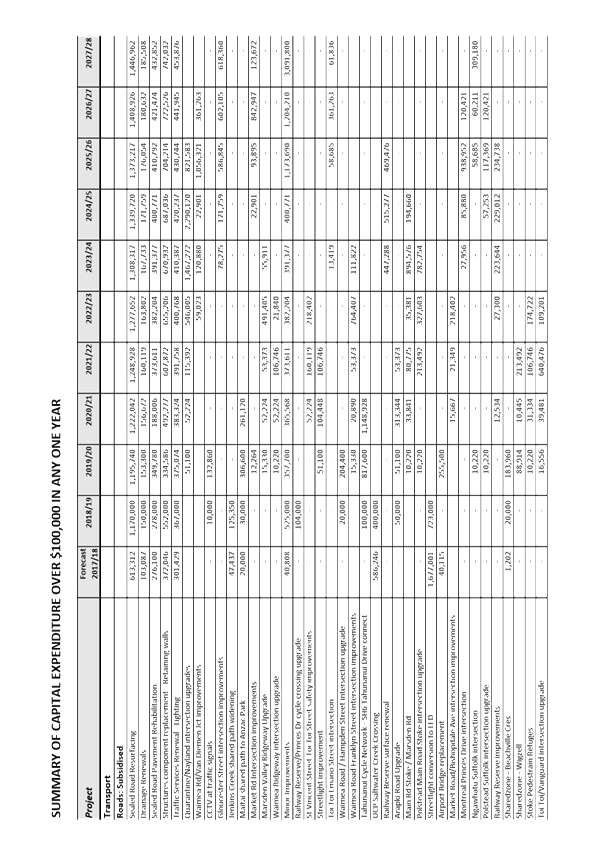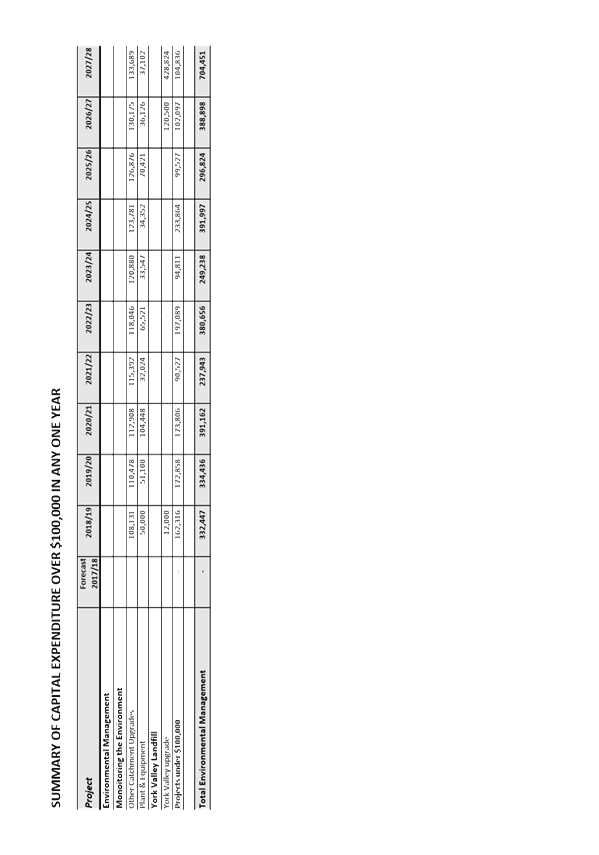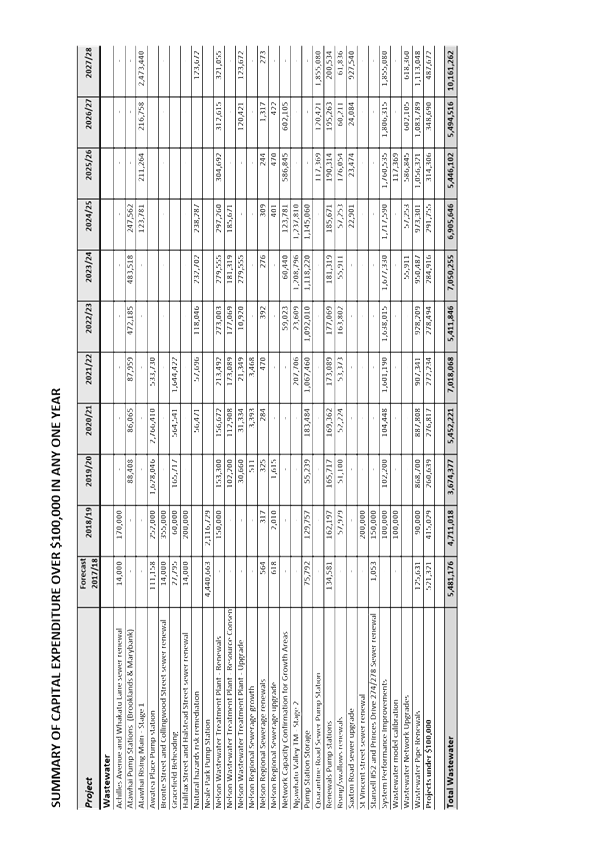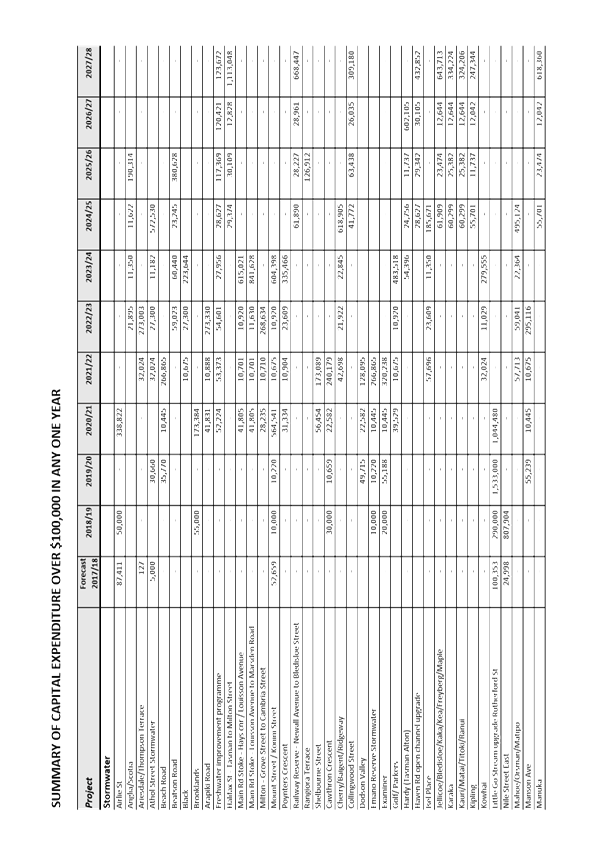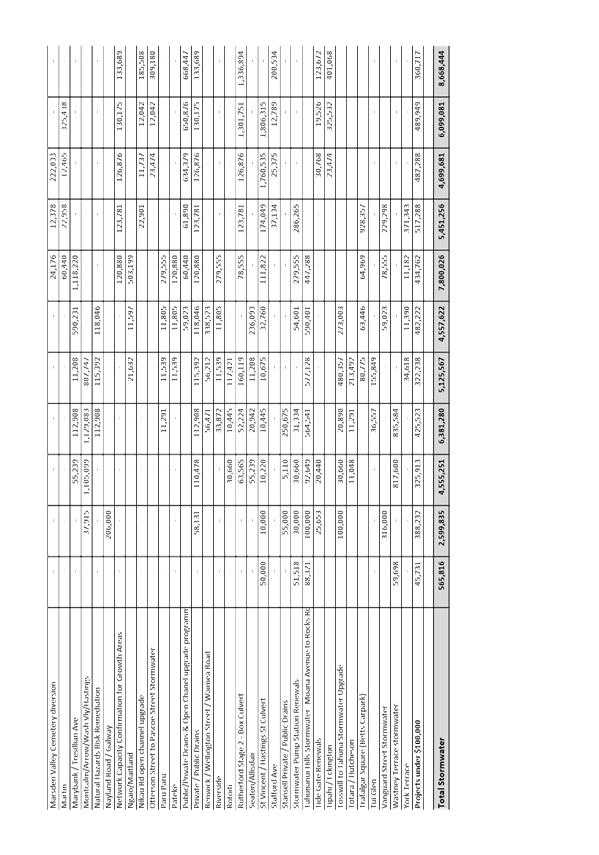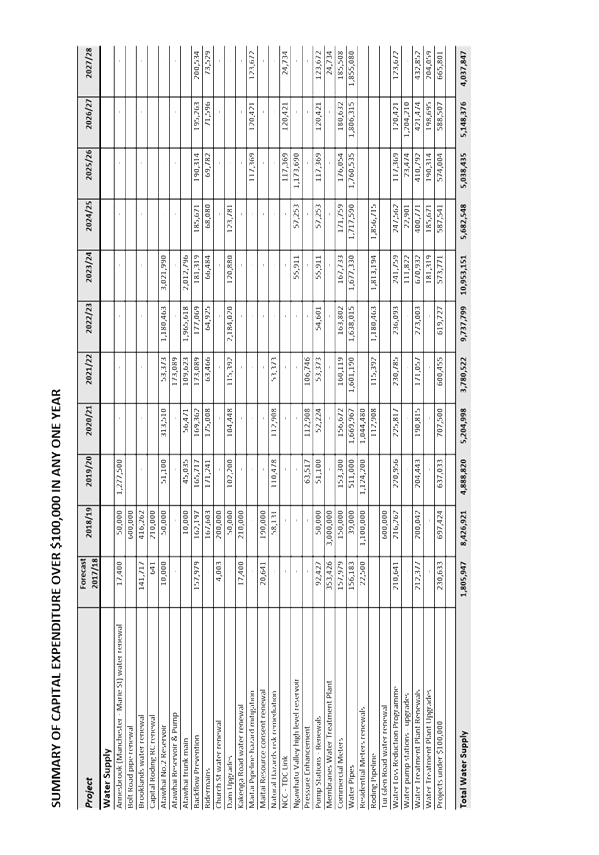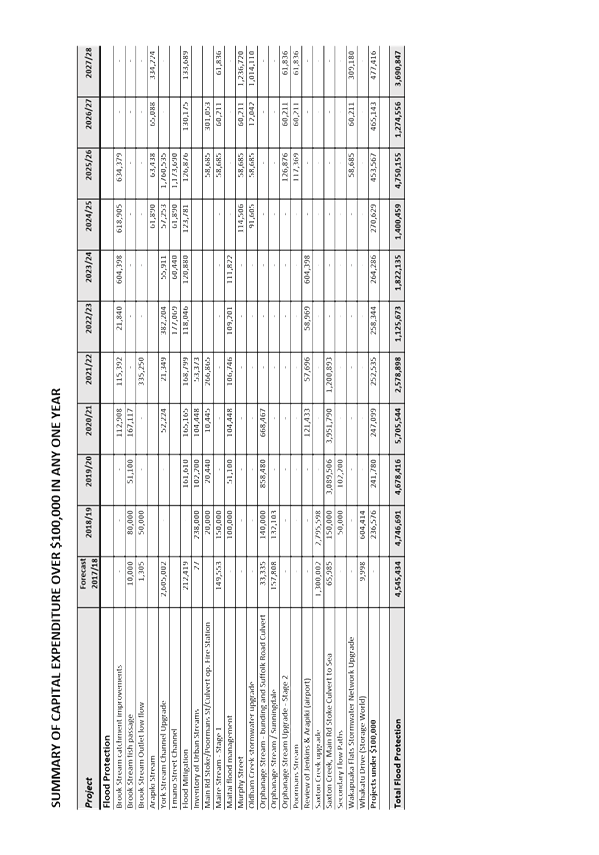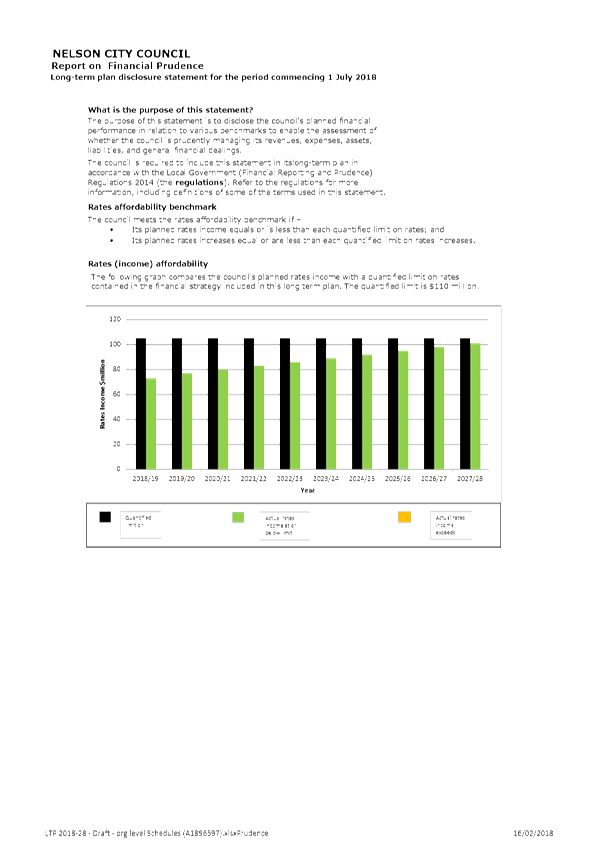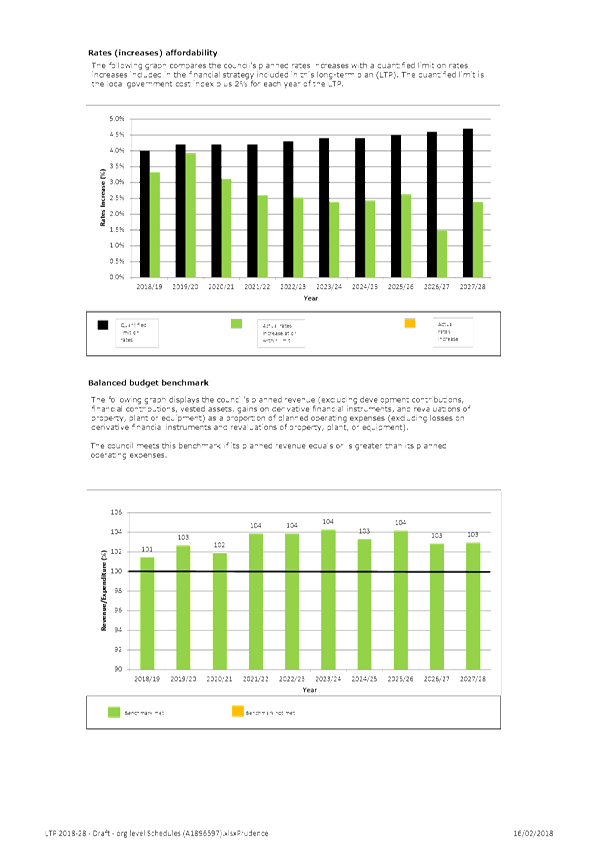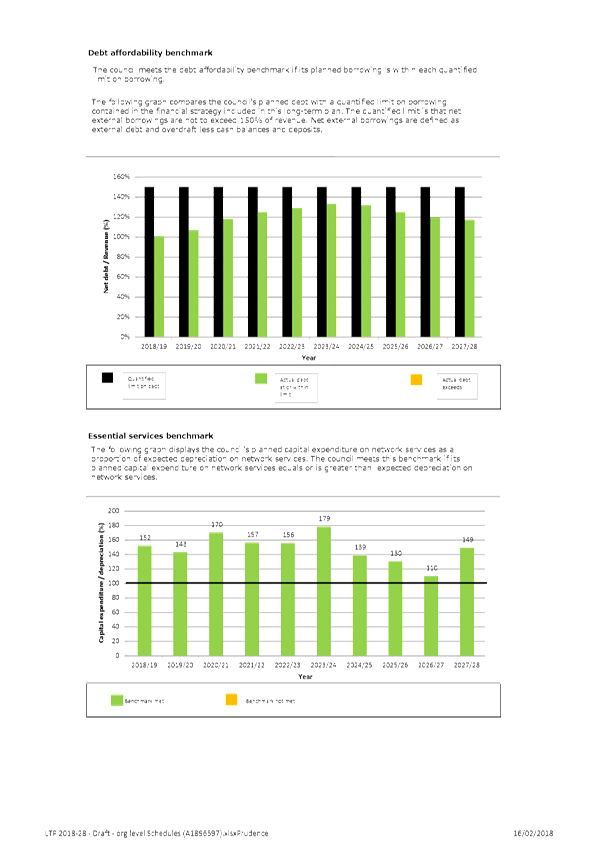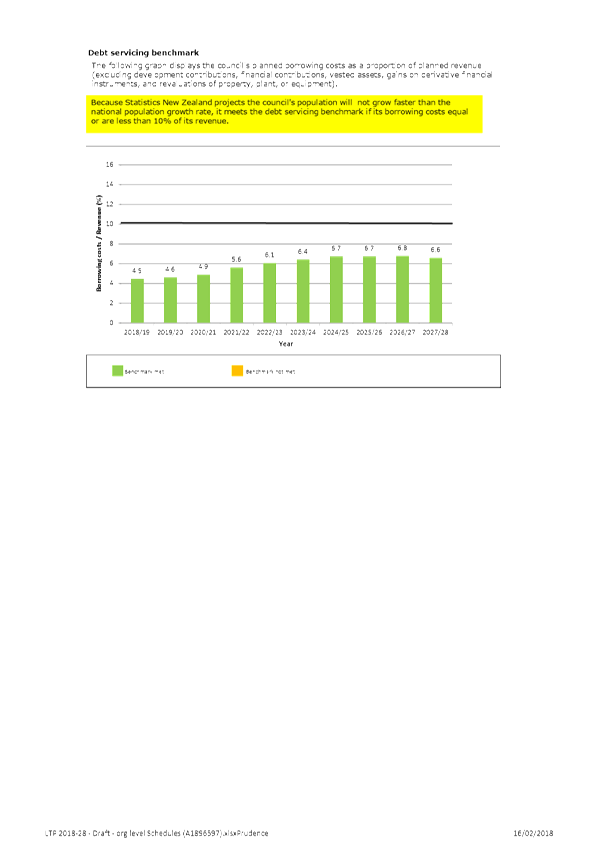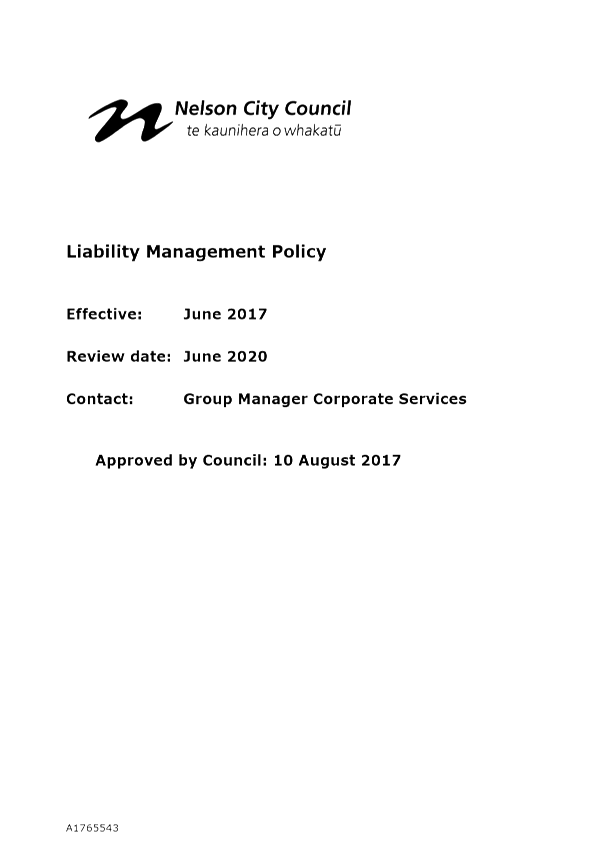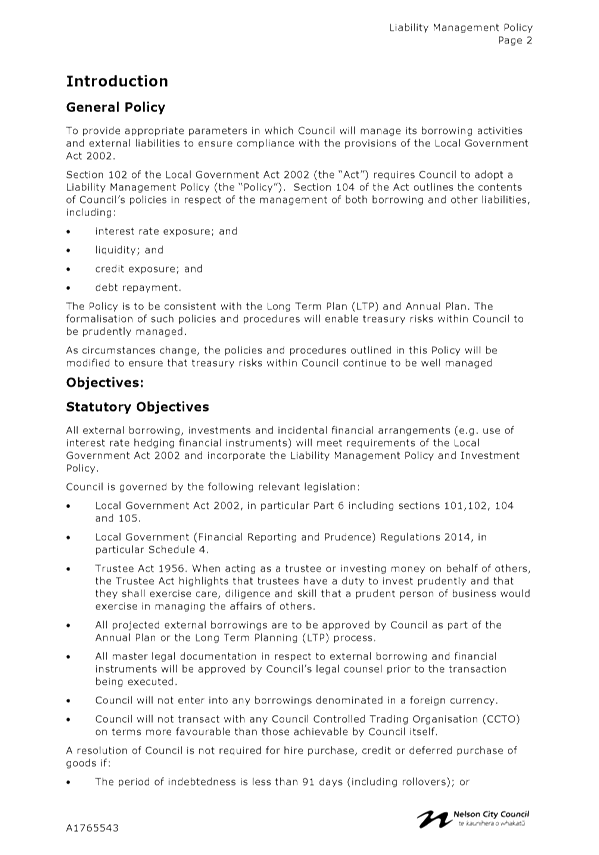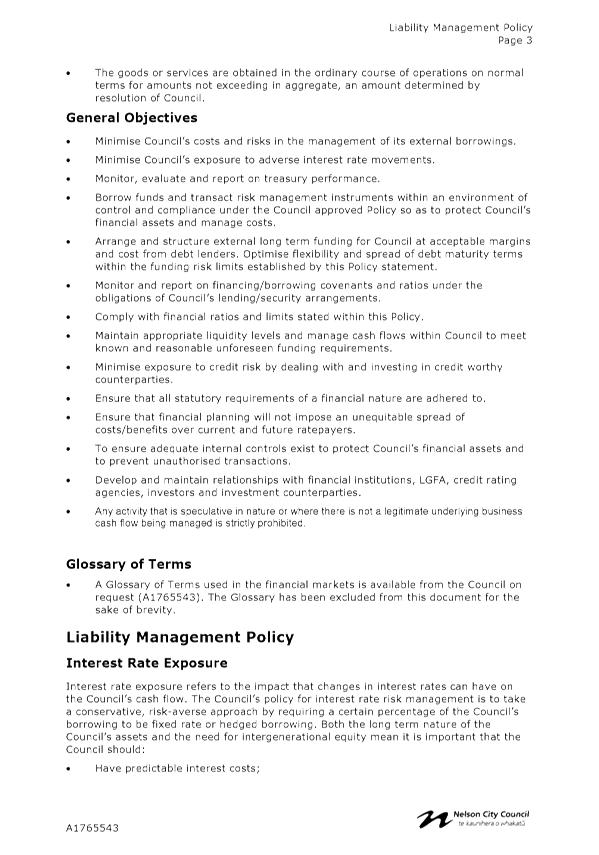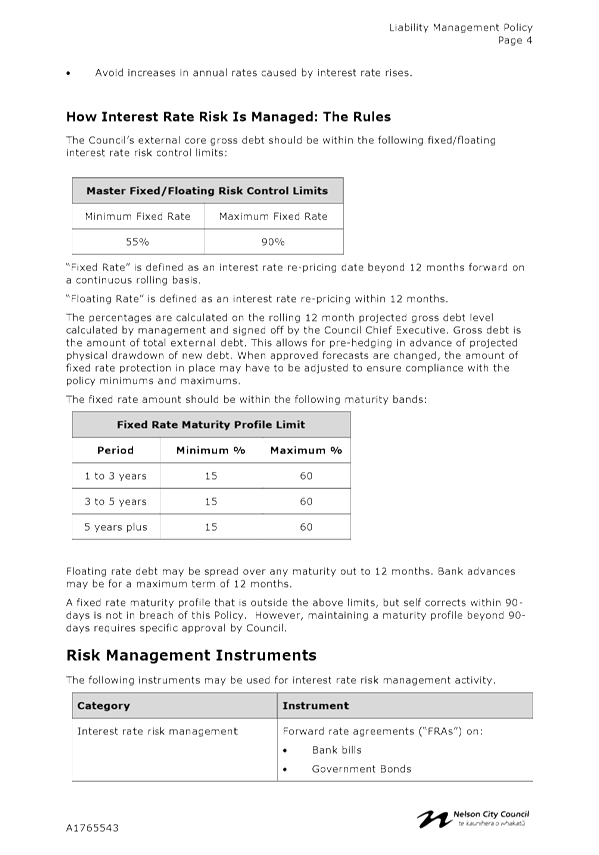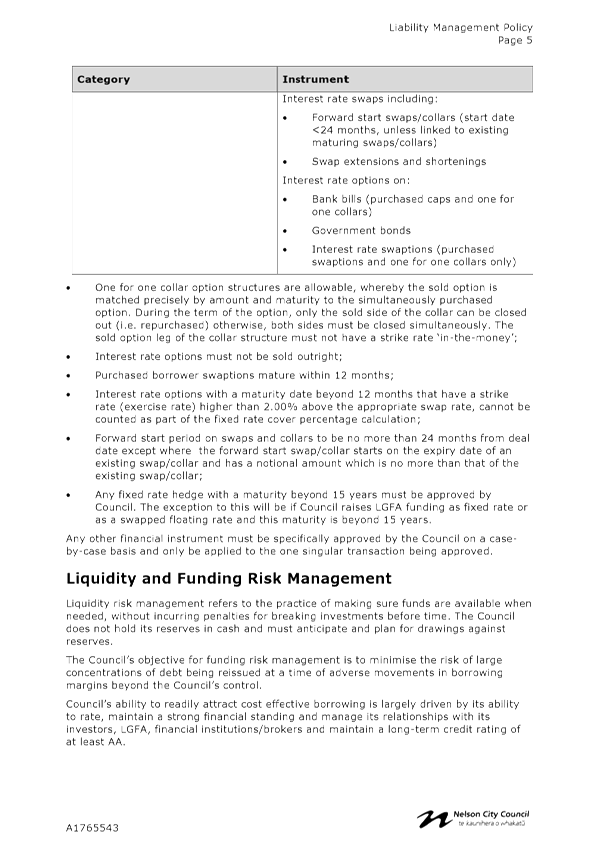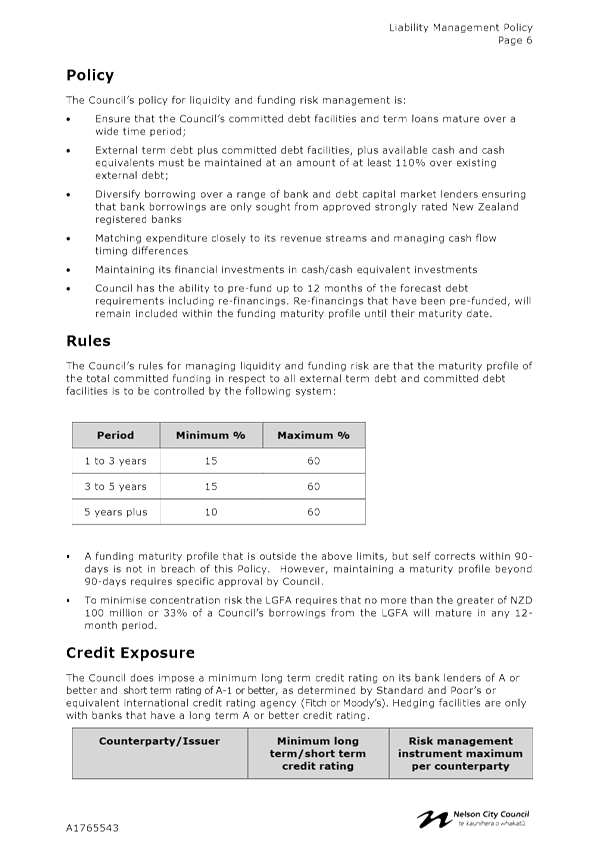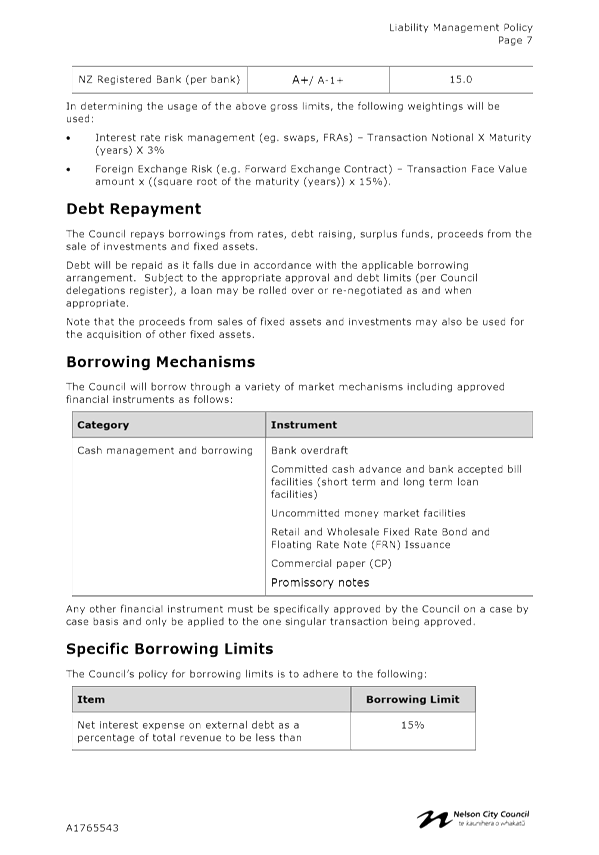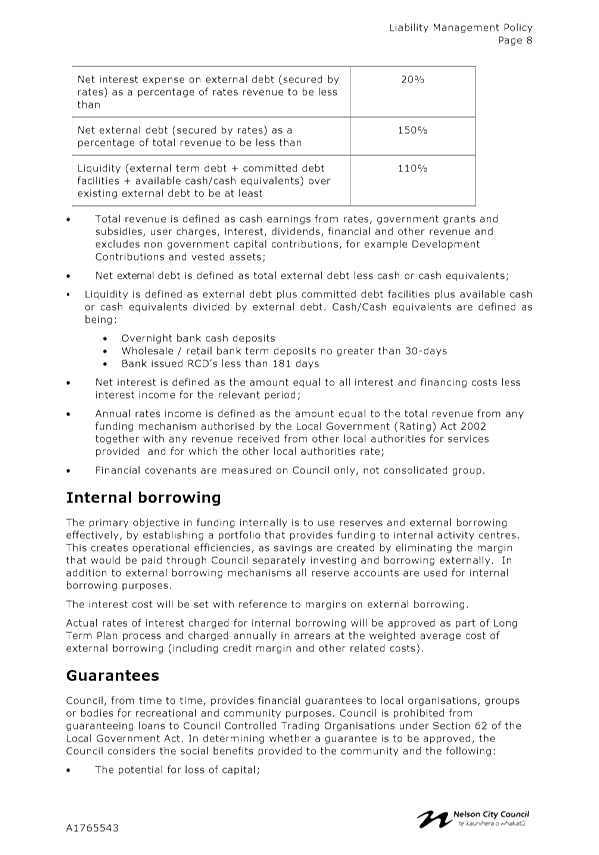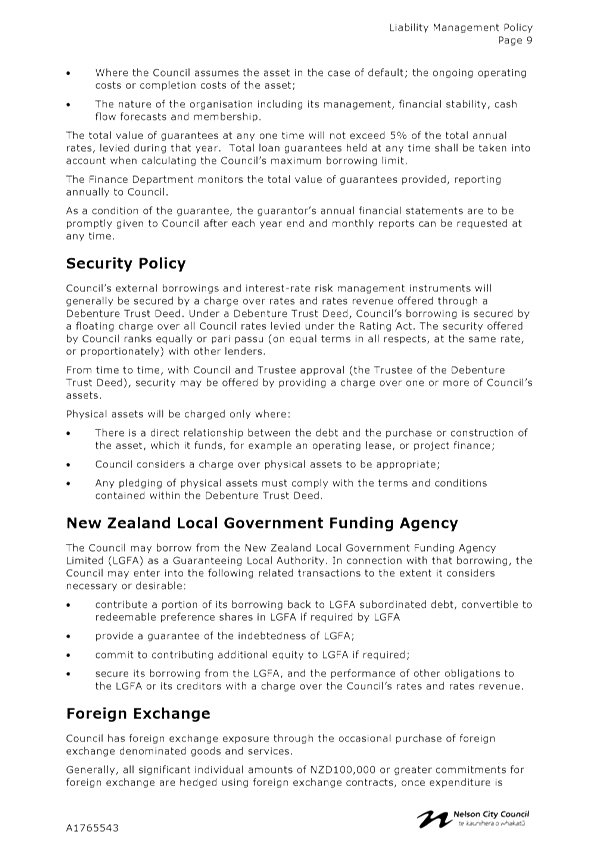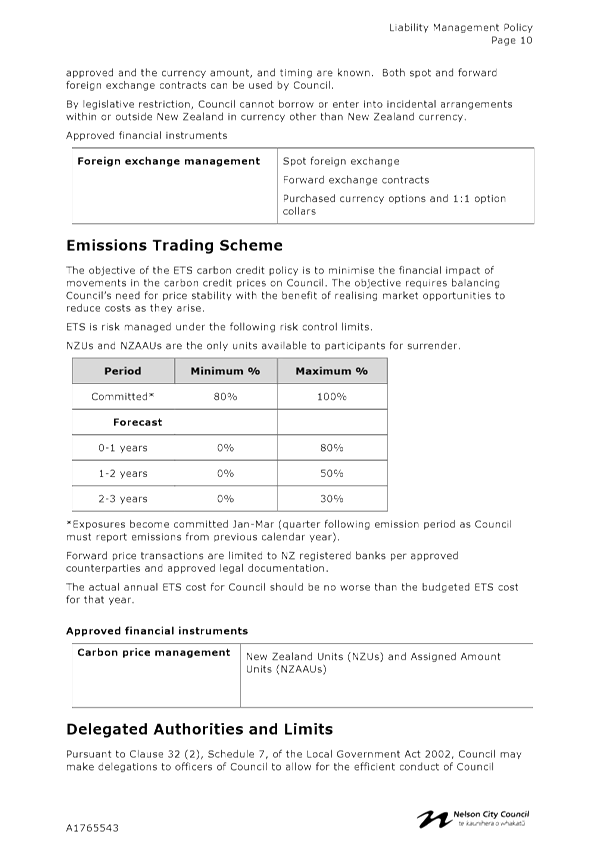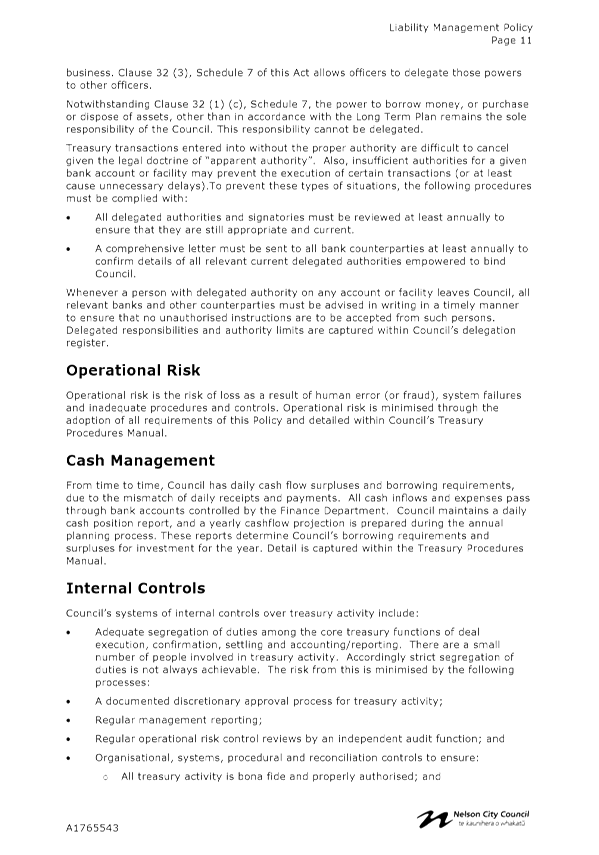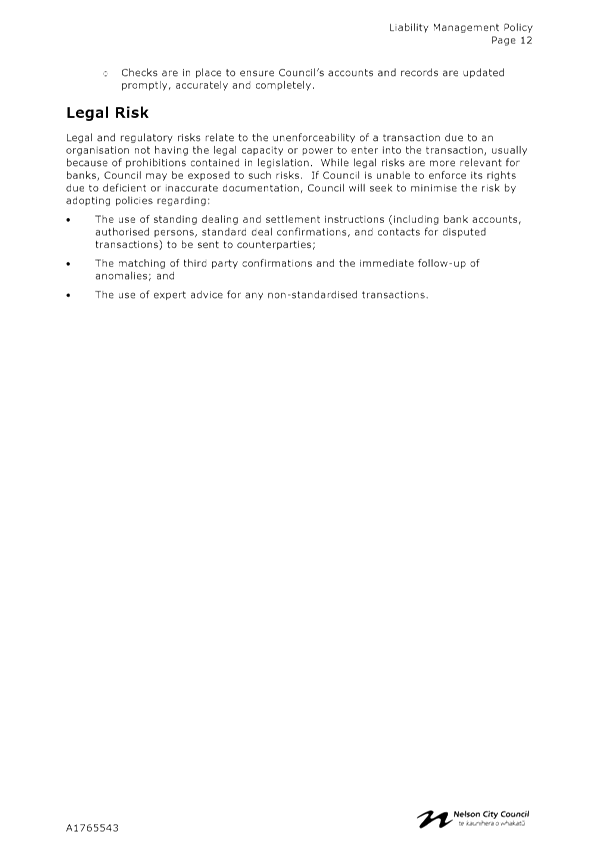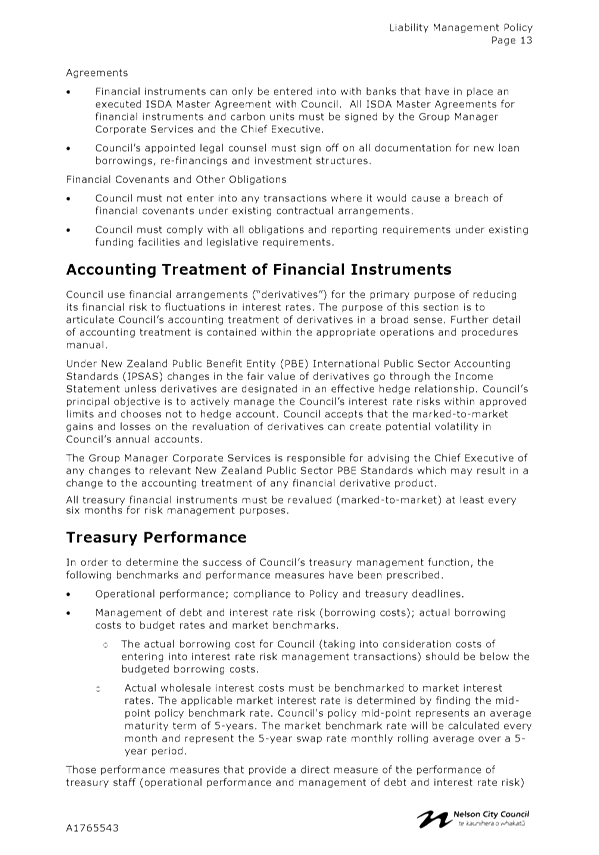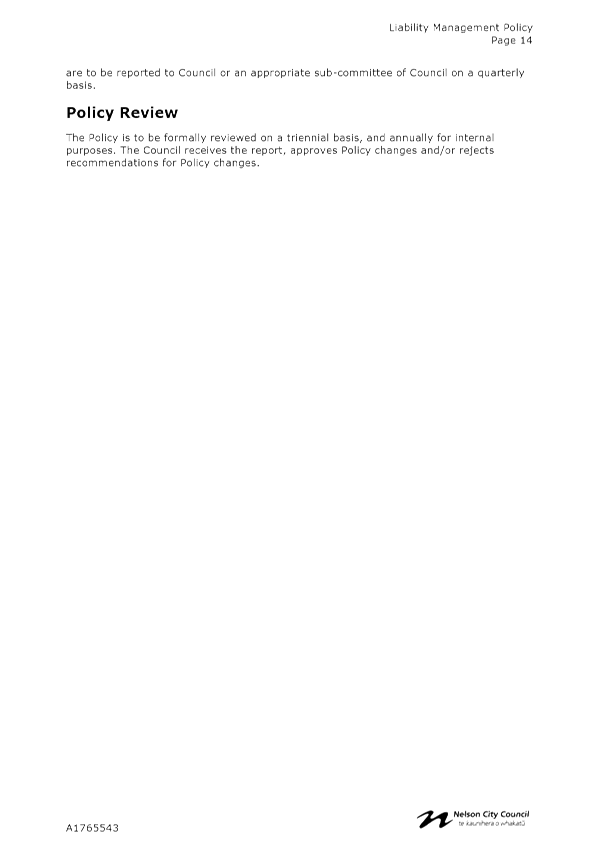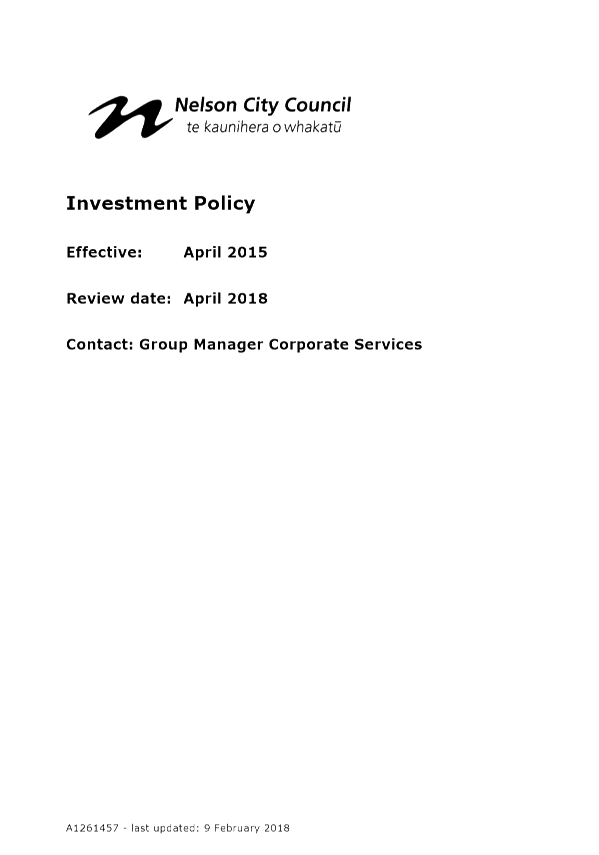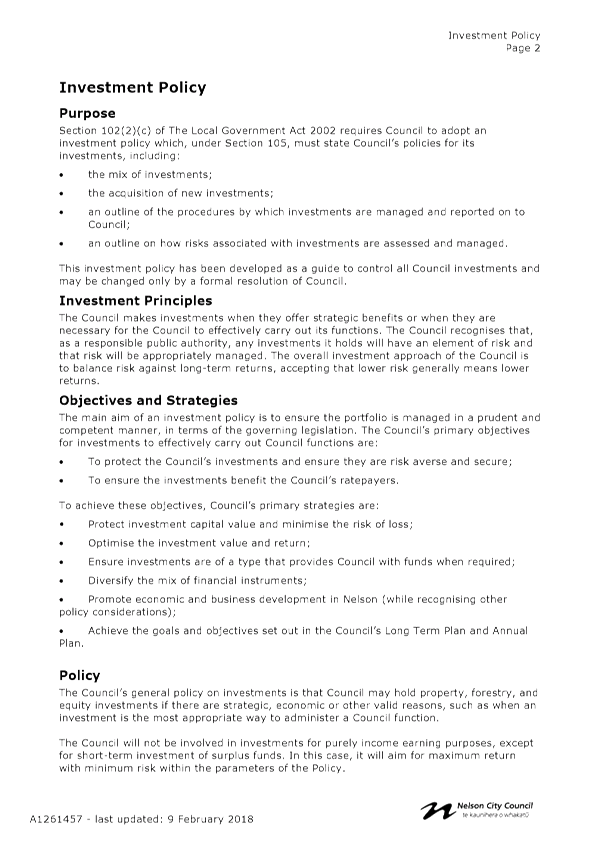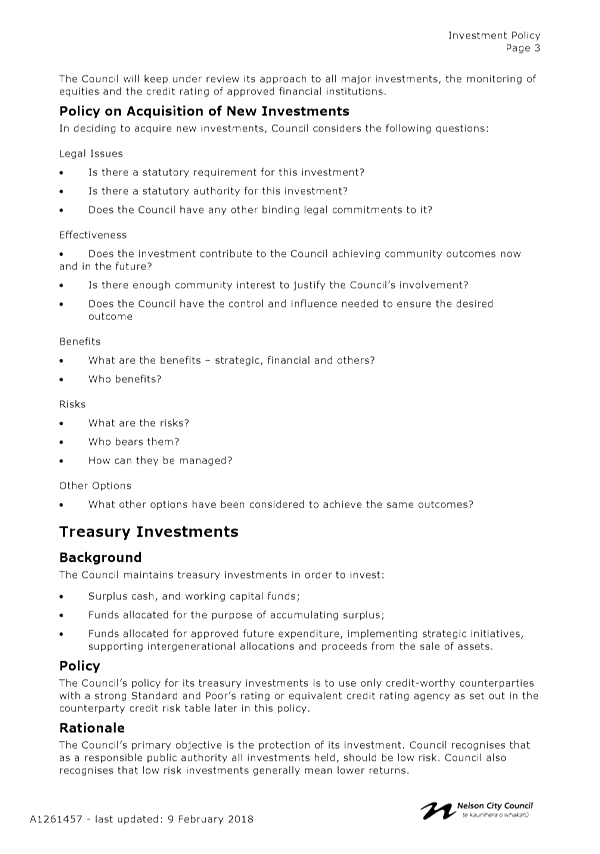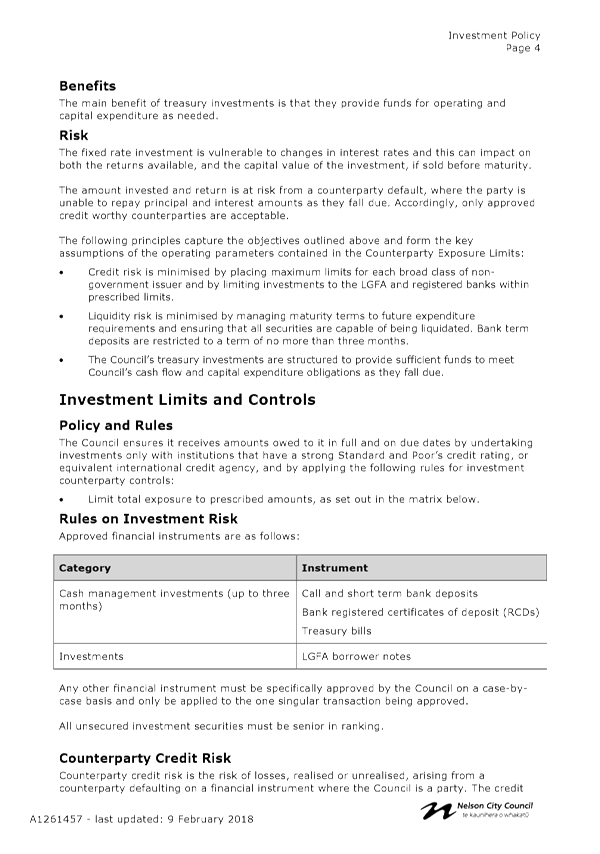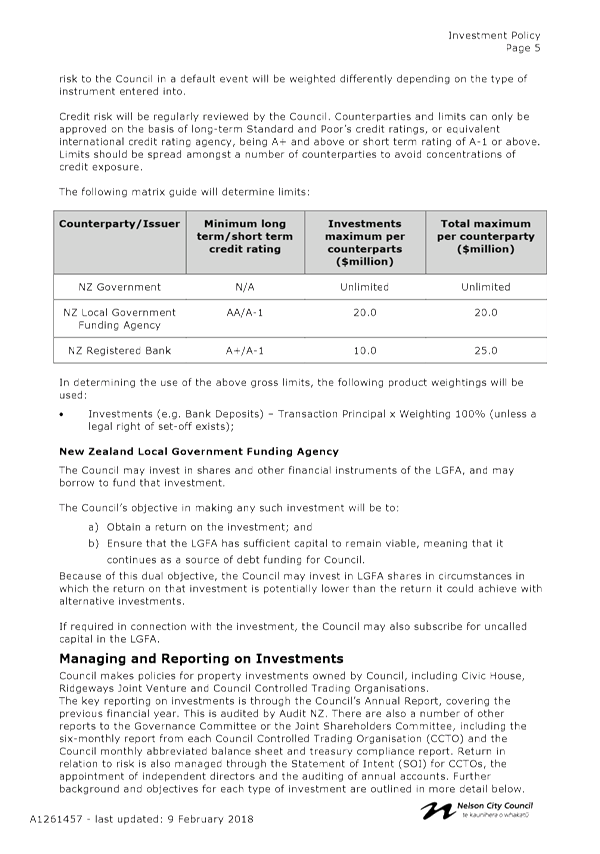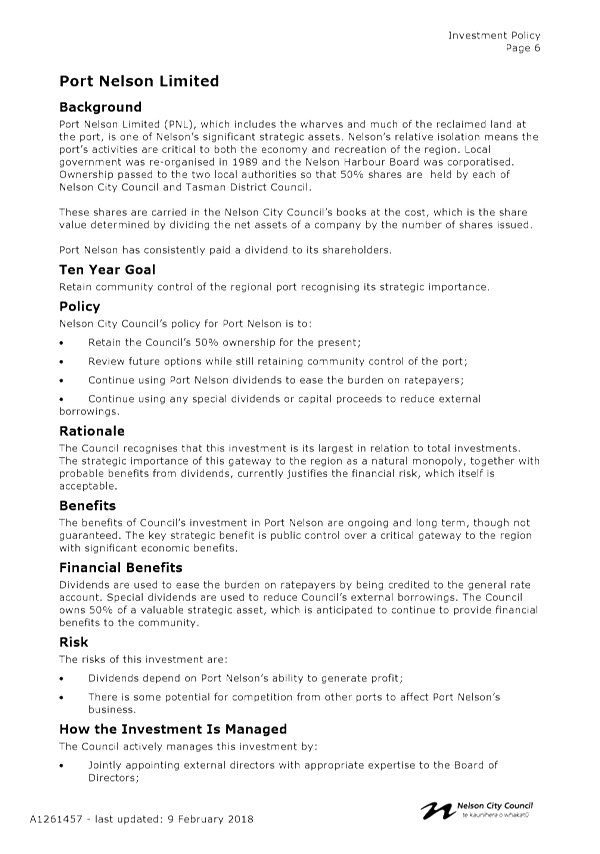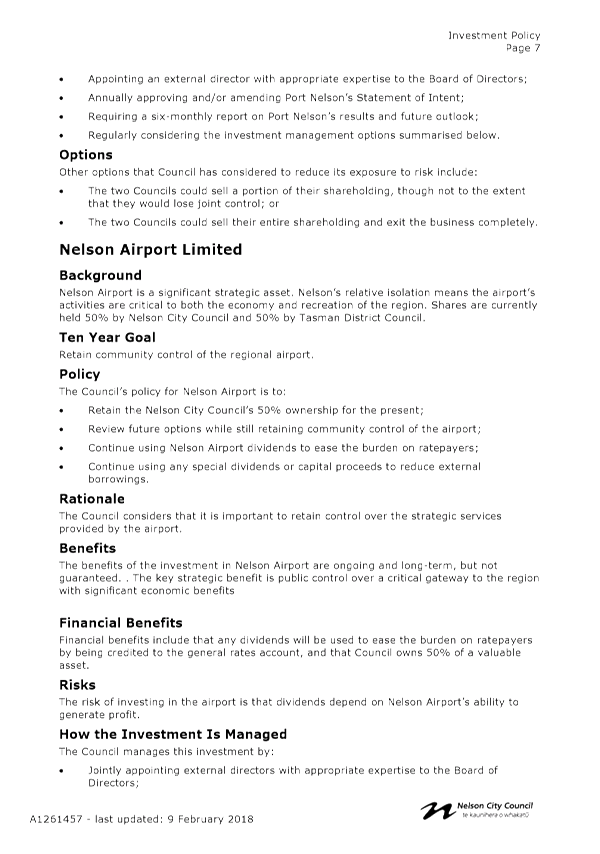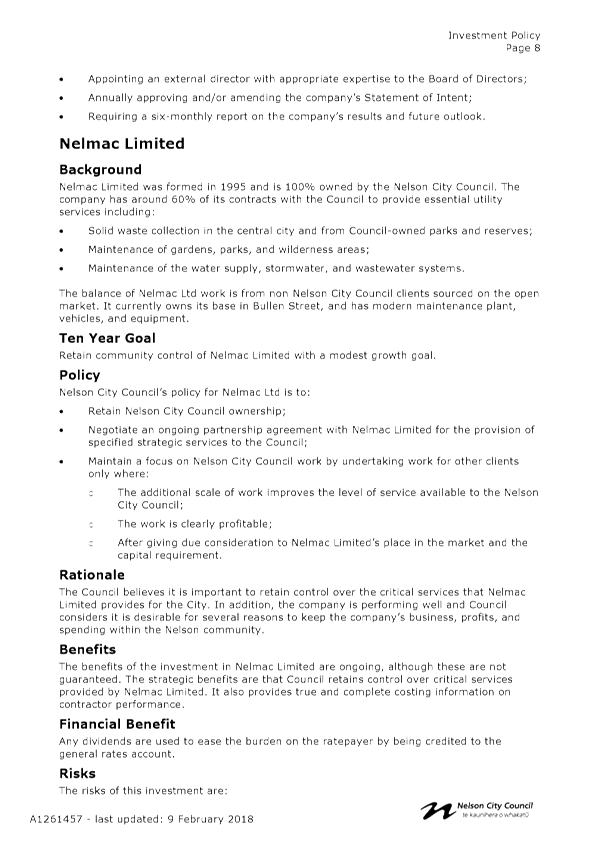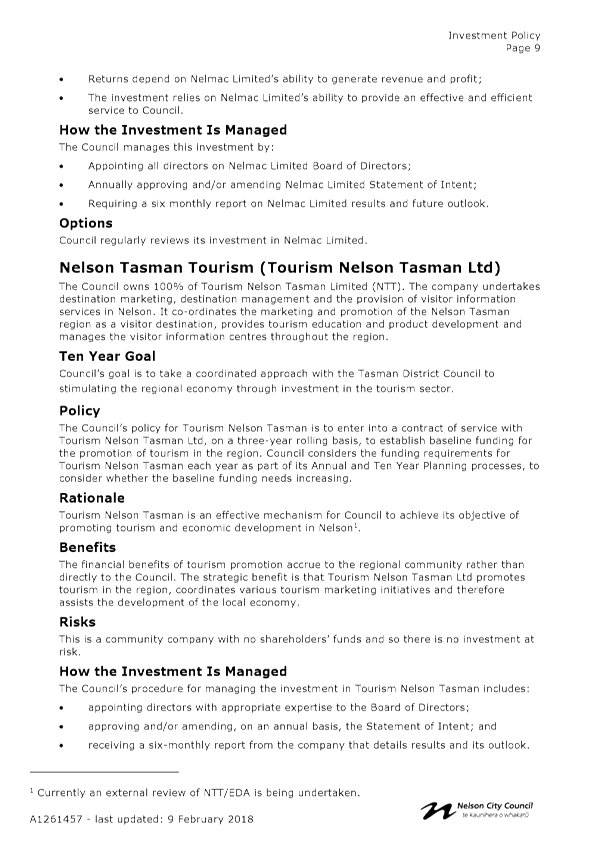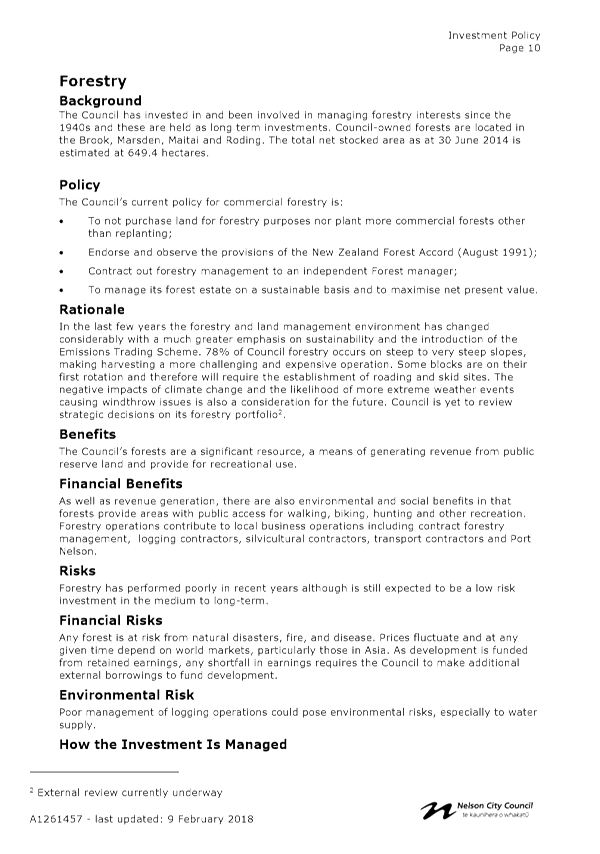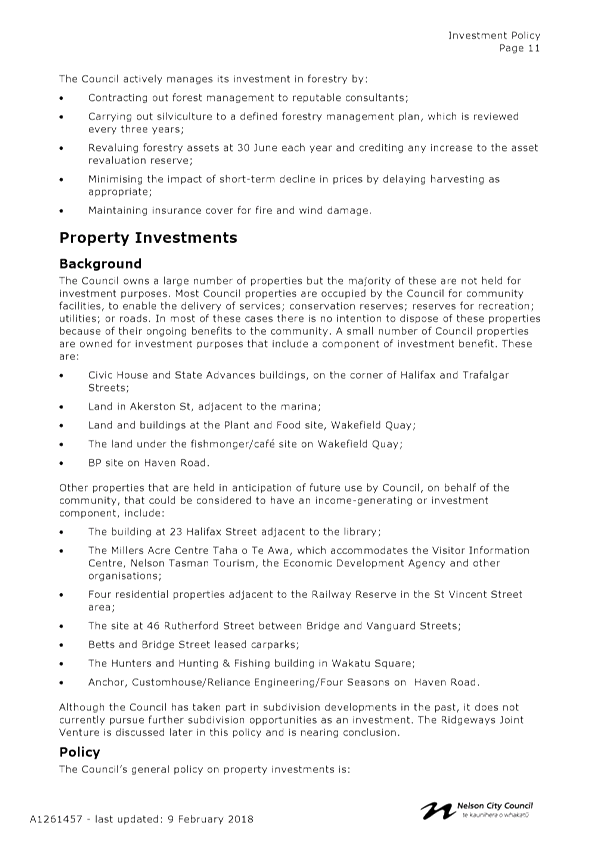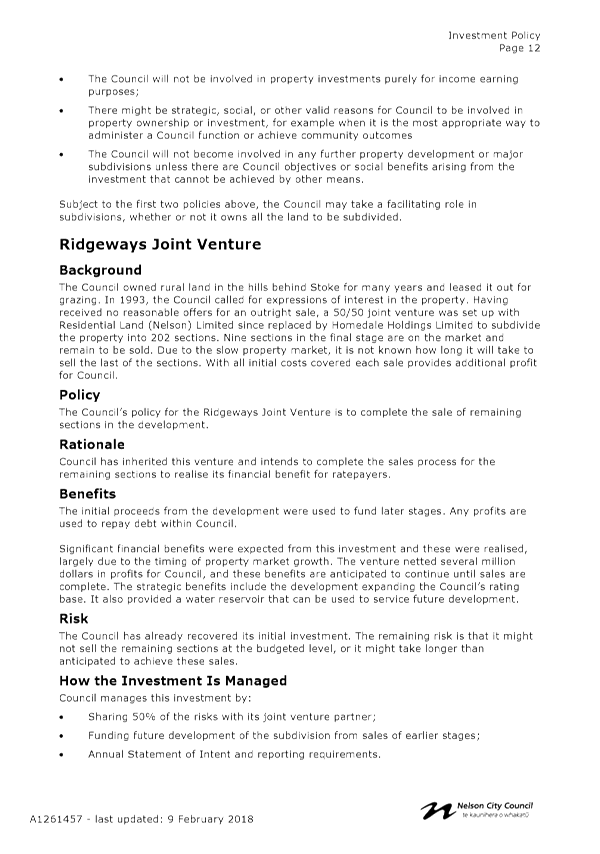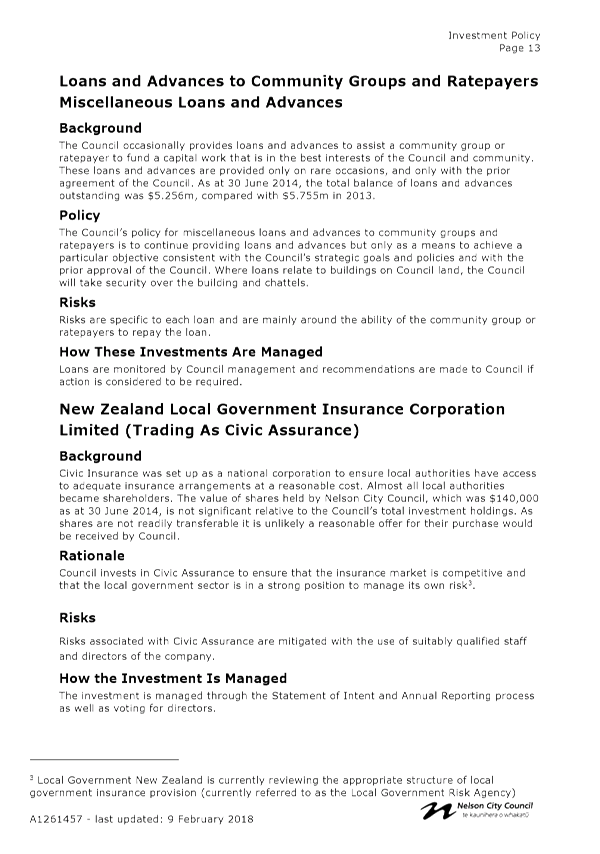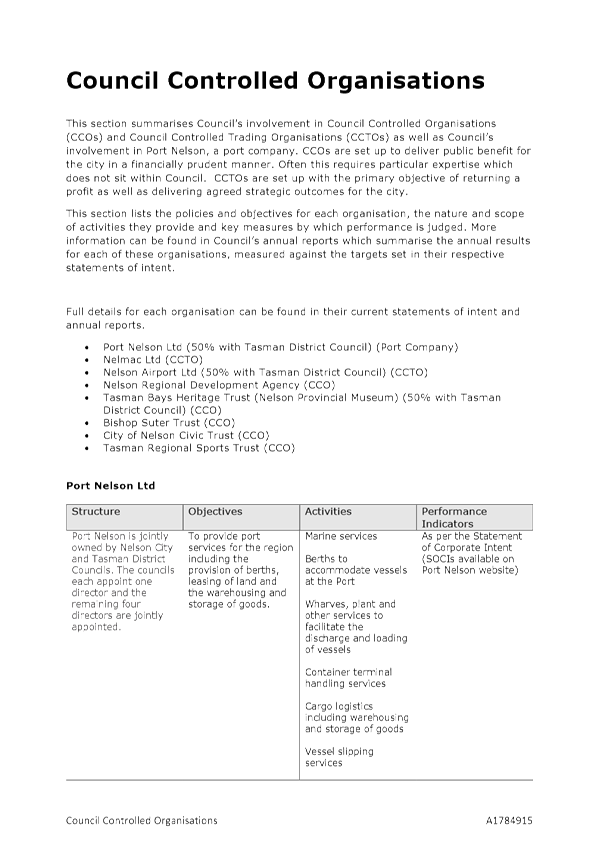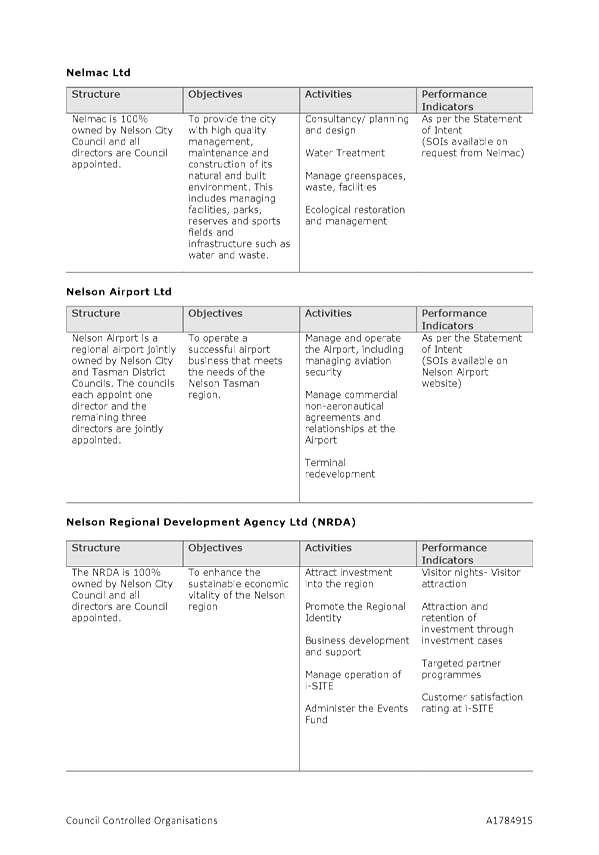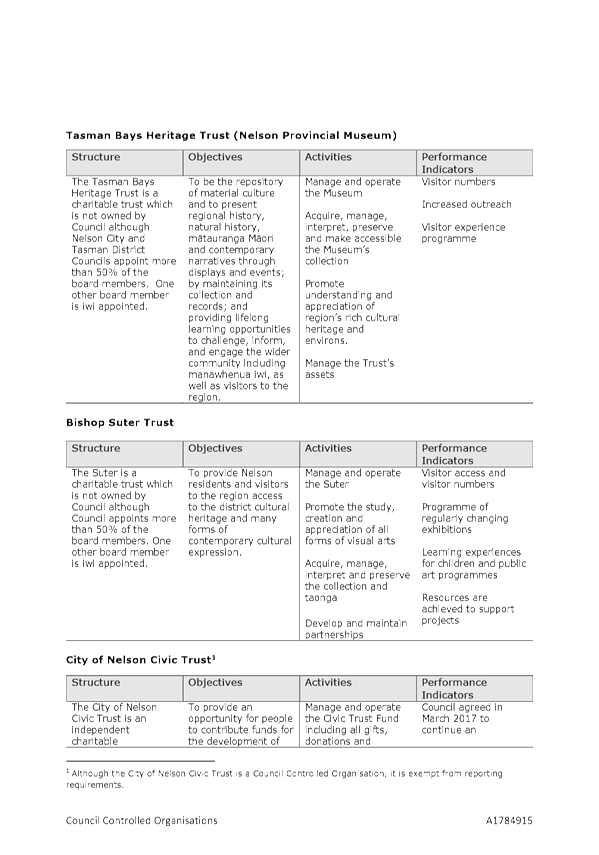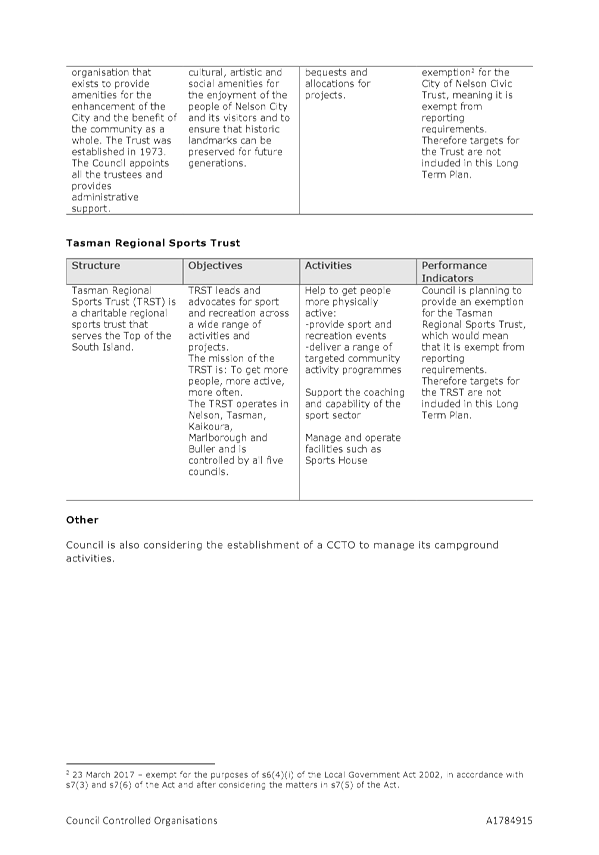Nelson City Council Minutes - 14
December 2017

Minutes of a meeting of
the Nelson City Council
Held in the Council
Chamber, Civic House, 110 Trafalgar Street, Nelson
On Thursday 14 December
2017, commencing at 9.04am
Present: Her
Worship the Mayor R Reese (Chairperson), Councillors L Acland, Councillor I
Barker, M Courtney, B Dahlberg, K Fulton, M Lawrey, P Matheson, B McGurk, G
Noonan, M Rutledge, T Skinner and S Walker
In
Attendance: Chief Executive (P Dougherty), Group Manager
Infrastructure (A Louverdis), Group Manager Strategy and Environment (C
Barton), Group Manager Community Services (C Ward), Group Manager Corporate
Services (N Harrison), Senior Strategic Adviser (N McDonald), Manager
Communications (P Shattock) and Governance Adviser (E Stephenson)
Apology/ies : Nil
Opening
Prayer
Councillor Skinner gave the opening prayer.
1. Apologies
There
were no apologies.
2. Confirmation of Order of Business
Her Worship
the Mayor advised of one late item for the public excluded part of the meeting,
which was not included in the agenda due to an administrative oversight and
that the following resolution needed to be passed for the item to be
considered:
2.1 Nelson
Festivals Trust Chair Appointment
|
Resolved CL/2017/549
That the Council
Considers the public excluded
item regarding Nelson Festivals Trust Chair Appointment at this meeting as a
major item not on the agenda, pursuant to Section 46A(7)(a) of the Local
Government Official Information and Meetings Act 1987, to enable a timely
decision to be made.
Barker/Courtney Carried
|
Her Worship the Mayor advised the
meeting that:
· Agenda
Items 12 – Trafalgar Park Corporate Boxes and 13 – Nelson Marina
Strategy – Adoption of Strategy, would be considered after the
Mayor’s report
· the
recommendation in the agenda to confirm the 7 December 2017 Council minutes was
not required
· there
were no Youth Councillors present at the meeting.
Her Worship the Mayor acknowledged
the Youth Council for its involvement and work in the last year and thanked
staff.
3. Interests
Councillors Barker and Dahlberg
subsequently declared an interest in Item 4 of the public excluded agenda
– Tahuna Beach Camp lease and left the meeting for that item.
4. Public Forum
There was no public forum.
5. Confirmation of Minutes
5.1 9 November 2017
Document number M3092, agenda
pages 22 - 41 refer.
Councillor Skinner requested a
correction to his name on the first page of the minutes.
|
Resolved CL/2017/550
That the Council
Confirms the
minutes of the meeting of the Council, held on 9 November 2017, as amended,
as a true and correct record.
Skinner/Walker Carried
|
6. Status Report - Council - 14
December 2017
Document number R8783, agenda
pages 42 - 50 refer.
Group Manager Infrastructure,
Alec Louverdis, answered questions.
|
Resolved CL/2017/551
That the Council
Receives the Status Report
Council 14 December 2017 (R8783)
and its attachment (A1168168).
Noonan/Fulton Carried
|
7. Mayor's Report
Document number R8107, agenda
pages 51 - 52 refer.
In speaking to her report, Her
Worship the Mayor:
·
acknowledged the arts community’s part in the Christmas
display
·
noted the importance of applying a good social enterprise model
for Christmas
·
thanked Project Manager Ian Wallace for his work on Trafalgar
Street
·
acknowledged sponsors and helpers for Nelson’s Christmas
Celebration
·
advised that a review of the Travel and Training Policy would
take place in the new year
·
spoke about the recording of sunshine hours, noting that there
was officially no difference between Richmond and Nelson’s sunshine
hours, the difference had been acknowledge by NIWA as due to the recording
equipment.
|
Resolved CL/2017/552
That the Council
Receives the Mayor's Report
(R8107).
Her Worship the Mayor/Barker Carried
|
8. Trafalgar Park Corporate Boxes
Document number R8761, agenda
pages 137 - 148 refer.
Property Parks and Facilities
Asset Manager, Andrew Petherham, answered questions.
A correction was noted to
Attachment 1 (A1872900) that Dave McLeod was an Architectural Designer, not
Owner/Architect.
Questions were answered on the
appearance of the front of the building and on consent fees for the project.
The officer’s recommendation was moved and seconded.
|
That the Council
Receives the report Trafalgar
Park Corporate Boxes (R8761)
and its attachment (A1872900); and
Approves
in principle the proposal by the Tasman Rugby Union to construct corporate
boxes within the West Grandstand, North End, Trafalgar Park, subject to an agreement and detailed design that is to
the satisfaction of the Chief Executive the Chair of the Sports and
Recreation Committee including that:
1. Design, consent and construction be at no cost to the
Council; and
2. The construction process be managed and undertaken by the
Tasman Rugby Union; and
3. The Project Manager be approved by the Council; and
4. The construction contractor be approved by the Council;
and
5. The corporate boxes be owned, insured and maintained by
the Council; and
6. The corporate boxes be hired on a commercial basis to
event organisers at Trafalgar Park, recognising depreciation and operating
costs; and
7. The hirer may retain revenue earned from the use of the
corporate boxes.
Matheson/Noonan
|
Councillor Lawrey, seconded by
Councillor Fulton moved an amendment to include the Mayor in paragraph two of
the motion, to satisfy his concerns regarding the appearance of the building.
|
Amendment
That the Council
Receives the report Trafalgar Park
Corporate Boxes (R8761) and its
attachment (A1872900); and
Approves
in principle the proposal by the Tasman Rugby Union to construct corporate
boxes within the West Grandstand, North End, Trafalgar Park, subject to an agreement and detailed design that is to
the satisfaction of the Chief Executive the Chair of the Sports and
Recreation Committee and the Mayor including that:
1. Design, consent and construction be at no cost to the
Council; and
2. The construction process be managed and undertaken by the
Tasman Rugby Union; and
3. The Project Manager be approved by the Council; and
4. The construction contractor be approved by the Council;
and
5. The corporate boxes be owned, insured and maintained by
the Council; and
6. The corporate boxes be hired on a commercial basis to
event organisers at Trafalgar Park, recognising depreciation and operating
costs; and
7. The hirer may retain revenue earned from the use of the
corporate boxes.
The amendment was lost.
|
A further amendment was moved by
Councillor Rutledge, seconded by Councillor Dahlberg for the removal of the
word ‘consent’ from clause 1 of the motion and the addition of a
further clause (8) agreeing that Council fund $5,000 towards the building
consent fees.
|
Amendment
That the Council
Receives the report Trafalgar Park
Corporate Boxes (R8761) and its
attachment (A1872900); and
Approves
in principle the proposal by the Tasman Rugby Union to construct corporate
boxes within the West Grandstand, North End, Trafalgar Park, subject to an agreement and detailed design that is to
the satisfaction of the Chief Executive and the Chair of Sports and
Recreation Committee including that:
1. Design, consent and construction be at no cost to the Council; and
2. The construction process be managed and undertaken by the
Tasman Rugby Union; and
3. The Project Manager be approved by the Council; and
4. The construction contractor be approved by the Council;
and
5. The corporate boxes be owned, insured and maintained by
the Council; and
6. The corporate boxes be hired on a commercial basis to
event organisers at Trafalgar Park, recognising depreciation and operating
costs; and
7. The hirer may retain revenue earned from the use of the
corporate boxes.
8. Nelson City
Council grants Tasman Rugby Union up to $5,000 towards building consent costs
from the Sports and Recreation budget.
The amendment was lost.
|
The
substantive motion was put.
|
Resolved
CL/2017/553
That the Council
Receives the report Trafalgar
Park Corporate Boxes (R8761)
and its attachment (A1872900); and
Approves
in principle the proposal by the Tasman Rugby Union to construct corporate
boxes within the West Grandstand, North End, Trafalgar Park, subject to an agreement and detailed design that is to
the satisfaction of the Chief Executive the Chair of the Sports and
Recreation Committee including that:
1. Design, consent and construction be at no cost to the
Council; and
2. The construction process be managed and undertaken by the
Tasman Rugby Union; and
3. The Project Manager be approved by the Council; and
4. The construction contractor be approved by the Council;
and
5. The corporate boxes be owned, insured and maintained by
the Council; and
6. The corporate boxes be hired on a commercial basis to
event organisers at Trafalgar Park, recognising depreciation and operating
costs; and
7. The hirer may retain revenue earned from the use of the
corporate boxes.
Matheson/Noonan Carried
|
Attendance: Councillor Rutledge left
the meeting at 10.16am.
9. Nelson Marina Strategy - Adoption
of Strategy
Document number R8788, agenda
pages 149 - 212 refer.
Property Parks and Facilities
Asset Manager, Andrew Petherham answered questions.
Attendance: Councillor Rutledge returned to the meeting at
10.21am.
The meeting agreed to record a
vote of thanks to the Nelson Marina Advisory Group.
|
Resolved CL/2017/554
That the Council
Thanks the Nelson
Marina Advisory Group for its time and effort in the development of the
Nelson Marina Strategy.
Noonan/Rutledge Carried
|
|
Resolved CL/2017/555
That the Council
Adopts
the Nelson Marina Strategy included in Report R8081 as Attachment 1
(A1860198), with minor amendments.
Noonan/Fulton Carried
|
The meeting was adjourned at
10.28am and reconvened at 10.55am.
10. Approval of the Revenue and
Financing Policy
Document number R8763, agenda
pages 53 - 81 refer.
Group Manager Corporate Services
Nikki Harrison answered questions.
The meeting agreed to add the
words ‘in principle’ to the motion, on the basis that this was a
draft policy which would be included as supporting information for public
consultation on the Long term Plan.
|
Resolved CL/2017/556
That the Council
Receives the report Approval of
the Revenue and Financing Policy (R8763)
and its attachment (A1849376); and
Approves
in principle the Revenue and Financing Policy for concurrent consultation
through the Long Term Plan 2018-28 consultation process.
Barker/Dahlberg Carried
|
11. Policy on the Remission and
Postponement of Rates for Maori Freehold Land
Document number R8765, agenda
pages 82 - 88 refer.
Group Manager Corporate Services
Nikki Harrison and Senior Strategic Adviser Nicky McDonald updated the meeting
on consultation with interested parties and answered questions.
|
Resolved CL/2017/557
That the Council
Receives the report Policy on
the Remission and Postponement of Rates for Maori Freehold Land (R8765) and
its attachments (A1866276 and A1827012);
and
Approves
the draft Policy on the Remission and Postponement of Rates for Maori
Freehold Land for concurrent consultation through the Long Term Plan process.
Fulton/Dahlberg Carried
|
12. Assumptions for the Long
Term Plan 2018-28 – Item 10
Document
number R7453, agenda pages 89 - 100 refer.
Group
Manager Corporate Services Nikki Harrison and Senior Strategic Adviser Nicky
McDonald answered questions.
The meeting
agreed to add the words ‘in principle’ to the motion, based on the
fact that assumptions may be better informed when the Central Government
Climate Change Guidelines have been received.
Attendance: Councillor Lawrey left the meeting from 11.24am,
to 11.27am.
|
Resolved CL/2017/558
That the Council
Receives the report Assumptions
for the Long Term Plan 2018-28 (R7453)
and its attachment (A1725210); and
Approves
in principle the significant forecasting
assumptions in A1725210 for use in the 2018-28 Long Term Plan.
McGurk/Fulton Carried
|
13. Civic House Accommodation
Document number R8730, agenda
pages 101 - 136 refer.
Group Manager Corporate Services
Nikki Harrison and Project Manager Lois Plum answered questions.
|
Resolved CL/2017/559
That the Council
Receives the report Civic House
Accommodation (R8730) and its
attachments (A1811490, A1869434, A8169430, A1872484, A1868366, A1869620); and
Approves
the high level implementation plan for Civic House Floor
one outlined in Attachment 2 (A1869434); and
Approves
the use of Civic House Level 6 for Council staff on a permanent basis; and
Agrees
to put future funding into the Long Term Plan 2018-28 for subsequent floor
upgrades outlined in the Attachments 4 and 5 (A1869430 and A1872484)
and supports the potential sequence of upgrades and costs; and
Commits
to further investigate the option outlined in Attachment 6 (A1868366)
of moving the Council Chamber to the ground floor taking into consideration
the activation on Trafalgar Street; and
Approves
reviewing the potential to offset the costs of the upgrades with consolidation
of property assets.
Rutledge/Dahlberg Carried
|
14. Administrative Matters
Report
Team Leader
Governance, Robyn Byrne, answered questions.
Councillors
raised concerns about the recording of non-attendance to reconvened meetings
when a conflict of interest had been declared. Ms Byrne advised councillors to
contact the Governance Advisers if in doubt.
Document number R8103, agenda
pages 213 - 233 refer.
|
Resolved CL/2017/560
That the Council
Receives the report
Administrative Matters Report (R8103)
and its attachments (A1722167, A1743623, A1876003, A1645289 and A1819249);
and
Confirms
the approval of the fixing of the seal in relation to those documents and the
warrants of appointment detailed in the Schedule of Documents Sealed
(A1819249); and
Updates
the Delegations Register to reflect that all powers relating to the Brook
Waimarama Sanctuary Trust applications for further funding from the provision
set aside in the Annual Plan 2017/18 are referred to Council; and
Updates
the Delegations Register to reflect that the Trafalgar Centre is the
responsibility of the Sports and Recreation Committee.
Matheson/Barker Carried
|
15. Commercial Subcommittee - 16
November 2017
Document number M3136, agenda
pages 234 - 238 refer.
|
Resolved CL/2017/561
That the Council
Receives the unconfirmed minutes
of a meeting of the Commercial Subcommittee, held on 16 November 2017.
Barker/Courtney Carried
|
16. Joint Committee - 7 November
2017
Document number M3088, agenda
pages 239 - 248 refer.
|
Resolved CL/2017/562
That the Council
Receives the unconfirmed minutes
of a meeting of the Joint Committee, held on 7 November 2017.
Barker/Noonan Carried
|
17. Hearings Panel - Other - 9 November
2017
Document number M3105, agenda
pages 249 - 251 refer.
|
Resolved CL/2017/563
That the Council
Receives the unconfirmed minutes
of a meeting of the Hearings Panel - Other, held on 9 November 2017.
Matheson/Skinner Carried
|
18. Civil Defence Emergency
Management Group - 14 November 2017
Document number M3115, agenda
pages 252 - 255 refer.
|
Resolved CL/2017/564
That the Council
Receives the unconfirmed minutes
of a meeting of the Civil Defence Emergency Management Group, held on 14
November 2017.
Her Worship the Mayor/Walker Carried
|
19. Joint Shareholders Committee
- 14 November 2017
Document number M3117, agenda
pages 256 - 260 refer.
|
Resolved CL/2017/565
That the Council
Receives the unconfirmed minutes
of a meeting of the Joint Shareholders Committee, held on 14 November 2017.
Barker/Courtney Carried
|
20. Audit, Risk and Finance
Subcommittee - 14 November 2017
Document number M3123, agenda
pages 261 - 268 refer.
|
Resolved CL/2017/566
That the Council
Receives the unconfirmed minutes
of a meeting of the Audit, Risk and Finance Subcommittee, held on 14 November
2017.
Barker/Dahlberg Carried
|
20.1 Health and Safety:
Quarterly Report
|
Resolved CL/2017/567
That
the Council
Notes
the report Health and Safety: Quarterly Report (R7022) and its attachment (A1845583); and
Acknowledges
the assessment of critical health and safety risks contained in the
attachment (A1845583).
Barker/Dahlberg Carried
|
20.2 Tax Risk Management Strategy
|
Resolved CL/2017/568
That
the Council
Adopts
the Tax Risk Management Strategy (A1847439).
Barker/Dahlberg Carried
|
21. Works and Infrastructure
Committee - 16 November 2017
Document number M3128, agenda
pages 269 - 275 refer.
|
Resolved CL/2017/569
That the Council
Receives the unconfirmed minutes
of a meeting of the Works and Infrastructure Committee, held on 16 November
2017.
Walker/Skinner Carried
|
21.1 Capital Expenditure
Programme - Requests for Change
|
Resolved CL/2017/570
That the Council
Approves
with respect to project 2968 Orphanage Stream/Sunningdale Drive flood
protection, that $84,159 from 2018-19 budget be transferred to the 2017-18
budget; and
Approves
with respect to project 1187 Neale Park sewer pump station upgrade, that
construction work be re-phased over two years and $1,116,729 from 2017-18
budget be transferred to the 2018-19 budget; and
Approves
with respect to project 2624 Nile Street East Stormwater and flood
protection, that construction work be re-phased to 2018-19 and $772,904 from
2017-18 budget be transferred to the 2018-19 budget.
Walker/Matheson Carried
|
21.2 Waste Assessment and
Joint Waste Management and Minimisation Plan
|
Resolved CL/2017/571
That
the Council
Approves
the formation of a Joint Nelson City Council/Tasman District Council Working
Party to advise both Councils on the review of the Nelson Tasman Joint Waste
Management and Minimisation Plan 2012, subject to a reciprocal agreement by
Tasman District Council; and
Approves
the Draft Terms of Reference as amended to reflect the removal of the words
‘co-opt and change of quorum to five, including two councillors from
each council (A1831374); and
Appoints
Councillors Walker, Barker and Lawrey as Nelson City Council members of the
Joint Council Waste Working Party; and
Notes
that the Joint Council Waste Working Party will report back to this
Council’s Works and Infrastructure Committee to ensure that the Joint
Waste Management and Minimisation Plan can be adopted by April 2018.
Walker/Matheson Carried
|
22. Sports and Recreation
Committee - 21 November 2017
Document number M3152, agenda
pages 276 - 286 refer.
|
Resolved CL/2017/572
That the Council
Receives the unconfirmed minutes
of a meeting of the Sports and Recreation Committee, held on 21 November
2017.
Skinner/Rutledge Carried
|
22.1 Nelson City Council
Easement - Bishopdale Reserve
|
Resolved CL/2017/573
That the Council
Grants
the easement in gross, meaning granting the easement to Nelson City Council
rather than to property, in favour of Nelson City Council over the area shown
in blue on the plan (A1832806) of Bishopdale Reserve with all legal costs
associated with the easement to be met by Nelson City Council; and
Confirms
the easement be agreed to under section 48(1)(d) of the Reserves Act 1977,
acting pursuant to a delegation from the Minister of Conservation.
Skinner/Rutledge Carried
|
22.2 Capital Expenditure
Programme - Requests for Change
|
Resolved CL/2017/574
That the Council
Approves,
with respect to project 1074 Stoke Youth Park, that $52,660 from 2017-18
budget be deferred to the Long Term Plan 2018-28, and that overall project
phasing and budget be considered in the Long Term Plan 2018-28.
Skinner/Fulton Carried
|
22.3 Saxton Field Footpath
Easement - Radio NZ
|
Resolved CL/2017/575
That
the Council
Requests
to the granting of a blanket easement (easement in gross) in favour of Nelson
City Council from Radio New Zealand. The easement in gross is granted
not specifically to any parcel of land but exclusively to Nelson City
Council. The easement area is shown in red on the plan Attachment
One (A1837467) of the Saxton Fields Reserve with all legal costs associated
with the easement over Saxton Fields Reserve to be met by the project budget;
and
Confirms
the easement be agreed under section 48(1) (d) of the Reserves
Act 1977, acting pursuant to a delegation from the Minister of Conservation.
Skinner/Rutledge Carried
|
22.4 Nelson Marina
Strategy - Adoption of Strategy
|
A separate
report regarding this recommendation was considered as Item 13 on the Agenda.
|
23. Planning and Regulatory
Committee - 23 November 2017
Document number M3148, agenda
pages 287 - 295 refer.
|
Resolved CL/2017/576
That the Council
Receives the unconfirmed minutes
of a meeting of the Planning and Regulatory Committee, held on 23 November
2017.
McGurk/Her Worship the Mayor Carried
|
23.1 Compliance Strategy
|
Resolved CL/2017/577
That
the Council
Approves
the Compliance Strategy 2017 to guide staff and contractors in the exercise
of enforcement obligations on behalf of the Council.
McGurk/Her Worship the Mayor Carried
|
23.2 Nelson Plan
Resourcing
|
Resolved CL/2017/578
That
the Council
Allocates
an additional unbudgeted $600,000 for the development of the Nelson Plan in
the 2017/2018 financial year; and
Notes
that some increases in the 2017/2018 financial year will be offset by
reducing budget projections for 2018/2019 by $300,000 and savings
in consultant costs by employing an additional staff member and as
recruitment of vacancies is achieved.
McGurk/Fulton Carried
|
24. Community Services Committee
- 28 November 2017
Document number M3168, agenda
pages 296 - 304 refer.
|
Resolved CL/2017/579
That the Council
Receives the unconfirmed minutes
of a meeting of the Community Services Committee, held on 28 November 2017.
Noonan/Courtney Carried
|
24.1 Nelson Festivals
Trust Deed
|
Resolved CL/2017/580
That
the Council
Approves
the draft Nelson Festivals Trust Deed (A1867010), with the following
amendment:
·
no casting vote.
·
two of the trustees to be appointed by the Council, on an
ongoing basis.
Noonan/Courtney Carried
|
24.2 Community Investment
Fund - Priorities and Review
|
Resolved CL/2017/581
That
the Council
Approves
that the Community Assistance Policy be renamed the Community Investment
Policy; and
Approves
the amended Community Investment Policy (A1854528); and
Approves
the amended Terms of Reference for the Community Investment Funding Panel
(A1854597); and
Re-appoints the current Community Investment Funding panel community
representatives (Graeme Thomas, Katy Steele, Rachel Saunders, Susan
Hawthorne) for the 2018/19 funding allocations; and
Notes
that all four community representative roles will be re-advertised prior to
2019/20 funding allocations; and
Approves
the Community Investment Fund priorities (A1833653) for funding allocations
to be made from the fund in 2018/19.
Noonan/Courtney Carried
|
24.3 Establishment of
Nelson Whakatu Menzshed
|
Resolved CL/2017/582
That
the Council
Approves
the granting of a Community Lease for Nelson Whakatu Menzshed at 236 Haven
Road as outlined in red on Attachment one (A1860796) of report R8694 for a
period of one year at an annual rent of $532 + GST; and
Approves
the completion of necessary electrical works (funded from the $10,000 set
aside for development of a Menzshed in the 2017/18 Annual Plan) to the
building prior to commencement of a lease; and
Approves
the release of residual funding from the $10,000 set aside in the 2017/18
Annual Plan to the amalgamated Menzshed group to assist with further
establishment costs.
Noonan/Courtney Carried
|
25. Hearings Panel - Other - 29
November 2017
Document number M3175, agenda
pages 305 - 307 refer.
|
Resolved CL/2017/583
That the Council
Receives the unconfirmed minutes
of a meeting of the Hearings Panel - Other, held on 29 November 2017.
McGurk/Walker Carried
|
26. Governance Committee - 30
November 2017
Document number M3179, agenda
pages 308 - 315 refer.
|
Resolved CL/2017/584
That the Council
Receives the unconfirmed minutes
of a meeting of the Governance Committee, held on 30 November 2017.
Barker/Dahlberg Carried
|
26.1 Statement of Expectation
2018/19 - Bishop Suter Trust
|
Resolved CL/2017/585
That
the Council
Confirms
the general matters to be included in the Bishop Suter Trust Statement of
Expectation letter as those identified in paragraphs 4.1 to 4.14 of report
R8745; and
Confirms
the specific matters to be included in the Bishop Suter Trust Statement of
Expectation letter as:
• Development
of a five year strategic plan, that;
- Articulates a clear vision for the Suter; and
- Identifies issues, opportunities and costs associated
with delivering on that vision, including:
o Opportunities
to increase third party funding
o Ensuring the
staff have the right skills and capacity
o Demonstrates
Commitment to the principals of good asset management
o Optimising
the Governance Group’s skillset and blend; and
• Development
of a Governance succession plan;
• Cybersecurity;
and
• Sustainability;
and
• Recovery planning, in particular a request to
identify potential hazards and how recovery is planned for these hazards.
Barker/Dahlberg Carried
|
26.2 Statement of
Expectation 2018/19 - Nelson Regional Development Agency
|
Resolved CL/2017/586
That
the Council
Confirms
the general matters to be included in the Nelson Regional Development Agency
Statement of Expectation letter as those identified in paragraphs 4.1 to 4.14
of report R8745; and
Confirms
the specific matters to be included in the Statements of Expectation letters
as:
·
Cybersecurity; and
·
Sustainability; and
·
Recovery planning, in particular a request to identify
potential hazards and how recovery is planned for these hazards.
·
Revised performance measures.
Barker/Dahlberg Carried
|
26.3 Draft Rates
Remissions Policy
|
Resolved CL/2017/587
That
the Council
Approves
changes to the Rates Remission Policy for concurrent consultation during the
submission process for the Consultation Document to the Long Term Plan
2018-28.
Barker/Dahlberg Carried
|
27. Regional Transport Committee
- 27 November 2017
Document number M3166, agenda
pages 316 - 320 refer.
|
Resolved CL/2017/588
That the Council
Receives the unconfirmed minutes
of a meeting of the Regional Transport Committee, held on 27 November 2017.
Matheson/Noonan Carried
|
28. Exclusion of the Public
|
Resolved CL/2017/589
That
the Council
Excludes
the public from the following parts of the proceedings of this meeting.
The
general subject of each matter to be considered while the public is excluded,
the reason for passing this resolution in relation to each matter and the
specific grounds under section 48(1) of the Local Government Official
Information and Meetings Act 1987 for the passing of this resolution are as
follows:
Courtney/Barker Carried
|
|
Item
|
General subject of each matter to be considered
|
Reason for passing this resolution in relation to
each matter
|
Particular interests protected (where applicable)
|
|
1
|
Council Meeting - Public
Excluded Minutes - 9 November 2017
|
Section 48(1)(a)
The public conduct of this
matter would be likely to result in disclosure of information for which good
reason exists under section 7.
|
The withholding of the
information is necessary:
·
Section 7(2)(a)
To
protect the privacy of natural persons, including that of a deceased person
·
Section 7(2)(h)
To enable the local
authority to carry out, without prejudice or disadvantage, commercial
activities
· Section
7(2)(i)
To enable the local
authority to carry on, without prejudice or disadvantage, negotiations
(including commercial and industrial negotiations)
|
|
2
|
Status Report - Council
- Public Excluded - 14 December 2017
|
Section 48(1)(a)
The public conduct of this
matter would be likely to result in disclosure of information for which good
reason exists under section 7
|
The withholding of the
information is necessary:
· Section 7(2)(h)
To enable the local
authority to carry out, without prejudice or disadvantage, commercial activities
· Section
7(2)(i)
To enable the local
authority to carry on, without prejudice or disadvantage, negotiations
(including commercial and industrial negotiations)
|
|
3
|
Nelmac Statement of
Expectation 2018/19
|
Section 48(1)(a)
The public conduct of this matter
would be likely to result in disclosure of information for which good reason
exists under section 7
|
The withholding of the
information is necessary:
· Section 7(2)(i)
To enable the local
authority to carry on, without prejudice or disadvantage, negotiations
(including commercial and industrial negotiations)
|
|
4
|
Tahuna Beach Camp lease
|
Section 48(1)(a)
The public conduct of this
matter would be likely to result in disclosure of information for which good
reason exists under section 7
|
The withholding of the
information is necessary:
· Section 7(2)(h)
To enable the local
authority to carry out, without prejudice or disadvantage, commercial
activities
· Section
7(2)(i)
To enable the local
authority to carry on, without prejudice or disadvantage, negotiations
(including commercial and industrial negotiations)
|
|
5
|
Nelson Festivals Trust
Chair Appointment
|
Section 48(1)(a)
The public conduct of this
matter would be likely to result in disclosure of information for which good
reason exists under section 7
|
The withholding of the
information is necessary:
· Section 7(2)(a)
To protect the privacy of
natural persons, including that of a deceased person
|
|
6
|
Commercial Subcommittee
Meeting - Public Excluded Minutes - 16 November 2017
|
Section 48(1)(a)
The public conduct of this
matter would be likely to result in disclosure of information for which good
reason exists under section 7.
|
The withholding of the
information is necessary:
· Section 7(2)(h)
To enable the local
authority to carry out, without prejudice or disadvantage, commercial
activities
|
|
7
|
Joint Committee Meeting
- Public Excluded Minutes - 7 November 2017
|
Section 48(1)(a)
The public conduct of this
matter would be likely to result in disclosure of information for which good reason
exists under section 7.
|
The withholding of the
information is necessary:
· Section 7(2)(i)
To enable the local
authority to carry on, without prejudice or disadvantage, negotiations
(including commercial and industrial negotiations)
|
|
8
|
Civil Defence Emergency
Management Group Meeting - Public Excluded Minutes - 14 November 2017
|
Section 48(1)(a)
The public conduct of this
matter would be likely to result in disclosure of information for which good
reason exists under section 7.
|
The withholding of the
information is necessary:
· Section 7(2)(a)
To
protect the privacy of natural persons, including that of a deceased person
|
|
9
|
Joint Shareholders
Committee Meeting - Public Excluded Minutes - 14 November 2017
|
Section 48(1)(a)
The public conduct of this
matter would be likely to result in disclosure of information for which good
reason exists under section 7.
|
The withholding of the
information is necessary:
· Section 7(2)(b)(ii)
To protect information
where the making available of the information would be likely unreasonably to
prejudice the commercial position of the person who supplied or who is the
subject of the information
|
|
10
|
Audit, Risk and Finance
Subcommittee Meeting - Public Excluded Minutes - 14 November 2017
|
Section 48(1)(a)
The public conduct of this
matter would be likely to result in disclosure of information for which good
reason exists under section 7.
|
The withholding of the
information is necessary:
· Section 7(2)(a)
To
protect the privacy of natural persons, including that of a deceased person
|
|
11
|
Works and Infrastructure
Committee Meeting - Public Excluded Minutes - 16 November 2017
|
Section 48(1)(a)
The public conduct of this
matter would be likely to result in disclosure of information for which good
reason exists under section 7.
|
The withholding of the
information is necessary:
· Section 7(2)(a)
To
protect the privacy of natural persons, including that of a deceased person
·
Section 7(2)(i)
To
enable the local authority to carry on, without prejudice or disadvantage, negotiations
(including commercial and industrial negotiations)
|
|
12
|
Sports and Recreation
Committee Meeting - Public Excluded Minutes - 21 November 2017
|
Section 48(1)(a)
The public conduct of this
matter would be likely to result in disclosure of information for which good
reason exists under section 7.
|
The withholding of the
information is necessary:
· Section 7(2)(i)
To enable the local
authority to carry on, without prejudice or disadvantage, negotiations
(including commercial and industrial negotiations)
|
|
13
|
Planning and Regulatory
Committee Meeting - Public Excluded Minutes - 23 November 2017
|
Section 48(1)(a)
The public conduct of this
matter would be likely to result in disclosure of information for which good
reason exists under section 7.
|
The withholding of the
information is necessary:
· Section 7(2)(a)
To
protect the privacy of natural persons, including that of a deceased person
· Section 7(2)(i)
To enable the local
authority to carry on, without prejudice or disadvantage, negotiations
(including commercial and industrial negotiations)
|
|
14
|
Community Services
Committee Meeting - Public Excluded Minutes - 28 November 2017
|
Section 48(1)(a)
The public conduct of this
matter would be likely to result in disclosure of information for which good
reason exists under section 7.
|
The withholding of the
information is necessary:
· Section 7(2)(a)
To
protect the privacy of natural persons, including that of a deceased person
|
The meeting went into public
excluded session at 12.00pm and resumed in public session at 1.23pm.
|
Re-admittance of the Public
|
|
Resolved CL/2017/607
That the Council
Re-admits
the public to the meeting.
Her Worship the Mayor/Fulton Carried
|
The meeting was adjourned until
1.44pm, at which time Councillors Barker and Dahlberg left the meeting.
|
Exclusion of the Public
|
|
|
Resolved CL/2017/608
That
the Council
Excludes
the public from the following parts of the proceedings of this meeting.
The
general subject of each matter to be considered while the public is excluded,
the reason for passing this resolution in relation to each matter and the
specific grounds under section 48(1) of the Local Government Official
Information and Meetings Act 1987 for the passing of this resolution are as
follows:
Her Worship the Mayor/Skinner Carried
|
|
|
Item
|
General subject of each matter to be considered
|
Reason for passing this resolution in relation to
each matter
|
Particular interests protected (where applicable)
|
|
4
|
Tahuna Beach Camp lease
|
Section 48(1)(a)
The public conduct of this
matter would be likely to result in disclosure of information for which good
reason exists under section 7
|
The withholding of the
information is necessary:
· Section 7(2)(h)
To enable the local
authority to carry out, without prejudice or disadvantage, commercial
activities
· Section
7(2)(i)
To enable the local
authority to carry on, without prejudice or disadvantage, negotiations
(including commercial and industrial negotiations)
|
|
|
|
|
|
|
The meeting went into public
excluded session at 1.45pm and resumed in public session at 2.29pm.
29. Re-admittance of the Public
|
Resolved CL/2017/590
That
the Council
Re-admits
the public to the meeting.
Her Worship the Mayor/Skinner Carried
|
There being no further business the
meeting ended at 2.29pm.
Confirmed as a correct record of proceedings:

 Chairperson
Date
Chairperson
Date
Item
6: Audit of Long Term Plan 2018-28 Consultation Document: Attachment 3
Council activities
Council structures its work
programme around eleven activities:
· Transport
· Water supply
· Wastewater
· Stormwater
· Flood Protection
· Solid waste
· Environment
· Social
· Parks and active recreation
· Economic
· Corporate
If you are interested in finding out
more about a particular project this section is a good place to start. The key
projects and budgets for the 10 years of this Plan are included in the relevant
activity sections.
What has changed since
the 2015 Long Term Plan? Solid waste has moved from within the Environment
activity and is now a stand-alone activity, recognising the joint landfill
operation with Tasman District Council. Civil defence emergency management has
moved from the Environment activity to Corporate, which is a more appropriate
location. Capital expenditure for central business district enhancement is
included in the Economic activity, which is the activity these projects most
directly contribute to.
The activity sections are set out in a consistent way.
There is a brief description of what each activity covers - what we do. Then follows discussion of the
rationale for Council’s involvement - why we do it.
The challenges Council faces in delivering the activity are next and then
the priorities give more detail on key projects. The service levels explain the standard to which Council aims to deliver
and how it measures progress towards targets.
The drivers of capital expenditure show where
the main capital costs lie. Assumptions specific to that activity are followed by a section on impacts
and risks of the activity and how those risks are mitigated.
At the end of each
section is the relevant summary financial
information that sets out the forecast budget
for the next 10 years.
[BELOW FOR GRAPHIC
DESIGNER – for image, not text]
Each activity section
begins with some keywords for a word cloud to convey the breadth of what is
covered in each Council ‘activity’. See example below (using old
data from a previous LTP)

[key words for word
cloud: 251 km sealed roads, 17 km unsealed roads, 97 bridges, culverts,
419 retaining walls, 380 km footpaths and cycleways, data collection,
technology change, on street parking, cycle lanes, public transport, traffic
control, parking control, 8 off-street car parks, 1100 off street parking
spaces, road safety, 4,538 street lights, road signs, traffic signals]
Transport
WHAT
WE DO
Council provides
transport infrastructure for Nelson city, including the roads and paths used for
driving, parking, cycling and walking. Services include road safety, traffic
and parking control, and public transport.
WHY
WE DO IT
Council aims to provide
a transport network, now and into the future that enables the safe and
efficient movement of people and goods throughout Nelson. Enabling regional
freight and tourism movements is essential for economic wellbeing and the city’s
amenity. A well-designed transport system is critical to creating a
liveable city.
Council aims to minimise
the risk of transport disruption as a result of:
· natural hazards such as
earthquakes and flooding
· increasing traffic
movements and congestion
· road maintenance and
renewals.
CHALLENGES
1.
Natural hazards and climate change
The
transport network is essential for all other utilities to get up and running
rapidly after a disaster, so needs to be resilient to natural hazards such as
earthquakes and flooding and the consequences of climate change such as storm
surge and coastal inundation. Council responds to this challenge by focusing
resources on maintaining and developing alternatives routes to arterial roads,
emergency response and repair and integrating the Civil Defence Emergency
Management Lifelines Plan into the Transport Asset Management Plan. Council has
a robust inspection and renewals programme to ensure Council gets the best
value for money for its transport assets.
2.
Existing network capacity
An
increase in tourism and commercial vibrancy has seen growth in the number of
car and freight users and additional demands on the existing road network
including the primary freight corridors to Port Nelson and the airport. Council
has a Regional Transport Plan with Marlborough and Tasman District councils
that prioritises transport projects and responds to this and other challenges.
A key project is to progress the Nelson Southern Link Investigation to better
understand the appropriate response to increasing levels of congestion and
forecast growth, in tandem with the Rocks Road walking and cycling project.
Other projects are a partnership with our neighbours and the New Zealand
Transport Agency that consider the best form, function and hierarchy of the
Richmond and Stoke South transport network, and improvements to the safety and
resilience of the SH6 Blenheim to Nelson route.
3.
Renewal funding
Over
recent years Council has significantly increased its investment in looking
after and renewing its existing assets with the main areas of increased
expenditure on sealed road resurfacing and the replacement of bridges and
retaining walls. However, there is some uncertainty over the New Zealand
Transport Agency’s level of co-investment in these renewal activities,
which will not be resolved until after this Plan is completed. Council responds
to this challenge by having a prioritised renewals programme based on improved
monitoring and data analysis to identify where the focus is most needed. We
regularly update and assess the Road Asset Maintenance Management database.
4.
Growth
The Infrastructure
Strategy considers how we will provide and pay for infrastructure to enable
growth, and explores opportunities to reduce these costs. To support the
growing city, Nelson needs infrastructure that is able to readily adapt to
changes in demand. The biggest challenge is to provide a transport network that
is safe, enables economic development and allows residents to travel
efficiently day to day. Unfortunately, increasing congestion due to limitations
in the network is constraining growth, increasing travel times, limiting other
travel options and causing safety concerns.
The approach
signalled in the 2018 Infrastructure Strategy for Transport includes:
· implementing projects that enable
growth and improve travel time reliability on key journey routes
· investing in initiatives that
provide and promote transport choice
· integrating the Southern Link with
the local network, as the project proceeds
· adopting new technology where it
helps us solve issues or meet objectives.
In addition to the money collected
by Council through development contributions, more funding is required to cater
for the transport demands associated with population growth and development and
to help ensure the region has a well-designed transport network that supports a
liveable city. Better data collection and analysis, monitoring of demand and
growth assumptions and road surface issues will help Council plan for and
respond to growth. The Top of the South councils, in partnership with the New
Zealand Transport Agency, have collaborated to develop a joint Regional Land
Transport Plan that aims to provide the community with an efficient, safe and
resilient road network.
The
key problems and benefits from solving those problems that face land transport
in the Top of the South were collaboratively determined. The following key
problems were identified for a coordinated response:
· Constraints on the transport network
are leading to delays affecting freight, tourism, business and residential
growth
· Lack of redundancy, limited alternative
routes and susceptibility of the network to the impacts of climate change and
high impact natural hazards increases the risk of losing community connectivity
and impacting the economy
· Roads and footpaths do not currently
meet the needs of our ageing population, walkers and cyclists thereby creating
barriers to those wishing to use alternative modes of transport.
5.
Southern Link
Under
the high growth scenario, construction of a new state highway corridor would be
brought forward into the timeframe of the 2018-28 Long Term Plan. Transport
infrastructure between Nelson and Richmond would need to be planned and
designed to respond to any change to the state highway.
To
support this growing city, Nelson needs a transport network that is safe,
enables economic development and allows our residents to travel efficiently day
to day. Unfortunately, increasing congestion is currently constraining our
growth, reducing the city’s amenity, causing safety concerns and simply
not meeting our community’s expectations for a liveable city. Level of
service indicators are showing the problems experienced during peak times are
now extending into off peak times in the morning and afternoons.
Council
supports the Nelson Southern Link Investigation continuing and indeed it is
essential that we make progress on this project if we are to address problems
in the transport network. The Draft Regional Land Transport Plan includes
funding for the design and other associated pre-implementation activities for
the project. The Investigation is a New Zealand Transport Agency project but
Council is seeking progression of the Southern Link and Rocks Road projects as
soon as practical.
The
New Zealand Transport Agency has indicatively ranked the Southern Link project
second as part of the Top of the South Regional Land Transport Plan significant
activities. The next stage will be development of a Detailed Business Case.
This Long Term Plan has been built on the assumption that this project will
proceed and we look forward to working with central government and the
Transport Agency to that end.
6.
Technology
Technological
change will result in new, currently unknown demands on the transport network
to support ride and car share apps and the use of driverless cars. Council
wants to do more work in coming years to respond to this change. There are
opportunities to use new technology to manage parking demand, encourage more
use of electric bikes and cars, trialling and use of autonomous vehicles, and
for Nelson to lead the change to a transport system that meets the needs of an
ageing population.
Our
existing bus ticketing system, is nearing the end of its technological life
cycle and a replacement system is needed as soon as possible. A
consortium of nine regions has agreed to work together to jointly procure an
interim single ticketing solution that will meet immediate ticketing needs for
bus services only. This interim solution is expected to be in place for about
five years until it is replaced by a New Zealand Transport Agency-driven
National Ticketing Programme solution for all of New Zealand’s local
government public transport providers.
COMMUNITY
OUTCOMES
Council’s
transport activity contributes primarily to the following community outcomes:
· Our urban and rural environments are
people-friendly, well planned and sustainability managed
· Our infrastructure is efficient,
cost effective and meets current and future needs
· Our communities have access to a
range of social, educational and recreational facilities and activities
· Our region is supported by an
innovative and sustainable economy
· Our unique natural environment is
healthy and protected
COUNCIL’S
PRIORITIES FOR THE NEXT THREE YEARS
Priorities for the first
three years of the Long Term Plan through until 2020/21 include:
· Improving collection and analysis
of data to inform future decision making and prioritisation at $x over the
10 year period
· City Parking – Council is intending to retain the
first hour free parking with subsequent fees to increase to $2 per hour to
raise additional funding to support the CBD
· Stoke foothills road network –
Investigation of
priorities for required transport projects at a cost of $x over xx years
· Bridge and retaining walls – Inspection and renewal programme to
ensure resilient structural infrastructure. $x has been allocated over the xx
year work programme
· Supporting development of the
Southern Link Investigation
· Re-sealing programme – Council’s priority is
to ensure an appropriate level of service, making
sure the road pavements are kept waterproofed, and to maintain safety through
required skid resistance levels. $x has been
allocated across the ten year work programme
· Investment in roads - Supporting the Nelson Southern Link
Investigation to ensure the city has an effective arterial network which
includes state highways and securing New Zealand Transport Agency funds for our
region
· Cross town links – $x has been
allocated to improve central city cycling and walking facilities, including
along Nile Street
· The Tahunanui cycle
link – planned programme of works for implementation in 2019/20 at a
cost of $x
· A Stoke East/West
connection to improve cycling and walking routes from the Stoke foothills
into central Stoke and the Railway Reserve. This is an integrated project with
planning beginning in 2018/19 and construction currently programmed for 2022/23
· Repainting of the Collingwood
St bridge is planned for 2019 at a cost of $x
· Gloucester St cycle
facilities – planning for a project that would connect to the Southern
Link (if it proceeds) through St Vincent St. This cycle link needs attention
whatever eventuates on St Vincent St and will be integrated with stormwater
work on Gloucester St
· The continuation of
the footpath programme with $x
per year to renew footpaths
· Consideration of upgrading all roads
with an asphalt cement surface to increase durability and reduce noise.
Such a project would be at the full cost to Council (i.e. no New Zealand
Transport Agency funding) of $x in year 20xx
· The parking meter renewal project,
will provide a study into smarter options for parking in the CBD.
SERVICE
LEVELS, PERFORMANCE MEASURES AND TARGETS
|
What Council will
provide
|
Performance measures
|
Current performance
|
Targets
|
Targets years
4 - 10
|
|
Year 1
|
Year 2
|
Year 3
|
|
A safe road network
|
Change from the previous financial
year in the number of fatalities and serious injury crashes on the local road
network
|
2016 - 15 serious injury crashes and
one fatality
2015 – 11 serious injuries
2014 – 10 serious injuries
|
One fewer fatality and serious
injury crashes on the local road network compared to previous year
|
0
|
-1
|
-5
|
|
Smooth sealed road network
|
Average quality of ride on a sealed
local road network, measured by smooth travel exposure by One Network Road
Classification
|
90% in 2016/17, 92% in 2015/16
(target 87% in 2015/16 and 2016/17)
|
The following Smooth Travel Exposure
targets are not exceeded, in each year:
One Network Smooth Travel Exposure
Target
Road Classification
Regional
90%
Arterial 85%
Primary Collector
80%
Secondary
Collector
80%
Access
75%
Low Volume
75%
|
|
Maintenance of sealed local road
network
|
Percentage of the sealed local road
network resurfaced
|
5.6% in 2016/17, 7.4% in 2015/16,
4.8% in 2014/15
(target 6.4-7.4%)
|
Not less than 3% and not more than
8.5%, in each year
|
|
Good quality smooth footpath surface
|
Percentage of footpaths that fall
within the level of service standard for condition of footpath, as in Asset
Management Plan
|
93% of footpath network with
condition rating of 3 or less, 95% in 2014 (only two surveys to date)
|
95% or more of the footpath network
by length has a condition rating between 1 and 3
(1-excellent/3-good/5-very
poor)
|
|
Accessibility -
Providing transport choices via public transport and,
Efficiency – Maximise movement
of people via public transport
|
NBus patronage
|
2014/15
415,326 annual number of passengers
2015/16
414,212 annual number of passengers
2016/17 426,237 annual number
of passengers
|
4% increasing trend over time
|
|
Efficiency – Maximise movement
of people via walk and cycle modes
|
Percentage of the community that
travel to work by walking or cycling
|
2013 Census -
18.3% of commuters made up of walker/joggers 9.6%, cyclists 8.7%.
2016 Residents
Survey - 21% walked or cycled.
2017 Residents Survey - 19% walked
or cycled.
|
Year 1 – 20% combined of all
journeys to work by walking or cycling
Year 2 – 20% combined of all
journeys to work by walking or cycling
Year 3 - 21% combined of all
journeys to work by walking or cycling
Year 4 – 25% combined of all
journeys to work by walking or cycling
|
|
Responsiveness to service requests
|
Percentage of customer service
requests relating to roads and footpaths to which Council responds within
five working days
|
78% in 2016/17, 82% in 2015/16
|
80 % of service requests responded
to within five working days
|
DRIVERS
OF CAPITAL EXPENDITURE
The main capital
expenditure drivers for the region over the next three years are:
· ensuring a resilient and innovative transport
network
· planning integrated and sustainable
developments to respond to population growth and ageing population needs
· walking and cycling projects to
encourage communities to be more active
A proportion of capital
expenditure will be allocated from regional funding, as explained in detail in
the Regional Land Transport Plan.
ASSUMPTIONS
As well as the general
assumptions that apply as the basis for forecasting budgets across
Council’s work, the following specific assumptions apply to
Council’s transport activities. It is assumed that:
· National and regional
funding identified in the Regional Land Transport Plan will be supported in the
National Land Transport Programme
· New Zealand Transport
Agency financial assistance rates will increase from the current 49% to 50% in
2018/19 and a further rise of 1% to 51% in 2019/20
· Integration of the
Nelson Southern Link project with the local road system has not been included but a detailed
business case is planned to be completed by 2019/20 with implementation to
follow
· Tasman District Council
will contribute $80,000 per year to the Nelson / Richmond passenger transport
service and $80,000 to the total mobility service
· The patronage of public
transport will continue to meet Council’s 45 – 55% target for Fare
Box Recovery and this proportion will enable Council to continue to support the
public transport level of service
· The public transport
SuperGold central government bulk funding allocation will reimburse total costs
incurred by Council for administering the scheme
· Energy prices will not
increase or decrease significantly over the next three years with a consequent
effect on vehicle use or shifts to other modes of transport
· Tasman District Council
will continue to promote free parking in Richmond
· Parking meter revenue is
collected at a level of approximately $x each
year
· Free parking for the
first hour will continue over the period covered by this Long Term Plan, with
an increased rate of $2 per subsequent hour.
IMPACTS
AND RISKS
· Since 2014 there has been a
continued upward trend of increased traffic volume along some of our main
arterial routes such as Main Road Stoke and Waimea Road. The traffic volume
trend is being monitored to inform future capacity requirements. Council is
developing better localised traffic modelling capabilities and is working with
NZTA on arterial models. The Nelson Southern Link Investigation updated the
Regional Transport Model in 2015/16 to better understand future regional and
arterial traffic demand
· Following the recent significant
growth in traffic volume, Council has subsequently received complaints during
the morning and afternoon peaks about the routes that provide an alternative to
the arterials of SH6 and Waimea Road. This traffic that is avoiding the
arterial routes is typically known as “rat running”. Customer
complaints often express a concern for safety due to the rat running traffic
often travelling fast as well as a loss of amenity from increased traffic noise
· Access to ongoing NZTA funding will
require Council to develop a better understanding of its transport assets and
specific asset deterioration curves. Our understanding of carriageway surface
ages and conditions has recently improved enough to know that there is a
backlog in road surface renewals. This cost is being spread to catch up over a
10 year period; this should reduce the annual cost to around $x on average over
40 years
· If the Nelson Southern Link project
goes ahead it might have an impact on Rocks Road retaining its current state
highway status. Any proposal to make Rocks Road a local road would be subject
to negotiations with NZTA
· Incompatibility of users on some
parts of the network. For example, the issue of narrow footpaths and the safe
travel of mobility scooters has been mitigated through the construction of the
wider, smoother and flatter footpaths in acknowledgment of the ageing
population.
TRANSPORT
FUNDING IMPACT STATEMENT
TRANSPORT
COST OF SERVICE STATEMENT
RECONCILIATION
BETWEEN THE NET SURPLUS (DEFICIT) IN THE COST OF SERVICE STATEMENT AND SURPLUS
(DEFICIT) OF OPERATING FUNDING IN THE FUNDING IMPACT STATEMENT
SUMMARY
OF CAPITAL EXPENDITURE OVER $100,000 IN ANY ONE YEAR
[key words for word cloud:
Maitai Dam, Roding Dam, 334 km water pipes, water treatment plant, 46 km
trunk mains, Maitai pipeline, Roding pipeline, 36 reservoirs and tanks, 2,559
hydrants, 91 maintenance holes]
Water
supply
WHAT
WE DO
Council
supplies high quality water to households and businesses through a piped
network. The water supply system includes dams and weirs on the Maitai and
Roding Rivers, the water treatment plant and the network of pipes and storage
reservoirs throughout the city.
Water
is metered to ensure it is used efficiently and costs are shared fairly between
water users.
WHY
WE DO IT
Water supply
is a major part of Council’s core business because human health and
disease prevention, tourism and other industries are all reliant on having a
safe, reliable water supply.
Council
aims to reliably and efficiently supply water to residents and businesses while
also ensuring the ecological, recreational and cultural values of the Maitai
and Roding Rivers are recognised and enhanced.
CHALLENGES
7.
Water losses
Council
has an ongoing project to track water losses in the network. These losses are
as a result of leaks from broken or impaired pipes or earthquake damage, in
both the public network and through privately owned water pipes. Losses also
result from flushing of the network to clear sediment build-up, water used by
the Fire Service and water used in construction. The losses from the public
network results in a 20-30% difference between the volume of water leaving the
water treatment plant and the amount actually used by the community. A better
understanding of where the water is being used is expected to develop in the
next three years as contractors and the Fire Service are asked to meter the
water they use.
8.
Maitai River water quality
A
Council priority is to improve river and stream water quality and quantity.
During drought conditions water is released from the Maitai Dam to the Maitai
River to ensure sufficient river flows to support ecological and recreational
values. This water can be of a lower quality than the natural river water
because it is lower in oxygen over the summer months, therefore Council has
decided to aerate and mix the dam water to improve the river water quality.
9.
Maitai Dam water quality
Usually
water for the Nelson city supply is taken directly from the Roding River and
the south branch of the Maitai River. However, during storm conditions the
Roding and south branch water can have too much sediment to be used, so water
is taken from the Maitai Dam instead. The Water Treatment Plant doesn’t
work as efficiently when processing this water, as the ultra-filtration
membranes have to remove more organic material. Long term, it is important for
the city to be able to rely on the Maitai Dam as a raw water source especially
in summer periods when river flows are low and in emergencies. A budget
to investigate the option to pre-treat the water via a primary clarifier is
included in this Long Term Plan. Another option is to accept that the filtration
membranes will have a shorter lifespan and to allow for more frequent
replacement. Both of these options will be considered in more detail before a
final decision is made.
10.
Discoloured drinking water
Some
of the water supply network consists of cast-iron pipes, and water can become
discoloured when iron and manganese deposits are loosened while passing through
these pipes, leading to customer dissatisfaction. This is being addressed
through more detailed investigation into the conditions that allow the deposits
to move and operational changes at the water treatment plant. Longer term the
renewal of the older cast iron pipes will address the issue. There are
approximately 48kms of cast iron pipes in the network and Council has a long
term renewal programme for these over the next 3 to 4 decades at a cost of
$20-$30 million.
11.
Natural hazards and climate change
Changing weather patterns due to
climate change, damage resulting from ground shaking and liquefaction, storm
events and other natural hazards have the potential to cause significant and
long term disruption to the community and result in a loss of services to
affected areas. Council is taking several steps to improve resilience
through having an interlinked network that can redirect water throughout the
city and improve the earthquake resistance of pipes and reservoirs. Numerous
water storage reservoirs around the city hold a total of approximately one
day’s supply of drinkable water. The water treatment plant can use a
variety of raw water sources in the event of an emergency. The recently
duplicated water pipeline from the Maitai Dam down the Maitai Valley to the
treatment plant and City also provides security against such damage.
COMMUNITY
OUTCOMES
Council’s
water supply activity contributes primarily to the following community
outcomes:
· Our unique natural environment is
healthy and protected
· Our infrastructure is efficient,
cost effective and meets current and future needs
· Our communities are healthy, safe,
inclusive and resilient
· Our region is supported by an
innovative and sustainable economy.
COUNCIL’S
PRIORITIES FOR THE NEXT THREE YEARS
Priorities for the first
three years of the Long Term Plan through until 2020/21 include:
· Water Treatment Plant - renewal of the last
two trains of ultra-filtration membranes in 2018/19 at a cost of $x
· Replacing residential
water meters - residential water meters installed in the mid-1990s have
reached the end of their useful lives and Council is planning to begin a
large-scale replacement project. Renewal of commercial and industrial water
meters started in 2014/15 and is approximately 50% complete. The project also
includes back flow prevention to protect the water supply from the risk of
contamination from sources within the pipe network. A total of $x has been
allocated across the 10 year work programme for residential meter replacement
· Replacing ageing pipes - including asbestos
cement and cast iron pipes, within a budget of approximately $x over the next 10 years
· Fire-fighting flows – local areas
where changes in the way the Fire Service measures access to water to fight
fires are being identified for upgrading
· Atawhai storage
reservoir – current storage capacity for the Atawhai area is
sufficient to provide one day’s drinkable water but to accommodate future
growth a second reservoir is needed. This project would be undertaken in
conjunction with work on the Atawhai trunk water main in 2021/22
· Maitai Dam aeration
project
– planning to improve the quality of water released from the Maitai Dam
into the Maitai River in times of drought will begin in the next three years,
with project construction in 2022/23
· Water leak reduction
programme – Council will continue to search for and repair leaks and
quantify unaccounted for water
and has budgeted $x over the next 10 years for this.
Waimea Dam
Council initiated a special
consultative procedure in 2017 to seek community feedback on a proposal to
contribute to the Waimea Dam project. As new information relevant to that
decision has been subsequently received, the Consultation Document for the Long
Term Plan 2018-28 now invites further community feedback on the project. The
Local Government Act 2002 requires, that in this circumstance, the draft Plan
be consistent with Council’s proposal as circulated in 2017. The draft
Plan therefore contains an allocation of $5 million in 2020/21. Decision making
on this proposal will be undertaken as part of the deliberations on the Long
Term Plan.
SERVICE
LEVELS, PERFORMANCE MEASURES AND TARGETS
|
What Council will
provide
|
Performance measures
|
Current performance
|
Targets
|
Targets years
4 - 10
|
|
Year 1
|
Year 2
|
Year 3
|
|
Quality – good quality water
|
The extent to which drinking water
supply complies with:
a) part 4 of the drinking water
standards#
(bacterial compliance
criteria), and
b) part 5 of the drinking water
standards#
(protozoal compliance criteria)
|
Complied 2016/17
Complied 2015/16
Protozoal compliance is not measured
for distribution as treatment plant removes any at source
|
100% compliance with parts 4 and 5
of the drinking water standards
|
|
Total number of complaints per 1000
connections about any of the following:
- drinking water clarity
- drinking water odour
- drinking water pressure or
flow
- continuity of supply
|
21 complaints per 1000 connections
in 2016/17
35 complaints per 1000 connections
in 2015/16
|
No more than 50 valid complaints per
1000 connections
|
|
Reliability – a reliable
supply
|
Average drinking water standard
consumption per day per resident
|
288L/person per day in 2016/17
|
Normal demand less than 500L per
person per day. This includes both domestic and commercial-industrial
|
|
% real water loss from the system
|
23% in 2016/17 29% in 2015/16
|
Real water loss less than 25%
|
|
Customer service – prompt
response
|
When attending a call-out in
response to a fault or unplanned interruption to the system, the following
median response times will be measured:
a) attendance for urgent call-outs: from
the time notification is received to the time service personnel reach the
site
|
Median 21 minutes in 2016/17
28 minutes in 2015/16
|
a) Contractor to attend urgent
call-outs in a median time of 30 minutes or less
|
|
b) resolution of urgent call-outs:
from the time notification is received to the time service personnel confirm
resolution of the fault or interruption
|
Median 107 minutes in 2016/17
105 minutes in 2015/16
|
b) Contractor to resolve urgent
call-outs in a median time of 480 minutes or less
|
|
c) attendance for non-urgent
call-outs: from the time notification is received to the time service
personnel reach the site
|
Median 54 minutes in 2016/17
56 minutes in 2015/16
|
c) Contractor to attend non-urgent
callouts in a median time of 120 minutes or less
|
|
d) resolution of non-urgent
call-outs: from the time notification is received to the time service
personnel confirm resolution of the fault or interruption
|
Median 330 minutes in 2016/17
346 minutes in 2015/16
|
d) Contractor to resolve non-urgent
call outs in a median time of 24 hours or less
|
|
|
|
|
|
|
|
#
Ministry of Health (2008), Drinking-water Standards for New Zealand 2005
(Revised 2008), Wellington, Ministry of Health
DRIVERS
OF CAPITAL EXPENDITURE
The following factors
drive the requirement for capital expenditure on water supply:
· The need to continue to
renew older pipe network assets, including reduction of water losses and
unaccounted for water
· Providing acceptable
firefighting flows
· Reducing the higher
water pressure areas in the network
· Microbiological and
chemical water quality issues that have been identified as needing improvement
· Addressing risks of
backflow contamination
· The need to continue to
improve security of the network against the risk of hazards.
ASSUMPTIONS
As well as the general
assumptions that apply as the basis for forecasting budgets across
Council’s work, the following specific assumptions apply to
Council’s water supply activities. It is assumed that:
· Renewals will be
continued at a rate that is sustainable, based on consideration of both
staffing and financial resources
· While there are expected
to be changes to weather patterns due to climate change in the longer term, it
is assumed that Nelson’s climate will not face substantial change within
the next ten years and there will be enough rain to meet our water needs. Factors such as climate change and
population growth will receive increased analysis as the 30 year Infrastructure
Strategy is reviewed in future years
· There will be reductions
in water losses
· Water supply is expected
to continue to be funded from water charges
· Council will provide
education and promotion of the importance of water conservation, however the
demand for water is expected to continue to primarily be managed through
Council’s water charging system
· The service delivery
strategy will be sustained for the term of this Long Term Plan
· The water treatment
plant filtration membranes will continue to operate satisfactorily
· Council will retain its
‘Ab’ water grading
IMPACTS
AND RISKS
· To ensure there is a
safe supply of water, water supply catchment controls have to limit the range
of recreational activities allowed in the Maitai and Roding valleys. For
example, no swimming, boating or fishing is allowed in the Maitai Dam. The
commissioning of the water treatment plant allowed the slight relaxing of some
restrictions, but most are necessary to meet Ministry of Health water quality
grading requirements
· Reduced flow rates occur
in the Maitai and Roding Rivers below the water supply intakes. The amount of
this reduction is controlled and monitored through adhering to Council’s
resource consents to extract water
· Emergency water
treatment is provided by a portable chlorinator using sodium hypochlorite held
at the water treatment plant. It is a stand-alone unit, run by a small petrol
generator and is sufficient to treat the full Maitai daily flow
· The high risk to trunk
main pipes is from earthquakes where sections of key main pipes could be
damaged. Council holds replacement pipe stocks to allow single repairs to each
main. Aid would be required from other water supply authorities to reinstate
trunk mains in the event of multiple major breaks
· The water treatment
plant reservoir, and Clearwater, Stoke, Walters Bluff, and Observatory Hill
Reservoirs are constructed to category 2 standards, able to withstand a 1 in
1000 year earthquake. All large reservoirs have automatic seismic shut off
valves. When excess flow from the reservoir is detected, such as from a broken
outlet trunk main, the outlet valve is automatically shut and an alarm is
triggered
· Risks posed to water
quality range from low to extreme. Completion of the water treatment plant in
August 2004 reduced the risk to source water to very low levels. Extreme risk
relates to possible backflow from premises into the water reticulation network,
thereby putting other consumers in danger. Dual check valves are fitted to all
residential connections. These will be replaced when the water meters are
updated from 2018/19. Backflow preventers have been installed at all Nelson
City Council drainage pump stations. Council has a continuing programme to
install backflow preventers, in conjunction with replacing commercial and
industrial water meters. The backflow prevention devices will be sourced and
installed by Council with the costs recovered from all customers connected to
the city water mains
· The Health (Drinking Water)
Amendment Act 2007 requires large drinking water suppliers, such as Nelson City
Council, to have Water Safety Plans. Nelson City Council has a Water Safety
Plan approved by the Ministry of Health that is regularly updated. It includes
measures for dealing with deliberate or accidental contamination of the water
supply and implementing potential outcomes from the Havelock North
contamination investigation.
WATER
SUPPLY FUNDING IMPACT STATEMENT
WATER
SUPPLY COST OF SERVICE STATEMENT
RECONCILIATION
BETWEEN THE NET SURPLUS (DEFICIT) IN THE COST OF SERVICE STATEMENT AND SURPLUS
(DEFICIT) OF OPERATING FUNDING IN THE FUNDING IMPACT STATEMENT
SUMMARY
OF CAPITAL EXPENDITURE OVER $100,000 IN ANY ONE YEAR
[key words for word cloud:
325 km of pipes, 25 pump stations, trunk mains, swallow mains, rising mains,
6,780 maintenance holes, 11 tanks, Nelson North Wastewater Treatment Plant,
Bell Island Treatment Facility (50% share), Nelson Regional Sewerage Business
Unit (50% share)]
Wastewater
WHAT
WE DO
Council collects, treats
and disposes of wastewater for the Nelson district. It operates and maintains a
network of pipes and pump stations across the city that carry wastewater from
Stoke and Tahunanui for treatment at the Bell Island facility, and from the
rest of the city to the Nelson Wastewater Treatment Plant at Wakapuaka.
Nelson
generates 16 million litres of wastewater a day, with the Nelson treatment
plant at Wakapuaka treating around eight million litres and the Bell Island
treatment plant in the Tasman district treating the other half.
Nelson City Council owns and operates the Nelson Wastewater
Treatment Plant. A separate waste water facility at Bell Island is managed by
the Nelson Regional Sewerage Business Unit of which the Nelson and Tasman
councils are each 50% shareholders. This plant uses a series of five oxidation
ponds to treat wastewater from Stoke, Tahunanui, the Wakatu Industrial Estate,
Richmond, Wakefield, Brightwater and Mapua, as well as trade waste from some
large industrial operations.
WHY
WE DO IT
Wastewater infrastructure is a high
priority for Council. Providing
a piped wastewater system and wastewater treatment
facilities is a core role of Council in order to prevent people from being exposed to diseases associated with wastewater
and avoid contamination of the environment. Council aims to provide an
efficient system that prevents wastewater from harming people, property or the
wider environment.
CHALLENGES
12.
Stormwater inflow and groundwater infiltration into
wastewater pipes
There
are two main causes of inflow and infiltration. If households’ stormwater
pipes have been accidentally connected to the wastewater system instead of the
stormwater system, rainfall ends up flowing into the wastewater system.
Groundwater can also enter the wastewater system if underground stormwater and
wastewater pipes are broken. Council will be undertaking work to investigate
and communicate on this issue with affected households.
Inflow
and infiltration of stormwater and groundwater into the wastewater network puts
pressure on the network, and can lead to overflows during wet weather. A
multi-year project began in 2015 to investigate inflow and infiltration issues
across the city and develop a strategy to reduce them. Work to renew sections
of the network found to be in poor condition and where there are environmental
benefits began in 2017/18 and will continue over the next ten years to tackle
this problem.
13.
Untreated discharges to Nelson Haven
There
is one pressurised pipeline (rising main) between Nelson City and the Nelson
Wastewater Treatment Plant, which is located adjacent to the Boulder Bank to
the North of the city. This pipeline was installed in the mid 1960’s and
suffered from acid attack to the inside of the concrete pipes. In the early
1990’s the full pipeline was inspected and sections were repaired or
replaced with more durable pipes. The repairs were expected to allow the
pipeline to remain operational until approximately 2040-2050. In recent years,
three minor failures of this pipeline have led to low volumes of untreated
wastewater discharging directly into the Nelson Haven as a result of leaking
fittings. The total volume of any such leak is hard to estimate precisely, but
would be approximately 4-5 cubic metres. Council considers any discharge into
the Haven should be avoided and has supported a range of projects aimed at
inspecting and repairing any areas of weakness in the pipeline in the short
term with the eventual aim of renewing the full pipeline in stages with
construction starting on the first stage in 2027/28. Upgrading the two main
pump stations at Corder Park and Neale Park are key components of the long term
strategy to reduce pressures in the existing pipeline and improve operational
performance, particularly in wet weather. The Corder Park pump station upgrade
is already completed and work on the Neale Park pump station is underway.
14.
Impact of climate change
The
Nelson Wastewater Treatment Plant is low-lying and located in the coastal
environment. That means it is particularly exposed to the effects of climate
change, including sea level rise, flooding and storm surges. All new pump
stations are designed to withstand expected sea level rise predictions for the
service life of the pump station.
The
potential impacts of climate change are covered in the Infrastructure Strategy,
which outlines approaches to address challenges to infrastructure networks.
Strategies to increases resilience to natural hazards also include reducing
groundwater infiltration and stormwater inflows to the wastewater network.
Other ways to respond to climate change include constructing more detention
tanks and upgrading wastewater pipes.
15.
Risks to the wastewater network from significant
earthquakes
A significant earthquake would be
likely to cause significant and long term damage to the wastewater network as a
result of ground shaking and liquefaction. In response, Council is planning
further hazard vulnerability studies with approximately $x budgeted over the
next ten years for investigations. Much of this work will focus on the Nelson
Wastewater Treatment Plant, pump stations and the piped network across the
city. The studies are expected to lead to a range of specific projects to
improve the resilience of the network to earthquakes. The focus will be on
minimising damage so it can be quickly repaired with minimum impact on day to
day operations. These projects will be identified in future long term plans.
COMMUNITY
OUTCOMES
Council’s
wastewater activity contributes primarily to the following community outcomes:
· Our unique natural environment is
healthy and protected
· Our infrastructure is efficient,
cost effective and meets current and future needs
· Our region is supported by an
innovative and sustainable economy
· Our urban and rural environments are
people-friendly, well planned and sustainably managed
· Our communities are healthy, safe,
inclusive and resilient
COUNCIL’S
PRIORITIES FOR THE NEXT THREE YEARS
Priorities for the first
three years of the Long Term Plan through until 2020/21 include:
· Reducing inflow and infiltration – Council has made a long term
commitment to reducing inflow and infiltration and this should lead to a steady
improvement in wet weather flows. Council has committed to investigations to
identify issues and carry out repairs. In particular Council’s contractors
have begun an extensive programme of property inspections and camera
inspections of wastewater pipes in an effort to track down sources of
stormwater and ground water entry into the wastewater network. Property
inspections have identified a number of locations where stormwater from
buildings and yards has been directed into the network (inflow) and camera
inspections of the mains have identified a range of pipe issues that allow
groundwater to enter the network (infiltration). An accelerated programme is
proposed with increased expenditure over the next ten years to address both
inflow and infiltration. The ongoing work to renew sections of the wastewater
network in poor condition began to target areas with high inflow and
infiltration in 2017/18 and will continue as a focus area for Council with a
budget of $x allocated. This will include an education programme to inform
householders about how they can contribute e.g. by fixing household gully traps
that can allow rainwater into the waste water system. The renewal programme
will also continue alongside investigations into the opportunity to either
upgrade trunk mains and pump stations or construct detention tanks to hold
excess wet weather flows until rain events pass. There is also a catchment
optimisation project to redirect some of the upper Wakatu/Enner Glynn catchment
away from Gracefield Street and divert it to the Quarantine Road pump station
· Neale Park pump station
upgrade –
this is a key pump
station on the network with all of the wastewater from the centre of the city
and the Port areas directed to Neale Park. Upgrading became a priority
following the December 2011 storm event when one of the older pumps was damaged
beyond repair. The redevelopment, at a cost of $x, will allow for larger collection
wells and improve odour control, particularly in summer. Construction has begun
and is programmed to be completed in 2019
· Atawhai rising main – a programme of
ongoing inspections is proposed with remedial work identified as part of the
investigation
· Natural
hazard security due to earthquakes, storm events and sea level rise –
hazard vulnerability studies will focus on the Nelson Wastewater Treatment
Plant, pump stations and the piped network across the city, linked with similar
projects in the stormwater and water supply activities
· Compliance with National Policy
Statement for Freshwater and other Central Government freshwater reforms - Council, iwi and the wider
community are developing environmental standards for streams and rivers in
Nelson based on the requirements of the National Policy Statement. These
standards are expected to be the basis of rules in the proposed Whakamahere
Whakatū Nelson Plan and will set the scene for water quality improvements
into the future. Although rules are yet to be finalised, activities that impact
on freshwater will need to respond to any changes in rules from the date of
notification of the proposed plan which is expected to be in 2019.
SERVICE
LEVELS, PERFORMANCE MEASURES AND TARGETS
|
What Council will provide
|
Performance measures
|
Current performance
|
Targets
|
Targets years
4 - 10
|
|
Year 1
|
Year 2
|
Year 3
|
|
Reliability – a fully
operational wastewater treatment system
|
Level of compliance of treatment
plant with resource consent conditions
|
100% compliance
in 2016/17
(were 15 odour complaints in
2015/16)
|
100% compliance
|
|
Number of dry weather overflows from
sewerage system, per 1000 connections
|
8 in 2016/17 (down from 12 dry
weather overflows in 2015/16)
|
Fewer than 15 per 1000 connections
|
|
Response – appropriate to
reported network issues
|
These median response times are
measured for overflows resulting from a blockage or other fault in the
sewerage system:
a) attendance time: from when
notification is received to the time service staff reach the site,
b) resolution time: from the time
notification is received to the time service staff confirm resolution of the
blockage or fault
|
Steady over past two years
Median response time of 21 minutes in 2016/17
Median response time of 202 minutes
in 2016/17
|
Contractor to attend in median time
of 60 minutes or less
Contractor to resolve issue in
median time of 480 minutes or less
|
|
Quality -
environmental protection
|
Compliance with territorial
authority’s resource consents for discharge from the sewerage system
measured by number of:
a) abatement notices
b) infringement notices
c) enforcement orders
d) convictions
in relation to those resource
consents
|
100% compliance i.e. none of the
listed actions were identified by regulatory section in 2016/17, also
none in 2015/16
|
100% compliance
|
|
The total number of complaints
received about any of the following:
a) sewage odour
b) sewerage system faults
c) sewerage system blockages, and
d) Council’s response to
issues with the sewerage system
|
16 complaints per 1000 connections
in 2016/17 (slightly fewer, was 19 the previous year)
|
No more than 20 valid complaints a
year per 1000 connections
|
|
|
|
|
|
|
|
DRIVERS
OF CAPITAL EXPENDITURE
The following factors
drive the requirement for capital expenditure on wastewater:
· Renewing ageing
reticulation pipes to avoid accumulating assets that are past their service
life and risk accidental discharges if they fail
· Reducing inflow and
infiltration of groundwater and stormwater in the network
· Reducing the risk of
failure of the Atawhai
rising main
· Improving the efficiency of the
Nelson South network by re-directing flows to the
Quarantine Road pump station and constructing a new pump station at Awatea
Place
· Meeting higher environmental
standards for fresh and coastal water in partnership with tangata whenua.
ASSUMPTIONS
As well as the general
assumptions that apply as the basis for forecasting budgets across
Council’s work, the following specific assumptions apply to
Council’s wastewater activities. It is assumed that:
· Renewals will continue
at a rate that is
sustainable taking into consideration the resource and finance required
· While there are expected
to be changes to weather patterns due to climate change in the longer term, it
is assumed that Nelson’s climate will not face substantial change within
the next ten years. Factors such as climate change and population growth will
receive increased analysis as the 30 year Infrastructure Strategy is reviewed
in future years
· Wastewater activities of
Council will be funded from wastewater charges and, consistent with
Council’s financial policies, most of the capital expenditure will be
borrowed. Development Contributions over the next 10 years will fund all of the
increased provision of wastewater treatment that is due to population growth.
IMPACTS
AND RISKS
The identified
significant impacts the wastewater activity may have on the local community are
overflows from pump stations, rising mains and network mains.
· Pump station overflows
are generally reported and resolved promptly. Both network and rising main
overflows are addressed by carrying out a high level of inspections. The
duplication of the Atawhai rising main will reduce the risk of overflows from
those sources
· The risk of wastewater
overflows into waterways or onto land that could pose a hazard to the
environment or public health is managed by strategies to upgrade key pump
stations on the rising main, implementation of emergency response plans, the
strategy of reducing inflow and infiltration, and Council’s commitment to enhancing pump station storage to
meet its obligations under its ‘accidental
discharge’ consent. The maintenance and response contract is monitored
for compliance to ensure problems are addressed promptly. Renewal of ageing
rising mains is programmed as they reach the end of their service lives. The
upgrade of the Corder Park pump station and completion of the Neale Park pump
station will significantly lower the risk of failure in the Atawhai rising
main. Non-invasive testing of the Atawhai rising main will help to ensure that
repair works can be programmed with urgency for any damaged areas of the pipe
before it fails
· The risks associated
with the operation of the wastewater treatment plants are assessed under the relevant asset management plan,
prioritised and the appropriate response identified. Any response requiring a
capital investment is identified within the budgets for future works. The risk
of failure of the Nelson Wastewater Treatment Plant is being considered through
a comprehensive condition assessment and as part of work on resilience to
natural hazards and consequences of climate change
· In the longer term,
climate change is expected to bring higher groundwater levels through rising sea levels and more intense rain events increasing
the risk of inflows and infiltration potentially causing overflows from the
network. Where overflows discharge to the wider environment this can pose a
potential health hazard to people, particularly where the overflow enters
places that people use for recreation or food gathering. This risk is being
mitigated by ongoing work to identify properties where stormwater is directed
to wastewater pipes and locations where pipes are damaged and groundwater is
able to infiltrate the network. A substantial programme of repairing and
renewing the damaged sections of the network is proposed every year for the
next ten years. In addition, options for either upgrading parts of the network
or constructing detention tanks at strategic locations around the city have
also been included in the budget for the next ten years.
WASTEWATER
FUNDING IMPACT STATEMENT
WATEWATER
COST OF SERVICE STATEMENT
RECONCILIATION
BETWEEN THE NET SURPLUS (DEFICIT) IN THE COST OF SERVICE STATEMENT AND SURPLUS
(DEFICIT) OF OPERATING FUNDING IN THE FUNDING IMPACT STATEMENT
SUMMARY
OF CAPITAL EXPENDITURE OVER $100,000 IN ANY ONE YEAR
[words for word cloud: 161
km small pipes, 41 km large pipes, open channels, culverts, 4,563 maintenance
holes, outfalls, sumps, 2 pump stations, 12 stormwater detention dams]
Stormwater
WHAT
WE DO
The stormwater network
includes pipes, open channels, and overland flow paths that convey stormwater
to receiving rivers and streams, or directly to the sea.
In many parts of the
city a fully reticulated system is not provided and individual properties
discharge stormwater to on-site soakage or to roads as part of the primary
drainage system.
The stormwater system
also includes two pump stations and 12 detention systems. Detention dams are an
increasing feature of stormwater management and play a vital role in holding
back stormwater for gradual release into pipes and streams after a heavy
rainfall event, when the system has more capacity to take the additional flows.
WHY
WE DO IT
Managing the flow of
stormwater prevents water from accumulating in low lying areas and potentially
causing harm to people or damage to buildings, property or the environment.
Maintenance of
stormwater pipes reduces the risk of stormwater exiting the reticulation system
and infiltrating the wastewater network, which puts pressure on that system. Expanding the stormwater network
provides people with disposal options and reduces the likelihood of stormwater
being directed into the wastewater network. Controlling the flow of
stormwater on hillsides helps address land instability and reduces the
risk of landslides.
Council aims to manage
stormwater runoff in a way that prevents harm to people, property and the
environment. Any response will be based on what
is feasible and affordable in any specific location.
CHALLENGES
16.
Capacity of the stormwater network
Some
areas of the city have ongoing stormwater drainage issues due to the varying
standard of stormwater protection that has been required by Council over the
decades and the expansion of the city into areas upstream of existing
reticulation. An inadequate stormwater network can contribute to landslides,
wastewater inflow and infiltration, and damage to buildings. The current and
future impact of climate change is an expected trend for wetter winters and the
other seasons being drier. More frequent heavy rainfall events will bring the
need for either increased network capacity or a greater community acceptance of
adverse impacts. Council is therefore prioritising works in areas at greatest
risk.
17.
Maintenance of the stormwater network
18.
There is an
extensive network of pipes and open channels (drains) across the city that
Council does not own or maintain but may be legally considered to be public
drains. Additionally, many secondary flow paths cross private property. The
first step is to develop a consistent approach as to what would be considered a
public drain and confirm this through the Land Development Manual currently
under review jointly with the Tasman District Council. Following on from this
is confirmation of maintenance standards for these drains and what budget
provision will be required for ongoing operation and maintenance.
19.
There are
associated issues related to private drains within road reserve and across
multiple private properties that are also not maintained by Council. As part of
the approach outlined above, Council will confirm what, if any, private pipes
in road reserve it will seek to re-define as public drains according to the
requirements of the Local Government Act 2002.
20.
Natural hazards and climate change
Damage as a result of ground shaking
and liquefaction, climate change and storm events can cause significant and
long term disruption to the community, and loss of services to affected areas.
Council will respond to this challenge by building on the hazard vulnerability
studies carried out by the Treasury in 2017. Much of this work is expected to
focus on detention dams and pump stations, and piped network linkages to
similar projects for the wastewater and water supply activities.
COMMUNITY
OUTCOMES
Council’s
stormwater activity contributes primarily to the following community outcomes:
· Our unique natural
environment is healthy and protected
· Our urban and rural
environments are people-friendly, well planned and sustainably managed
· Our infrastructure is
efficient, cost effective and meets current and future needs
· Our region is supported
by an innovative and sustainable economy
COUNCIL’S
PRIORITIES FOR THE NEXT THREE YEARS
Priorities for the first
three years of the Long Term Plan through until 2020/21 include:
· Urban streams and rivers – continuing to
develop an inventory to assist in the management and protection of urban
streams and rivers
· Stormwater disposal - ensuring sufficient
options are available to allow for the on-going growth of the city, using a
risk-based approach
· Saxton Creek, Orphanage
Stream, York Stream and Little-Go Stream – completing work in
progress at those sites at a cost of $x
· Compliance with the
National Policy Statement (NPS) for Freshwater Management –ensuring Council
complies with the Freshwater NPS, and other central government freshwater
reforms such as the Clean Water Package
and the draft Whakamahere Whakatū Nelson Plan.
SERVICE
LEVELS, PERFORMANCE MEASURES AND TARGETS
|
What Council will
provide
|
Performance measures
|
Current performance
|
Targets
|
Targets years
4 - 10
|
|
Year 1
|
Year 2
|
Year 3
|
|
Environmental protection
|
Compliance with resource consents
for discharge from the stormwater system, measured by number of:
a) abatement notices
b) infringement notices
c) enforcement orders, and
d) successful prosecutions received
in relation to those resource consents
|
No contraventions identified in the
previous three years to 2016/17
|
100% compliance with resource
consents for discharge
|
|
Protection from damage to property
|
a) The number of flooding events
that occur
b) For each flooding event, the
number of habitable floors affected per 1000 properties connected to the
stormwater network
|
One flooding event in 2015/16, none
in 2016/17
No habitable floor damage in 2015/16
or 2016/17
|
No damage from flood events of a
level that have a 50% probability of occurring in any one year
No more than 10 per 1000 properties
with habitable floor damage from events that have a 5% probability of
occurring in any one year
|
|
Response to stormwater system issues
|
Median response time to attend a
flooding event, measured from the time that notification is received to the
time service personnel reach the site
|
Median response time 25 minutes in
2016/17
48 minutes in 2015/16
|
Median response time less than 60
minutes
|
|
Customer satisfaction –
minimise valid complaints
|
Number of complaints received about
the performance of the stormwater system, per 1000 properties connected to
the stormwater network
|
10 complaints per 1000 connections
in 2016/17
17 complaints per 1000 connections
in 2015/16
|
No more than 20 complaints per 1000
connections per year
|
|
|
|
|
|
|
|
DRIVERS
OF CAPITAL EXPENDITURE
The following are the
main drivers of capital expenditure needed for the stormwater network:
· There are still large
parts of Nelson that do not have access to a reticulated stormwater system.
Where these areas are developed on a good gravel base, on-site soakage has not
caused any particular problems over the years. Where these areas discharge
stormwater onto clay based sites where soakage is very limited, overland flow
into open ditches quickly results
· Land stability issues,
neighbour to neighbour relationships, public health issues arising from water
ponding and insect breeding, together with the aesthetic and economic cost of
maintaining open ditches, have led previous councils to support a programme of
providing a reticulated stormwater network in the city. The Long Term Plan 2018-28 contains
proposed budgets for the development of stormwater strategies across the city
that will be used to identify appropriate stormwater disposal techniques and
prioritise those areas where a piped network is still considered appropriate. Priority has been given to those areas with poor soakage,
high levels of inflow and infiltration into the wastewater network, inundation
and land stability issues.
Decisions on priorities
for new works and renewal of assets for the stormwater network have been based
on the following, and are anticipated to continue to be the primary drivers for
capital expenditure:
· Known problem areas with
flooding or inundation issues, especially where they are on steep hillsides
· New growth areas
· Secondary flow paths
· High levels of inflow and
infiltration into the wastewater network
· Criticality of works
· Multiple network
projects, for example a project combining road works, sewerage, and water
assets
· In addition, the current
and future impact of climate change is a driver of capital expenditure in areas
of greatest identified risk.
ASSUMPTIONS
As well as the general
assumptions that apply as the basis for forecasting budgets across
Council’s work, the following specific assumptions apply to
Council’s stormwater activities. It is assumed that:
· The most efficient,
equitable, safe and cost-effective means of disposing of stormwater is a
council-provided system for the Nelson urban area
· Stormwater reticulation
will be designed for a storm event with a 6.67% probability of occurring in any
one year, that is an event occurring on average once every 15 years, with roads
and overland flow providing the flow path for larger events
· While there are expected
to be changes to weather patterns due to climate change in the longer term, it
is assumed that Nelson’s climate will not face substantial change within
the next ten years. Factors such as climate change and population growth will
receive increased analysis as the 30 year Infrastructure Strategy is reviewed
in future years.
IMPACTS
AND RISKS
There are potential
negative impacts from providing the stormwater network such as:
· Stormwater construction
works that can impact on roads and private property
· Stormwater that can become contaminated by substances on the land over which it flows.
Industrial waste, tyre residues on roads and sediment are examples of
contaminants that subsequently end up in waterways. These effects are to some
extent reduced by Council’s initiatives under the Nelson Resource
Management Plan, National Policy Statement for Freshwater Management and the Whakamahere Whakatū Nelson Plan, which is in
preparation
· One risk mitigation is
enforcement powers, which are available to Council through the Resource
Management Act 1991 and
can be used to prevent or respond to pollution
Extreme and high risks
associated with the stormwater activity include:
· high intensity rainfall
events
· climate change and sea
level rise
· secondary flow paths
· areas with low impact
design ceasing to function e.g. if low impact design features such as swales
are not properly maintained
· stormwater contamination
Mitigation options
include:
· ongoing expansion of the
stormwater network
· increasing maintenance
· Council and community
accepting low level risk in some locations
Capital spending, operations and
maintenance budgets have been identified to address the majority of risks.
There is a risk of hazardous substances causing stormwater contamination e.g.
chemicals from weed control on reserves or paint from residential areas. To
mitigate this risk Council funds education programmes targeting residential and
industrial properties and is also reviewing its use of chemicals in reserves.
STORMWATER
FUNDING IMPACT STATEMENT
STORMWATER
COST OF SERVICE STATEMENT
RECONCILIATION
BETWEEN THE NET SURPLUS (DEFICIT) IN THE COST OF SERVICE STATEMENT AND SURPLUS
(DEFICIT) OF OPERATING FUNDING IN THE FUNDING IMPACT STATEMENT
SUMMARY
OF CAPITAL EXPENDITURE OVER $100,000 IN ANY ONE YEAR
[key words for word cloud:
40 urban streams and rivers, 60,000 m2 urban stop banks, 24 tide
gates, culverts, gravel removal]
Flood
protection
WHAT
WE DO
Council
flood protection works include physical upgrades to rivers and streams to
increase the volume of water they can carry, increasing the size of culverts,
removing gravel in areas where it accumulates and reduces flow capacity, modelling, land use
planning and management of detention ponds. This work aims to manage risks
associated with flooding from rivers and streams during heavy rainfall events.
Sea
water flowing upstream during high tides can also affect the extent of
flooding, which is why Council’s flood protection assets include tide
gates.
Council’s
flood protection activity only relates to the rivers and streams in
Nelson’s urban area. The special general charge for stormwater and flood
protection is only levied on properties that benefit from these activities.
This excludes properties greater than 15ha in area, and all properties located
on the eastern side of the Gentle Annie Saddle.
WHY
WE DO IT
The proximity of the
Nelson foothills, and the location of commercial and residential development on
the flood plains and close to waterways, mean that during heavy rainfall water
levels can rise rapidly and often localised but intense flash flooding can
occur.
Council’s flood
protection system is intended to protect people and property from harm during
extreme rainfall events while minimising the negative impacts of flood
protection activities on the recreational and environmental values of
waterways.
Council aims to build on work already undertaken
and follow a risk based approach that balances affordability against risk
impact, recognising that to provide complete protection for all properties
would be unaffordable for our community. The
results of the stream and river flood models that have been prepared in 2016/17
have been presented to community meetings. It is expected to finalise these
models in 2018 in order to use the results to inform the draft Whakamahere
Whakatū Nelson Plan. Interim statements will be added to Land Information
Memorandum reports until such time as the models are completed.
CHALLENGES
21.
Climate change
Existing
flooding issues in the urban area are likely to increase as a result of climate
change, sea level rise and more frequent and more intense rainfall events which
are predicted to occur in the future. Council plans to respond to this
challenge by modelling where flooding is likely to occur, and use this hazard
information to inform future development rules in areas subject to flooding.
Council also aims to refine a risk-based approach for decision making on flood
protection. A risk based approach is expected to better align the probability
and consequences of flood events with community values for streams and rivers,
and the affordability of flood control schemes.
COMMUNITY
OUTCOMES
Council’s
flood protection activity contributes primarily to the following community
outcomes:
· Our unique natural
environment is healthy and protected
· Our urban and rural
environments are people-friendly, well planned and sustainably managed
· Our infrastructure is
efficient, cost effective and meets current and future needs
· Our region is supported
by an innovative and sustainable economy
COUNCIL’S
PRIORITIES FOR THE NEXT THREE YEARS
Priorities for the first
three years of the Long Term Plan through until 2020/21 include:
· Waterways – Council will continue to
have a focus on maintaining the capacity of existing waterways Any
future upgrading of channel capacity will be undertaken following a risk based
approach
· Maitai River flooding
– the
main priority is analysing Maitai River flood response options and identifying
implications for the central business district of Nelson and the Wood caused by
Maitai, Brook and York Stream flood flows
· Flood protection
strategies – this work will identify areas with inadequate flood
protection services. A more strategic approach is required to identify flood
protection requirements across the city and to develop appropriate responses
· Community consultation - Council proposes to
have an in-depth conversation with the community about a risk based approach to
flood protection. It would recognise the likely changing weather patterns and
flood risk over the life of this Long Term
Plan, and the trade-offs between flood protection, stream and river values with
affordability.
SERVICE
LEVELS, PERFORMANCE MEASURES AND TARGETS
|
What Council will
provide
|
Performance measures
|
Current performance
|
Targets
|
Targets years
4 - 10
|
|
Year 1
|
Year 2
|
Year 3
|
|
Environmental protection, damage to
people and property minimised, and a reliable flood protection network
|
The major flood protection and
control works that are maintained, repaired and renewed to the key standards
defined in the Flood Protection Asset Management Plan
|
No loss of current service potential
in any urban streams 2016/17
|
Network maintained to current
service potential
|
|
No flood events occurred which
required repairs in 2016/17. Previous flood event damage repair underway or
completed
|
Flood event damage identified,
prioritised and repair programme agreed with community
|
|
Repairs from storm events
prioritised via repairs consent
|
High priority work completed as soon
as practicable
|
|
2016/17 flood repairs completed to
maintain waterways
|
Network components renewed to
continue provision of original design service potential
|
|
Develop risk based Maitai flood
response options
|
New measure
|
Year 1: Flood analysis and property
impacts identified
Year 2: Response options identified
Year 3: Community engagement on
response options
Years 4-10: Implementation of
response options
|
|
|
Develop city wide flood protection
strategies
|
New measure
|
Year 1: Complete flood models for
major streams
Year 2: Prioritise flood response
based on results of risk based analysis
Year 3: Identify top priority
response options
Years 4-10: Engage with the
community and implementation of options
|
|
|
|
|
|
|
|
DRIVERS
OF CAPITAL EXPENDITURE
The main driver of the capital
expenditure for flood protection:
· The risk of flood damage
to people, property or the environment from extreme rain events.
ASSUMPTIONS
As well as the general
assumptions that apply as the basis for forecasting budgets across
Council’s work, the following specific assumptions apply to Council’s
flood protection activities. It is assumed that:
· While there are expected
to be changes to weather patterns due to climate change in the longer term, it
is assumed that Nelson’s climate will not face substantial change within
the next ten years. Factors such as climate change and population growth will
receive increased analysis as the 30 year Infrastructure Strategy is reviewed
in future years.
IMPACTS
AND RISKS
There are potential
negative impacts from providing flood protection such as:
· Channel upgrading works
altering land use and ownership if property is required for the work
· Stormwater becoming
contaminated by substances on the land over which it flows. Industrial waste e.g. oil, plastic or paint, tyre
residues on roads and sediment are examples of contaminants that subsequently
end up in waterways. These effects are to some extent reduced by
Council’s initiatives under the Freshwater Plan, and asset management
plans programmed for implementation over the
next 10 years
· Unknown stormwater
quality, largely depending on behaviours and decisions of residents, visitors
and business operators, especially where they discharge a substance into the
stormwater system. These effects are lessened by Council providing information,
incentives, monitoring and controls to encourage the protection of
environmental quality. Ultimately the co-operation of residents, visitors and
businesses is essential to achieve improved environmental outcomes. Enforcement
powers, when required to prevent or respond to pollution, are available to
Council through the Resource Management Act 1991
The extreme and high
risks in the flood protection activity are associated with:
· flood events
· secondary flow paths
· stormwater contamination
Mitigation options
include:
· capital works to improve
capacity using a risk-based approach
· increased maintenance
· identification and
regular inspection of secondary flow paths
· increased regulatory
activity to monitor the storage and use of hazardous substances under the
Nelson Resource Management Plan
· Council and community
accepting low level risk in some locations
· Council will also have a focus on
the management of contracts and contractors to ensure efficient and effective
response to flooding is maintained
Capital spending and
operation/maintenance budgets have been identified to address risks. Further
resources would be required to support the increased regulatory activity to
address hazardous substances.
FLOOD
PROTECTION FUNDING IMPACT STATEMENT
FLOOD
PROTECTION COST OF SERVICE STATEMENT
RECONCILIATION
BETWEEN THE NET SURPLUS (DEFICIT) IN THE COST OF SERVICE STATEMENT AND SURPLUS
(DEFICIT) OF OPERATING FUNDING IN THE FUNDING IMPACT STATEMENT
SUMMARY
OF CAPITAL EXPENDITURE OVER $100,000 IN ANY ONE YEAR
[key words for word cloud:
Nelson Tasman Regional Landfill Business Unit, York Valley landfill, Pascoe
St transfer station, recycling collection, waste management, waste
minimisation, rubbish collection, Joint Waste Management and Minimisation Plan,
composting promotion]
Solid
Waste
WHAT
WE DO
Council manages the Pascoe Street Transfer Station, which receives
domestic hazardous waste, refuse and separated green waste. Council also
manages the recycling service to residential properties and promotes waste
minimisation.
The joint responsibility for the management of both York Valley
Landfill in Nelson and Eves Valley Landfill in Tasman has been transferred to
the Nelson Tasman Regional Landfill Business Unit (RLBU), which became
operational from 1 July 2017. York Valley Landfill has capacity for 15
more years of waste disposal. The landfill fees for the Joint Venture will be
included in the Long Term Plan once confirmed by the RLBU in early 2018.
The focus of the Council solid waste activity over the next few
years will be to consider the outcomes from the review of the Nelson Tasman
Joint Waste Management and Minimisation (WMM) Plan. The Joint WMM Plan is being
reviewed concurrently with the Long Term Plan process.
The joint landfill fees are set by
Nelson City and Tasman District Councils. For 2018/19 they will be $x per tonne.
WHY
WE DO IT
Good public health and
wellbeing depends on the safe disposal of waste. Environmental protection also
depends on promoting the reduction, reuse, recycling, and recovery of potential
solid waste and compostable material. Council provides waste management and
minimisation services to reduce the creation of waste, improve the efficiency
of resource use, and to reduce the harmful effects of waste on people and the
environment.
Managing landfill disposal on a regional level on behalf of Nelson
and Tasman residents will result in better outcomes in all aspects of waste
minimisation and management.
CHALLENGES
22.
Waste generation
There
are limits to both the Nelson and Tasman councils’ ability to influence
waste generation within the region. To achieve significant change, all
residents and businesses will need to take responsibility for their generation
of waste and decisions regarding reuse, recycling and disposal. The councils
support this change through incentivising recyclables collection, and providing
a user pays household refuse collection service. To divert green waste from the
landfill Council promotes composting, provides information and discount coupons
for compost, worm farm or bokashi bins. Council plans to track household
composting as an example of Council supporting the community to make a personal
choice about avoiding the creation of waste. Council promotes minimisation and
awareness of the ‘circular economy’ with a programme that includes,
for example, recycling and waste reduction at events.
23.
Demand for services
Increasing
population, visitors and industry will increase demand for waste management and
minimisation services. The approach taken in the Joint Waste Management and
Minimisation Plan is to respond to the increasing demand by identifying the
following waste streams for priority waste minimisation action:
· organics, including both garden and
kitchen waste
· recyclable packing and paper
· inorganic and ‘special’
wastes
· timber and other construction and
demolition waste, and
· hazardous waste.
COMMUNITY
OUTCOMES
Council’s solid waste activity
contributes primarily to the following community outcomes:
· Our unique natural environment is
healthy and protected
· Our infrastructure is efficient,
cost effective and meets current and future needs
· Our communities are healthy, safe,
inclusive and resilient
· Our regional is supported by an
innovative and sustainable economy
COUNCIL’S
PRIORITIES FOR THE NEXT THREE YEARS
Priorities for the first
three years of the Long Term Plan through until 2020/21 include:
· Nelson Tasman Joint
Waste Management and Minimisation Plan 2018 – Council will contribute to achieving the
outcomes of this Plan, which will set the waste minimisation and management
priorities for the region over the next six years in conjunction with the
Tasman District Council.
SERVICE
LEVELS, PERFORMANCE MEASURES AND TARGETS
|
What Council will
provide
|
Performance measures
|
Current performance
|
Targets
|
Targets years
4 - 10
|
|
Year 1
|
Year 2
|
Year 3
|
|
Measures to encourage the community to
reduce waste to landfill
|
Quantity (kg) per capita, annually,
excluding biosolids, material from H.A.I.L sites (contaminated land) and out
of region waste e.g. Buller District
|
598 kg per resident was disposed of
at landfill 2016/17
January 2018 estimate NZ average was
734 kg per person per year
|
Maintain or decrease the amount of
waste (kg) per capita to landfill, per year
|
|
Measures to encourage the community
to increase composting of food and garden waste
|
Proportion of households composting
food waste and garden waste, from Survey of Residents
|
From 2014 Survey of Residents: 67%
composted food waste, and 73% composed garden waste
|
Maintain or increase the % of
households that compost food and garden waste compared to previous survey
results
|
|
Support for the collection and
recycling of e-waste
|
Uptake of available subsidies for
recycling
e-waste
|
New measure
|
Consistent or increasing uptake of
available e-waste subsidies compared to the previous year
|
|
|
|
|
|
|
|
DRIVERS
OF CAPITAL EXPENDITURE
The main driver of
capital expenditure on solid waste is the demand for waste disposal, which in
turn is driven by increasing population, tourist activity and industry.
ASSUMPTIONS
There are no assumptions specific to
the Solid Waste activity other than the general assumptions that apply to all
Council activities.
IMPACTS
AND RISKS
There
are potential negative impacts from providing solid waste management. The
following outlines some of the major impacts and risk mitigation strategies:
· Pollution of the air,
soil and groundwater from the York Valley landfill. This is limited through
using best practice to meet resource consent conditions
· Greenhouse gas emissions
from the landfill are reduced through capping the landfill site and extracting
some methane for sale to be combusted
· The risk of gas
collection system failure leading to a landfill fire, or hazardous waste not
being identified, leading to impacts on human health and/or the environment is
mitigated by regular monitoring.
SOLID
WASTE FUNDING IMPACT STATEMENT
SOLID
WASTE COST OF SERVICE STATEMENT
RECONCILIATION
BETWEEN THE NET SURPLUS (DEFICIT) IN THE COST OF SERVICE STATEMENT AND SURPLUS
(DEFICIT) OF OPERATING FUNDING IN THE FUNDING IMPACT STATEMENT
SUMMARY OF CAPITAL EXPENDITURE
OVER $100,000 IN ANY ONE YEAR


 Nelson City Council
Nelson City Council









































